

Psychology Case Study Examples: A Deep Dive into Real-life Scenarios

Peeling back the layers of the human mind is no easy task, but psychology case studies can help us do just that. Through these detailed analyses, we’re able to gain a deeper understanding of human behavior, emotions, and cognitive processes. I’ve always found it fascinating how a single person’s experience can shed light on broader psychological principles.
Over the years, psychologists have conducted numerous case studies—each with their own unique insights and implications. These investigations range from Phineas Gage’s accidental lobotomy to Genie Wiley’s tragic tale of isolation. Such examples not only enlighten us about specific disorders or occurrences but also continue to shape our overall understanding of psychology .
As we delve into some noteworthy examples , I assure you’ll appreciate how varied and intricate the field of psychology truly is. Whether you’re a budding psychologist or simply an eager learner, brace yourself for an intriguing exploration into the intricacies of the human psyche.
Understanding Psychology Case Studies
Diving headfirst into the world of psychology, it’s easy to come upon a valuable tool used by psychologists and researchers alike – case studies. I’m here to shed some light on these fascinating tools.
Psychology case studies, for those unfamiliar with them, are in-depth investigations carried out to gain a profound understanding of the subject – whether it’s an individual, group or phenomenon. They’re powerful because they provide detailed insights that other research methods might miss.
Let me share a few examples to clarify this concept further:
- One notable example is Freud’s study on Little Hans. This case study explored a 5-year-old boy’s fear of horses and related it back to Freud’s theories about psychosexual stages.
- Another classic example is Genie Wiley (a pseudonym), a feral child who was subjected to severe social isolation during her early years. Her heartbreaking story provided invaluable insights into language acquisition and critical periods in development.
You see, what sets psychology case studies apart is their focus on the ‘why’ and ‘how’. While surveys or experiments might tell us ‘what’, they often don’t dig deep enough into the inner workings behind human behavior.
It’s important though not to take these psychology case studies at face value. As enlightening as they can be, we must remember that they usually focus on one specific instance or individual. Thus, generalizing findings from single-case studies should be done cautiously.
To illustrate my point using numbers: let’s say we have 1 million people suffering from condition X worldwide; if only 20 unique cases have been studied so far (which would be quite typical for rare conditions), then our understanding is based on just 0.002% of the total cases! That’s why multiple sources and types of research are vital when trying to understand complex psychological phenomena fully.
In the grand scheme of things, psychology case studies are just one piece of the puzzle – albeit an essential one. They provide rich, detailed data that can form the foundation for further research and understanding. As we delve deeper into this fascinating field, it’s crucial to appreciate all the tools at our disposal – from surveys and experiments to these insightful case studies.
Importance of Case Studies in Psychology
I’ve always been fascinated by the human mind, and if you’re here, I bet you are too. Let’s dive right into why case studies play such a pivotal role in psychology.
One of the key reasons they matter so much is because they provide detailed insights into specific psychological phenomena. Unlike other research methods that might use large samples but only offer surface-level findings, case studies allow us to study complex behaviors, disorders, and even treatments at an intimate level. They often serve as a catalyst for new theories or help refine existing ones.
To illustrate this point, let’s look at one of psychology’s most famous case studies – Phineas Gage. He was a railroad construction foreman who survived a severe brain injury when an iron rod shot through his skull during an explosion in 1848. The dramatic personality changes he experienced after his accident led to significant advancements in our understanding of the brain’s role in personality and behavior.
Moreover, it’s worth noting that some rare conditions can only be studied through individual cases due to their uncommon nature. For instance, consider Genie Wiley – a girl discovered at age 13 having spent most of her life locked away from society by her parents. Her tragic story gave psychologists valuable insights into language acquisition and critical periods for learning.
Finally yet importantly, case studies also have practical applications for clinicians and therapists. Studying real-life examples can inform treatment plans and provide guidance on how theoretical concepts might apply to actual client situations.
- Detailed insights: Case studies offer comprehensive views on specific psychological phenomena.
- Catalyst for new theories: Real-life scenarios help shape our understanding of psychology .
- Study rare conditions: Unique cases can offer invaluable lessons about uncommon disorders.
- Practical applications: Clinicians benefit from studying real-world examples.
In short (but without wrapping up), it’s clear that case studies hold immense value within psychology – they illuminate what textbooks often can’t, offering a more nuanced understanding of human behavior.
Different Types of Psychology Case Studies
Diving headfirst into the world of psychology, I can’t help but be fascinated by the myriad types of case studies that revolve around this subject. Let’s take a closer look at some of them.
Firstly, we’ve got what’s known as ‘Explanatory Case Studies’. These are often used when a researcher wants to clarify complex phenomena or concepts. For example, a psychologist might use an explanatory case study to explore the reasons behind aggressive behavior in children.
Second on our list are ‘Exploratory Case Studies’, typically utilized when new and unexplored areas of research come up. They’re like pioneers; they pave the way for future studies. In psychological terms, exploratory case studies could be conducted to investigate emerging mental health conditions or under-researched therapeutic approaches.
Next up are ‘Descriptive Case Studies’. As the name suggests, these focus on depicting comprehensive and detailed profiles about a particular individual, group, or event within its natural context. A well-known example would be Sigmund Freud’s analysis of “Anna O”, which provided unique insights into hysteria.
Then there are ‘Intrinsic Case Studies’, which delve deep into one specific case because it is intrinsically interesting or unique in some way. It’s sorta like shining a spotlight onto an exceptional phenomenon. An instance would be studying savants—individuals with extraordinary abilities despite significant mental disabilities.
Lastly, we have ‘Instrumental Case Studies’. These aren’t focused on understanding a particular case per se but use it as an instrument to understand something else altogether—a bit like using one puzzle piece to make sense of the whole picture!
So there you have it! From explanatory to instrumental, each type serves its own unique purpose and adds another intriguing layer to our understanding of human behavior and cognition.
Exploring Real-Life Psychology Case Study Examples
Let’s roll up our sleeves and delve into some real-life psychology case study examples. By digging deep, we can glean valuable insights from these studies that have significantly contributed to our understanding of human behavior and mental processes.
First off, let me share the fascinating case of Phineas Gage. This gentleman was a 19th-century railroad construction foreman who survived an accident where a large iron rod was accidentally driven through his skull, damaging his frontal lobes. Astonishingly, he could walk and talk immediately after the accident but underwent dramatic personality changes, becoming impulsive and irresponsible. This case is often referenced in discussions about brain injury and personality change.
Next on my list is Genie Wiley’s heart-wrenching story. She was a victim of severe abuse and neglect resulting in her being socially isolated until she was 13 years old. Due to this horrific experience, Genie couldn’t acquire language skills typically as other children would do during their developmental stages. Her tragic story offers invaluable insight into the critical periods for language development in children.
Then there’s ‘Little Hans’, a classic Freudian case that delves into child psychology. At just five years old, Little Hans developed an irrational fear of horses -or so it seemed- which Sigmund Freud interpreted as symbolic anxiety stemming from suppressed sexual desires towards his mother—quite an interpretation! The study gave us Freud’s Oedipus Complex theory.
Lastly, I’d like to mention Patient H.M., an individual who became amnesiac following surgery to control seizures by removing parts of his hippocampus bilaterally. His inability to form new memories post-operation shed light on how different areas of our brains contribute to memory formation.
Each one of these real-life psychology case studies gives us a unique window into understanding complex human behaviors better – whether it’s dissecting the role our brain plays in shaping personality or unraveling the mysteries of fear, language acquisition, and memory.
How to Analyze a Psychology Case Study
Diving headfirst into a psychology case study, I understand it can seem like an intimidating task. But don’t worry, I’m here to guide you through the process.
First off, it’s essential to go through the case study thoroughly. Read it multiple times if needed. Each reading will likely reveal new information or perspectives you may have missed initially. Look out for any patterns or inconsistencies in the subject’s behavior and make note of them.
Next on your agenda should be understanding the theoretical frameworks that might be applicable in this scenario. Is there a cognitive-behavioral approach at play? Or does psychoanalysis provide better insights? Comparing these theories with observed behavior and symptoms can help shed light on underlying psychological issues.
Now, let’s talk data interpretation. If your case study includes raw data like surveys or diagnostic tests results, you’ll need to analyze them carefully. Here are some steps that could help:
- Identify what each piece of data represents
- Look for correlations between different pieces of data
- Compute statistics (mean, median, mode) if necessary
- Use graphs or charts for visual representation
Keep in mind; interpreting raw data requires both statistical knowledge and intuition about human behavior.
Finally, drafting conclusions is key in analyzing a psychology case study. Based on your observations, evaluations of theoretical approaches and interpretations of any given data – what do you conclude about the subject’s mental health status? Remember not to jump to conclusions hastily but instead base them solidly on evidence from your analysis.
In all this journey of analysis remember one thing: every person is unique and so are their experiences! So while theories and previous studies guide us, they never define an individual completely.
Applying Lessons from Psychology Case Studies
Let’s dive into how we can apply the lessons learned from psychology case studies. If you’ve ever studied psychology, you’ll know that case studies offer rich insights. They shed light on human behavior, mental health issues, and therapeutic techniques. But it’s not just about understanding theory. It’s also about implementing these valuable lessons in real-world situations.
One of the most famous psychological case studies is Phineas Gage’s story. This 19th-century railroad worker survived a severe brain injury which dramatically altered his personality. From this study, we gained crucial insight into how different brain areas are responsible for various aspects of our personality and behavior.
- Lesson: Recognizing that damage to specific brain areas can result in personality changes, enabling us to better understand certain mental conditions.
Sigmund Freud’s work with a patient known as ‘Anna O.’ is another landmark psychology case study. Anna displayed what was then called hysteria – symptoms included hallucinations and disturbances in speech and physical coordination – which Freud linked back to repressed memories of traumatic events.
- Lesson: The importance of exploring an individual’s history for understanding their current psychological problems – a principle at the heart of psychoanalysis.
Then there’s Genie Wiley’s case – a girl who suffered extreme neglect resulting in impaired social and linguistic development. Researchers used her tragic circumstances as an opportunity to explore theories around language acquisition and socialization.
- Lesson: Reinforcing the critical role early childhood experiences play in shaping cognitive development.
Lastly, let’s consider the Stanford Prison Experiment led by Philip Zimbardo examining how people conform to societal roles even when they lead to immoral actions.
- Lesson: Highlighting that situational forces can drastically impact human behavior beyond personal characteristics or morality.
These examples demonstrate that psychology case studies aren’t just academic exercises isolated from daily life. Instead, they provide profound lessons that help us make sense of complex human behaviors, mental health issues, and therapeutic strategies. By understanding these studies, we’re better equipped to apply their lessons in our own lives – whether it’s navigating personal relationships, working with diverse teams at work or even self-improvement.
Challenges and Critiques of Psychological Case Studies
Delving into the world of psychological case studies, it’s not all rosy. Sure, they offer an in-depth understanding of individual behavior and mental processes. Yet, they’re not without their share of challenges and criticisms.
One common critique is the lack of generalizability. Each case study is unique to its subject. We can’t always apply what we learn from one person to everyone else. I’ve come across instances where results varied dramatically between similar subjects, highlighting the inherent unpredictability in human behavior.
Another challenge lies within ethical boundaries. Often, sensitive information surfaces during these studies that could potentially harm the subject if disclosed improperly. To put it plainly, maintaining confidentiality while delivering a comprehensive account isn’t always easy.
Distortion due to subjective interpretations also poses substantial difficulties for psychologists conducting case studies. The researcher’s own bias may color their observations and conclusions – leading to skewed outcomes or misleading findings.
Moreover, there’s an ongoing debate about the scientific validity of case studies because they rely heavily on qualitative data rather than quantitative analysis. Some argue this makes them less reliable or objective when compared with other research methods such as experiments or surveys.
To summarize:
- Lack of generalizability
- Ethical dilemmas concerning privacy
- Potential distortion through subjective interpretation
- Questions about scientific validity
While these critiques present significant challenges, they do not diminish the value that psychological case studies bring to our understanding of human behavior and mental health struggles.
Conclusion: The Impact of Case Studies in Understanding Human Behavior
Case studies play a pivotal role in shedding light on human behavior. Throughout this article, I’ve discussed numerous examples that illustrate just how powerful these studies can be. Yet it’s the impact they have on our understanding of human psychology where their true value lies.
Take for instance the iconic study of Phineas Gage. It was through his tragic accident and subsequent personality change that we began to grasp the profound influence our frontal lobes have on our behavior. Without such a case study, we might still be in the dark about this crucial aspect of our neurology.
Let’s also consider Genie, the feral child who showed us the critical importance of social interaction during early development. Her heartbreaking story underscores just how vital appropriate nurturing is for healthy mental and emotional growth.
Here are some key takeaways from these case studies:
- Our brain structure significantly influences our behavior.
- Social interaction during formative years is vital for normal psychological development.
- Studying individual cases can reveal universal truths about human nature.
What stands out though, is not merely what these case studies teach us individually but collectively. They remind us that each person constitutes a unique combination of various factors—biological, psychological, and environmental—that shape their behavior.
One cannot overstate the significance of case studies in psychology—they are more than mere stories or isolated incidents; they’re windows into the complexities and nuances of human nature itself.
In wrapping up, I’d say that while statistics give us patterns and trends to understand groups, it’s these detailed narratives offered by case studies that help us comprehend individuals’ unique experiences within those groups—making them an invaluable part of psychological research.
Related Posts

Cracking the Anxious-Avoidant Code

Deflection: Unraveling the Science Behind Material Bending
15 Famous Experiments and Case Studies in Psychology

Psychology has seen thousands upon thousands of research studies over the years. Most of these studies have helped shape our current understanding of human thoughts, behavior, and feelings.
The psychology case studies in this list are considered classic examples of psychological case studies and experiments, which are still being taught in introductory psychology courses up to this day.
Some studies, however, were downright shocking and controversial that you’d probably wonder why such studies were conducted back in the day. Imagine participating in an experiment for a small reward or extra class credit, only to be left scarred for life. These kinds of studies, however, paved the way for a more ethical approach to studying psychology and implementation of research standards such as the use of debriefing in psychology research .
Case Study vs. Experiment
Before we dive into the list of the most famous studies in psychology, let us first review the difference between case studies and experiments.
- It is an in-depth study and analysis of an individual, group, community, or phenomenon. The results of a case study cannot be applied to the whole population, but they can provide insights for further studies.
- It often uses qualitative research methods such as observations, surveys, and interviews.
- It is often conducted in real-life settings rather than in controlled environments.
- An experiment is a type of study done on a sample or group of random participants, the results of which can be generalized to the whole population.
- It often uses quantitative research methods that rely on numbers and statistics.
- It is conducted in controlled environments, wherein some things or situations are manipulated.
See Also: Experimental vs Observational Studies
Famous Experiments in Psychology
1. the marshmallow experiment.
Psychologist Walter Mischel conducted the marshmallow experiment at Stanford University in the 1960s to early 1970s. It was a simple test that aimed to define the connection between delayed gratification and success in life.
The instructions were fairly straightforward: children ages 4-6 were presented a piece of marshmallow on a table and they were told that they would receive a second piece if they could wait for 15 minutes without eating the first marshmallow.
About one-third of the 600 participants succeeded in delaying gratification to receive the second marshmallow. Mischel and his team followed up on these participants in the 1990s, learning that those who had the willpower to wait for a larger reward experienced more success in life in terms of SAT scores and other metrics.
This case study also supported self-control theory , a theory in criminology that holds that people with greater self-control are less likely to end up in trouble with the law!
The classic marshmallow experiment, however, was debunked in a 2018 replication study done by Tyler Watts and colleagues.
This more recent experiment had a larger group of participants (900) and a better representation of the general population when it comes to race and ethnicity. In this study, the researchers found out that the ability to wait for a second marshmallow does not depend on willpower alone but more so on the economic background and social status of the participants.
2. The Bystander Effect
In 1694, Kitty Genovese was murdered in the neighborhood of Kew Gardens, New York. It was told that there were up to 38 witnesses and onlookers in the vicinity of the crime scene, but nobody did anything to stop the murder or call for help.
Such tragedy was the catalyst that inspired social psychologists Bibb Latane and John Darley to formulate the phenomenon called bystander effect or bystander apathy .
Subsequent investigations showed that this story was exaggerated and inaccurate, as there were actually only about a dozen witnesses, at least two of whom called the police. But the case of Kitty Genovese led to various studies that aim to shed light on the bystander phenomenon.
Latane and Darley tested bystander intervention in an experimental study . Participants were asked to answer a questionnaire inside a room, and they would either be alone or with two other participants (who were actually actors or confederates in the study). Smoke would then come out from under the door. The reaction time of participants was tested — how long would it take them to report the smoke to the authorities or the experimenters?
The results showed that participants who were alone in the room reported the smoke faster than participants who were with two passive others. The study suggests that the more onlookers are present in an emergency situation, the less likely someone would step up to help, a social phenomenon now popularly called the bystander effect.
3. Asch Conformity Study
Have you ever made a decision against your better judgment just to fit in with your friends or family? The Asch Conformity Studies will help you understand this kind of situation better.
In this experiment, a group of participants were shown three numbered lines of different lengths and asked to identify the longest of them all. However, only one true participant was present in every group and the rest were actors, most of whom told the wrong answer.
Results showed that the participants went for the wrong answer, even though they knew which line was the longest one in the first place. When the participants were asked why they identified the wrong one, they said that they didn’t want to be branded as strange or peculiar.
This study goes to show that there are situations in life when people prefer fitting in than being right. It also tells that there is power in numbers — a group’s decision can overwhelm a person and make them doubt their judgment.
4. The Bobo Doll Experiment
The Bobo Doll Experiment was conducted by Dr. Albert Bandura, the proponent of social learning theory .
Back in the 1960s, the Nature vs. Nurture debate was a popular topic among psychologists. Bandura contributed to this discussion by proposing that human behavior is mostly influenced by environmental rather than genetic factors.
In the Bobo Doll Experiment, children were divided into three groups: one group was shown a video in which an adult acted aggressively toward the Bobo Doll, the second group was shown a video in which an adult play with the Bobo Doll, and the third group served as the control group where no video was shown.
The children were then led to a room with different kinds of toys, including the Bobo Doll they’ve seen in the video. Results showed that children tend to imitate the adults in the video. Those who were presented the aggressive model acted aggressively toward the Bobo Doll while those who were presented the passive model showed less aggression.
While the Bobo Doll Experiment can no longer be replicated because of ethical concerns, it has laid out the foundations of social learning theory and helped us understand the degree of influence adult behavior has on children.
5. Blue Eye / Brown Eye Experiment
Following the assassination of Martin Luther King Jr. in 1968, third-grade teacher Jane Elliott conducted an experiment in her class. Although not a formal experiment in controlled settings, A Class Divided is a good example of a social experiment to help children understand the concept of racism and discrimination.
The class was divided into two groups: blue-eyed children and brown-eyed children. For one day, Elliott gave preferential treatment to her blue-eyed students, giving them more attention and pampering them with rewards. The next day, it was the brown-eyed students’ turn to receive extra favors and privileges.
As a result, whichever group of students was given preferential treatment performed exceptionally well in class, had higher quiz scores, and recited more frequently; students who were discriminated against felt humiliated, answered poorly in tests, and became uncertain with their answers in class.
This study is now widely taught in sociocultural psychology classes.
6. Stanford Prison Experiment
One of the most controversial and widely-cited studies in psychology is the Stanford Prison Experiment , conducted by Philip Zimbardo at the basement of the Stanford psychology building in 1971. The hypothesis was that abusive behavior in prisons is influenced by the personality traits of the prisoners and prison guards.
The participants in the experiment were college students who were randomly assigned as either a prisoner or a prison guard. The prison guards were then told to run the simulated prison for two weeks. However, the experiment had to be stopped in just 6 days.
The prison guards abused their authority and harassed the prisoners through verbal and physical means. The prisoners, on the other hand, showed submissive behavior. Zimbardo decided to stop the experiment because the prisoners were showing signs of emotional and physical breakdown.
Although the experiment wasn’t completed, the results strongly showed that people can easily get into a social role when others expect them to, especially when it’s highly stereotyped .
7. The Halo Effect
Have you ever wondered why toothpastes and other dental products are endorsed in advertisements by celebrities more often than dentists? The Halo Effect is one of the reasons!
The Halo Effect shows how one favorable attribute of a person can gain them positive perceptions in other attributes. In the case of product advertisements, attractive celebrities are also perceived as intelligent and knowledgeable of a certain subject matter even though they’re not technically experts.
The Halo Effect originated in a classic study done by Edward Thorndike in the early 1900s. He asked military commanding officers to rate their subordinates based on different qualities, such as physical appearance, leadership, dependability, and intelligence.
The results showed that high ratings of a particular quality influences the ratings of other qualities, producing a halo effect of overall high ratings. The opposite also applied, which means that a negative rating in one quality also correlated to negative ratings in other qualities.
Experiments on the Halo Effect came in various formats as well, supporting Thorndike’s original theory. This phenomenon suggests that our perception of other people’s overall personality is hugely influenced by a quality that we focus on.
8. Cognitive Dissonance
There are experiences in our lives when our beliefs and behaviors do not align with each other and we try to justify them in our minds. This is cognitive dissonance , which was studied in an experiment by Leon Festinger and James Carlsmith back in 1959.
In this experiment, participants had to go through a series of boring and repetitive tasks, such as spending an hour turning pegs in a wooden knob. After completing the tasks, they were then paid either $1 or $20 to tell the next participants that the tasks were extremely fun and enjoyable. Afterwards, participants were asked to rate the experiment. Those who were given $1 rated the experiment as more interesting and fun than those who received $20.
The results showed that those who received a smaller incentive to lie experienced cognitive dissonance — $1 wasn’t enough incentive for that one hour of painstakingly boring activity, so the participants had to justify that they had fun anyway.
Famous Case Studies in Psychology
9. little albert.
In 1920, behaviourist theorists John Watson and Rosalie Rayner experimented on a 9-month-old baby to test the effects of classical conditioning in instilling fear in humans.
This was such a controversial study that it gained popularity in psychology textbooks and syllabi because it is a classic example of unethical research studies done in the name of science.
In one of the experiments, Little Albert was presented with a harmless stimulus or object, a white rat, which he wasn’t scared of at first. But every time Little Albert would see the white rat, the researchers would play a scary sound of hammer and steel. After about 6 pairings, Little Albert learned to fear the rat even without the scary sound.
Little Albert developed signs of fear to different objects presented to him through classical conditioning . He even generalized his fear to other stimuli not present in the course of the experiment.
10. Phineas Gage
Phineas Gage is such a celebrity in Psych 101 classes, even though the way he rose to popularity began with a tragic accident. He was a resident of Central Vermont and worked in the construction of a new railway line in the mid-1800s. One day, an explosive went off prematurely, sending a tamping iron straight into his face and through his brain.
Gage survived the accident, fortunately, something that is considered a feat even up to this day. He managed to find a job as a stagecoach after the accident. However, his family and friends reported that his personality changed so much that “he was no longer Gage” (Harlow, 1868).
New evidence on the case of Phineas Gage has since come to light, thanks to modern scientific studies and medical tests. However, there are still plenty of mysteries revolving around his brain damage and subsequent recovery.
11. Anna O.
Anna O., a social worker and feminist of German Jewish descent, was one of the first patients to receive psychoanalytic treatment.
Her real name was Bertha Pappenheim and she inspired much of Sigmund Freud’s works and books on psychoanalytic theory, although they hadn’t met in person. Their connection was through Joseph Breuer, Freud’s mentor when he was still starting his clinical practice.
Anna O. suffered from paralysis, personality changes, hallucinations, and rambling speech, but her doctors could not find the cause. Joseph Breuer was then called to her house for intervention and he performed psychoanalysis, also called the “talking cure”, on her.
Breuer would tell Anna O. to say anything that came to her mind, such as her thoughts, feelings, and childhood experiences. It was noted that her symptoms subsided by talking things out.
However, Breuer later referred Anna O. to the Bellevue Sanatorium, where she recovered and set out to be a renowned writer and advocate of women and children.
12. Patient HM
H.M., or Henry Gustav Molaison, was a severe amnesiac who had been the subject of countless psychological and neurological studies.
Henry was 27 when he underwent brain surgery to cure the epilepsy that he had been experiencing since childhood. In an unfortunate turn of events, he lost his memory because of the surgery and his brain also became unable to store long-term memories.
He was then regarded as someone living solely in the present, forgetting an experience as soon as it happened and only remembering bits and pieces of his past. Over the years, his amnesia and the structure of his brain had helped neuropsychologists learn more about cognitive functions .
Suzanne Corkin, a researcher, writer, and good friend of H.M., recently published a book about his life. Entitled Permanent Present Tense , this book is both a memoir and a case study following the struggles and joys of Henry Gustav Molaison.
13. Chris Sizemore
Chris Sizemore gained celebrity status in the psychology community when she was diagnosed with multiple personality disorder, now known as dissociative identity disorder.
Sizemore has several alter egos, which included Eve Black, Eve White, and Jane. Various papers about her stated that these alter egos were formed as a coping mechanism against the traumatic experiences she underwent in her childhood.
Sizemore said that although she has succeeded in unifying her alter egos into one dominant personality, there were periods in the past experienced by only one of her alter egos. For example, her husband married her Eve White alter ego and not her.
Her story inspired her psychiatrists to write a book about her, entitled The Three Faces of Eve , which was then turned into a 1957 movie of the same title.
14. David Reimer
When David was just 8 months old, he lost his penis because of a botched circumcision operation.
Psychologist John Money then advised Reimer’s parents to raise him as a girl instead, naming him Brenda. His gender reassignment was supported by subsequent surgery and hormonal therapy.
Money described Reimer’s gender reassignment as a success, but problems started to arise as Reimer was growing up. His boyishness was not completely subdued by the hormonal therapy. When he was 14 years old, he learned about the secrets of his past and he underwent gender reassignment to become male again.
Reimer became an advocate for children undergoing the same difficult situation he had been. His life story ended when he was 38 as he took his own life.
15. Kim Peek
Kim Peek was the inspiration behind Rain Man , an Oscar-winning movie about an autistic savant character played by Dustin Hoffman.
The movie was released in 1988, a time when autism wasn’t widely known and acknowledged yet. So it was an eye-opener for many people who watched the film.
In reality, Kim Peek was a non-autistic savant. He was exceptionally intelligent despite the brain abnormalities he was born with. He was like a walking encyclopedia, knowledgeable about travel routes, US zip codes, historical facts, and classical music. He also read and memorized approximately 12,000 books in his lifetime.
This list of experiments and case studies in psychology is just the tip of the iceberg! There are still countless interesting psychology studies that you can explore if you want to learn more about human behavior and dynamics.
You can also conduct your own mini-experiment or participate in a study conducted in your school or neighborhood. Just remember that there are ethical standards to follow so as not to repeat the lasting physical and emotional harm done to Little Albert or the Stanford Prison Experiment participants.
Asch, S. E. (1956). Studies of independence and conformity: I. A minority of one against a unanimous majority. Psychological Monographs: General and Applied, 70 (9), 1–70. https://doi.org/10.1037/h0093718
Bandura, A., Ross, D., & Ross, S. A. (1961). Transmission of aggression through imitation of aggressive models. The Journal of Abnormal and Social Psychology, 63 (3), 575–582. https://doi.org/10.1037/h0045925
Elliott, J., Yale University., WGBH (Television station : Boston, Mass.), & PBS DVD (Firm). (2003). A class divided. New Haven, Conn.: Yale University Films.
Festinger, L., & Carlsmith, J. M. (1959). Cognitive consequences of forced compliance. The Journal of Abnormal and Social Psychology, 58 (2), 203–210. https://doi.org/10.1037/h0041593
Haney, C., Banks, W. C., & Zimbardo, P. G. (1973). A study of prisoners and guards in a simulated prison. Naval Research Review , 30 , 4-17.
Latane, B., & Darley, J. M. (1968). Group inhibition of bystander intervention in emergencies. Journal of Personality and Social Psychology, 10 (3), 215–221. https://doi.org/10.1037/h0026570
Mischel, W. (2014). The Marshmallow Test: Mastering self-control. Little, Brown and Co.
Thorndike, E. (1920) A Constant Error in Psychological Ratings. Journal of Applied Psychology , 4 , 25-29. http://dx.doi.org/10.1037/h0071663
Watson, J. B., & Rayner, R. (1920). Conditioned emotional reactions. Journal of experimental psychology , 3 (1), 1.

Chris Drew (PhD)
Dr. Chris Drew is the founder of the Helpful Professor. He holds a PhD in education and has published over 20 articles in scholarly journals. He is the former editor of the Journal of Learning Development in Higher Education. [Image Descriptor: Photo of Chris]
- Chris Drew (PhD) https://helpfulprofessor.com/author/chris-drew-phd/ 17 Behaviorism Examples
- Chris Drew (PhD) https://helpfulprofessor.com/author/chris-drew-phd/ 25 Positive Psychology Examples
- Chris Drew (PhD) https://helpfulprofessor.com/author/chris-drew-phd/ 15 Animism Examples
- Chris Drew (PhD) https://helpfulprofessor.com/author/chris-drew-phd/ 10 Magical Thinking Examples
Leave a Comment Cancel Reply
Your email address will not be published. Required fields are marked *
Case Study Research Method in Psychology
Saul Mcleod, PhD
Editor-in-Chief for Simply Psychology
BSc (Hons) Psychology, MRes, PhD, University of Manchester
Saul Mcleod, PhD., is a qualified psychology teacher with over 18 years of experience in further and higher education. He has been published in peer-reviewed journals, including the Journal of Clinical Psychology.
Learn about our Editorial Process
Olivia Guy-Evans, MSc
Associate Editor for Simply Psychology
BSc (Hons) Psychology, MSc Psychology of Education
Olivia Guy-Evans is a writer and associate editor for Simply Psychology. She has previously worked in healthcare and educational sectors.
On This Page:
Case studies are in-depth investigations of a person, group, event, or community. Typically, data is gathered from various sources using several methods (e.g., observations & interviews).
The case study research method originated in clinical medicine (the case history, i.e., the patient’s personal history). In psychology, case studies are often confined to the study of a particular individual.
The information is mainly biographical and relates to events in the individual’s past (i.e., retrospective), as well as to significant events that are currently occurring in his or her everyday life.
The case study is not a research method, but researchers select methods of data collection and analysis that will generate material suitable for case studies.
Freud (1909a, 1909b) conducted very detailed investigations into the private lives of his patients in an attempt to both understand and help them overcome their illnesses.
This makes it clear that the case study is a method that should only be used by a psychologist, therapist, or psychiatrist, i.e., someone with a professional qualification.
There is an ethical issue of competence. Only someone qualified to diagnose and treat a person can conduct a formal case study relating to atypical (i.e., abnormal) behavior or atypical development.

Famous Case Studies
- Anna O – One of the most famous case studies, documenting psychoanalyst Josef Breuer’s treatment of “Anna O” (real name Bertha Pappenheim) for hysteria in the late 1800s using early psychoanalytic theory.
- Little Hans – A child psychoanalysis case study published by Sigmund Freud in 1909 analyzing his five-year-old patient Herbert Graf’s house phobia as related to the Oedipus complex.
- Bruce/Brenda – Gender identity case of the boy (Bruce) whose botched circumcision led psychologist John Money to advise gender reassignment and raise him as a girl (Brenda) in the 1960s.
- Genie Wiley – Linguistics/psychological development case of the victim of extreme isolation abuse who was studied in 1970s California for effects of early language deprivation on acquiring speech later in life.
- Phineas Gage – One of the most famous neuropsychology case studies analyzes personality changes in railroad worker Phineas Gage after an 1848 brain injury involving a tamping iron piercing his skull.
Clinical Case Studies
- Studying the effectiveness of psychotherapy approaches with an individual patient
- Assessing and treating mental illnesses like depression, anxiety disorders, PTSD
- Neuropsychological cases investigating brain injuries or disorders
Child Psychology Case Studies
- Studying psychological development from birth through adolescence
- Cases of learning disabilities, autism spectrum disorders, ADHD
- Effects of trauma, abuse, deprivation on development
Types of Case Studies
- Explanatory case studies : Used to explore causation in order to find underlying principles. Helpful for doing qualitative analysis to explain presumed causal links.
- Exploratory case studies : Used to explore situations where an intervention being evaluated has no clear set of outcomes. It helps define questions and hypotheses for future research.
- Descriptive case studies : Describe an intervention or phenomenon and the real-life context in which it occurred. It is helpful for illustrating certain topics within an evaluation.
- Multiple-case studies : Used to explore differences between cases and replicate findings across cases. Helpful for comparing and contrasting specific cases.
- Intrinsic : Used to gain a better understanding of a particular case. Helpful for capturing the complexity of a single case.
- Collective : Used to explore a general phenomenon using multiple case studies. Helpful for jointly studying a group of cases in order to inquire into the phenomenon.
Where Do You Find Data for a Case Study?
There are several places to find data for a case study. The key is to gather data from multiple sources to get a complete picture of the case and corroborate facts or findings through triangulation of evidence. Most of this information is likely qualitative (i.e., verbal description rather than measurement), but the psychologist might also collect numerical data.
1. Primary sources
- Interviews – Interviewing key people related to the case to get their perspectives and insights. The interview is an extremely effective procedure for obtaining information about an individual, and it may be used to collect comments from the person’s friends, parents, employer, workmates, and others who have a good knowledge of the person, as well as to obtain facts from the person him or herself.
- Observations – Observing behaviors, interactions, processes, etc., related to the case as they unfold in real-time.
- Documents & Records – Reviewing private documents, diaries, public records, correspondence, meeting minutes, etc., relevant to the case.
2. Secondary sources
- News/Media – News coverage of events related to the case study.
- Academic articles – Journal articles, dissertations etc. that discuss the case.
- Government reports – Official data and records related to the case context.
- Books/films – Books, documentaries or films discussing the case.
3. Archival records
Searching historical archives, museum collections and databases to find relevant documents, visual/audio records related to the case history and context.
Public archives like newspapers, organizational records, photographic collections could all include potentially relevant pieces of information to shed light on attitudes, cultural perspectives, common practices and historical contexts related to psychology.
4. Organizational records
Organizational records offer the advantage of often having large datasets collected over time that can reveal or confirm psychological insights.
Of course, privacy and ethical concerns regarding confidential data must be navigated carefully.
However, with proper protocols, organizational records can provide invaluable context and empirical depth to qualitative case studies exploring the intersection of psychology and organizations.
- Organizational/industrial psychology research : Organizational records like employee surveys, turnover/retention data, policies, incident reports etc. may provide insight into topics like job satisfaction, workplace culture and dynamics, leadership issues, employee behaviors etc.
- Clinical psychology : Therapists/hospitals may grant access to anonymized medical records to study aspects like assessments, diagnoses, treatment plans etc. This could shed light on clinical practices.
- School psychology : Studies could utilize anonymized student records like test scores, grades, disciplinary issues, and counseling referrals to study child development, learning barriers, effectiveness of support programs, and more.
How do I Write a Case Study in Psychology?
Follow specified case study guidelines provided by a journal or your psychology tutor. General components of clinical case studies include: background, symptoms, assessments, diagnosis, treatment, and outcomes. Interpreting the information means the researcher decides what to include or leave out. A good case study should always clarify which information is the factual description and which is an inference or the researcher’s opinion.
1. Introduction
- Provide background on the case context and why it is of interest, presenting background information like demographics, relevant history, and presenting problem.
- Compare briefly to similar published cases if applicable. Clearly state the focus/importance of the case.
2. Case Presentation
- Describe the presenting problem in detail, including symptoms, duration,and impact on daily life.
- Include client demographics like age and gender, information about social relationships, and mental health history.
- Describe all physical, emotional, and/or sensory symptoms reported by the client.
- Use patient quotes to describe the initial complaint verbatim. Follow with full-sentence summaries of relevant history details gathered, including key components that led to a working diagnosis.
- Summarize clinical exam results, namely orthopedic/neurological tests, imaging, lab tests, etc. Note actual results rather than subjective conclusions. Provide images if clearly reproducible/anonymized.
- Clearly state the working diagnosis or clinical impression before transitioning to management.
3. Management and Outcome
- Indicate the total duration of care and number of treatments given over what timeframe. Use specific names/descriptions for any therapies/interventions applied.
- Present the results of the intervention,including any quantitative or qualitative data collected.
- For outcomes, utilize visual analog scales for pain, medication usage logs, etc., if possible. Include patient self-reports of improvement/worsening of symptoms. Note the reason for discharge/end of care.
4. Discussion
- Analyze the case, exploring contributing factors, limitations of the study, and connections to existing research.
- Analyze the effectiveness of the intervention,considering factors like participant adherence, limitations of the study, and potential alternative explanations for the results.
- Identify any questions raised in the case analysis and relate insights to established theories and current research if applicable. Avoid definitive claims about physiological explanations.
- Offer clinical implications, and suggest future research directions.
5. Additional Items
- Thank specific assistants for writing support only. No patient acknowledgments.
- References should directly support any key claims or quotes included.
- Use tables/figures/images only if substantially informative. Include permissions and legends/explanatory notes.
- Provides detailed (rich qualitative) information.
- Provides insight for further research.
- Permitting investigation of otherwise impractical (or unethical) situations.
Case studies allow a researcher to investigate a topic in far more detail than might be possible if they were trying to deal with a large number of research participants (nomothetic approach) with the aim of ‘averaging’.
Because of their in-depth, multi-sided approach, case studies often shed light on aspects of human thinking and behavior that would be unethical or impractical to study in other ways.
Research that only looks into the measurable aspects of human behavior is not likely to give us insights into the subjective dimension of experience, which is important to psychoanalytic and humanistic psychologists.
Case studies are often used in exploratory research. They can help us generate new ideas (that might be tested by other methods). They are an important way of illustrating theories and can help show how different aspects of a person’s life are related to each other.
The method is, therefore, important for psychologists who adopt a holistic point of view (i.e., humanistic psychologists ).
Limitations
- Lacking scientific rigor and providing little basis for generalization of results to the wider population.
- Researchers’ own subjective feelings may influence the case study (researcher bias).
- Difficult to replicate.
- Time-consuming and expensive.
- The volume of data, together with the time restrictions in place, impacted the depth of analysis that was possible within the available resources.
Because a case study deals with only one person/event/group, we can never be sure if the case study investigated is representative of the wider body of “similar” instances. This means the conclusions drawn from a particular case may not be transferable to other settings.
Because case studies are based on the analysis of qualitative (i.e., descriptive) data , a lot depends on the psychologist’s interpretation of the information she has acquired.
This means that there is a lot of scope for Anna O , and it could be that the subjective opinions of the psychologist intrude in the assessment of what the data means.
For example, Freud has been criticized for producing case studies in which the information was sometimes distorted to fit particular behavioral theories (e.g., Little Hans ).
This is also true of Money’s interpretation of the Bruce/Brenda case study (Diamond, 1997) when he ignored evidence that went against his theory.
Breuer, J., & Freud, S. (1895). Studies on hysteria . Standard Edition 2: London.
Curtiss, S. (1981). Genie: The case of a modern wild child .
Diamond, M., & Sigmundson, K. (1997). Sex Reassignment at Birth: Long-term Review and Clinical Implications. Archives of Pediatrics & Adolescent Medicine , 151(3), 298-304
Freud, S. (1909a). Analysis of a phobia of a five year old boy. In The Pelican Freud Library (1977), Vol 8, Case Histories 1, pages 169-306
Freud, S. (1909b). Bemerkungen über einen Fall von Zwangsneurose (Der “Rattenmann”). Jb. psychoanal. psychopathol. Forsch ., I, p. 357-421; GW, VII, p. 379-463; Notes upon a case of obsessional neurosis, SE , 10: 151-318.
Harlow J. M. (1848). Passage of an iron rod through the head. Boston Medical and Surgical Journal, 39 , 389–393.
Harlow, J. M. (1868). Recovery from the Passage of an Iron Bar through the Head . Publications of the Massachusetts Medical Society. 2 (3), 327-347.
Money, J., & Ehrhardt, A. A. (1972). Man & Woman, Boy & Girl : The Differentiation and Dimorphism of Gender Identity from Conception to Maturity. Baltimore, Maryland: Johns Hopkins University Press.
Money, J., & Tucker, P. (1975). Sexual signatures: On being a man or a woman.
Further Information
- Case Study Approach
- Case Study Method
- Enhancing the Quality of Case Studies in Health Services Research
- “We do things together” A case study of “couplehood” in dementia
- Using mixed methods for evaluating an integrative approach to cancer care: a case study
Related Articles

Research Methodology
Qualitative Data Coding

What Is a Focus Group?

Cross-Cultural Research Methodology In Psychology

What Is Internal Validity In Research?

Research Methodology , Statistics
What Is Face Validity In Research? Importance & How To Measure

Criterion Validity: Definition & Examples
Psychology Case Study Examples
- For those experiencing suicidal thoughts, please contact the 988 Suicide & Crisis Lifeline at 988
- For those experiencing abuse, please contact the Domestic Violence Hotline at 1-800-799-SAFE (7233)
- For those experiencing substance use, please contact SAMHSA National Helpline at 1-800-662-4357
Experiments are often used to help researchers understand how the human mind works. There have been many famous examples in psychology over the years. Some have shown how phenomena like memory and personality work. Others have been disproven over time. Understanding the study design, data, content, and analytical approach of case studies is important to verifying the validity of each study.
In considering case studies, researchers continuously test and reevaluate the conclusions made by past psychologists to continue offering the most up-to-date and effective care to modern clients. Prospective case studies are continually being developed based on previous findings and multiple case studies done in one area can lend credence to the findings. Learning about the famous psychology case studies can help you understand how research continues to shape what psychologists know about the human experience and mind.
Examples of the most famous case study in psychology
Hundreds of thousands of case studies have been done in psychology, and narrowing a list of the most ground-breaking studies can be challenging. However, the following seven case studies present findings that have defied expectations, achieved positive outcomes for humanity, and launched further research into existing knowledge gaps within the niche.
Phineas Gage
The case of Phineas Gage is perhaps the most cited study in psychology. This famous case study showed how different areas of the brain affect personality and cognitive ability. While working as a construction foreman on a railroad, Phineas Gage was involved in an accident in which a rod was pushed through his cheek and brain. He survived, but because of the accident, both his personality and his ability to learn new skills were affected.
Although the case is frequently cited and referenced in psychology, relatively little information about Gage's life before and after the accident is known. Researchers have discovered that the last two decades of his life were spent in his original job, which may have been unlikely to have been possible if the extent of his injuries were as severe as initially believed. Still, his case was a starting point for psychology research on how memory and personality work in the brain, and it is a seminal study for that reason.
Genie the "feral child"
Although an outdated term, "feral children" referred to children raised without human interaction, often due to abuse or neglect. One famous case study of a neglected child was done with a child known as Genie. She was raised in a single bedroom with little human interaction. She never gained the cognitive ability of an average adult, even though she was found at age 13. Later in life, she regressed and stopped speaking altogether. Her case has been studied extensively by psychologists who want to understand how enculturation affects cognitive development. It's one of many cognitive psychology examples that have had an impact on this field.
Henry Molaison
The case study of Henry Molaison has helped psychologists understand memory. It is one of the most famous case studies in neuroscience. Henry Molaison was in a childhood accident that left him with debilitating seizures. Doctors could stop the seizures by removing slivers of his brain's hippocampus, though they did not fully understand what they were doing at the time. As a result, scientists learned how important the hippocampus is to forming long-term memories. After the surgery, Molaison could no longer form long-term memories, and his short-term memory was brief. The case study started further research into memory and the brain.
Jill Price had one of a few documented cases of hyperthymesia, a term for an overactive memory that allowed her to remember such mundane things as what she had for dinner on an average day in August 20th years previously. Her case study was used as a jumping-off point to research how memory works and why some people have exceptional memories.
However, through more research, it was discovered that her overall memory was not exceptional. Rather, she only remembered details of her own life. She was diagnosed with obsessive-compulsive disorder (OCD), with memories being part of her obsession. This case study is still relevant because it has helped modern psychologists understand how mental illness affects memory.
In the John/Joan case study , a reputable sexologist tested his theory that nurture, not nature, determined gender. The case study has been cited extensively and laid the groundwork for other research into gender identity. However, the case study was not legitimate. In this study, Dr. John Money performed surgery on an infant whose genitals were damaged during circumcision.
The boy was raised as a girl; however, he never identified as female and eventually underwent gender-affirming surgery as an adult. Because Dr. Money didn't follow up with the patient appropriately and did not report adverse findings, the case study is still often cited as successful.
Anna O. was the pseudonym given to a German woman who was one of the first to undergo psychoanalysis. Her case inspired many of the theories of Freud and other prominent psychologists of the time. It was determined at the time that Anna's symptoms of depression were eliminated through talk therapy. More recently, it has been suggested that Anna O. had another illness, such as epilepsy, from which she may have recovered during the therapy. This case study is still cited as a reason psychologists believe that psychotherapy, or talk therapy, can be helpful to many patients.
Victor the "wild boy" of Aveyron
Another study done on a child that had grown up without parents was done with a boy named "Victor" who had been found wandering in the wilderness and was thought to have been living alone for years. The boy could not speak, use the bathroom, or connect with others. However, through the study of his condition, he was able to learn bathroom habits, how to dress, writing, and primary language. Psychologists today speculate that he may have been autistic.
Ethical concerns for doing a case study
When case studies are flawed through not having enough information or having the wrong information, they can be harmful. Valuable research hours and other resources can be wasted while theories are used for inappropriate treatment. Case studies can therefore cause as much harm as benefit, and psychologists are often careful about how and when they are used.
Those who are not psychologists and are interacting with studies can also practice caution. Psychologists and doctors often disagree on how case studies should be applied. In addition, people without education in psychology may struggle to know whether a case study is built on a faulty premise or misinformation. It can also be possible to generalize case studies to situations they do not apply. If you think a case study might apply to your case or that of a loved one, consider asking a therapist for guidance.
Case studies are descriptions of real people. The individuals in the studies are studied intensively and often written about in medical journals and textbooks. While some clients may be comfortable being studied for science, others may not have consented due to the inability or lack of consent laws at the time. In addition, some subjects may not have been treated with dignity and respect.
When considering case study content and findings from psychology, it can be helpful to think of the cases as stories of real individuals. When you strip away the science and look at the case as a whole person in a unique situation, you may get more out of the study than if you look at it as research that proves a theory.
Therapeutic implications of a case study
Case examples are sometimes used in therapy to determine the best course of treatment. If a typical case study from psychology aligns with your situation, your therapist may use the treatment methods outlined in the study. Psychiatrists and other mental health professionals also use case examples to understand mental illness and its treatment.
Researchers have reviewed the role of case studies in counseling and psychotherapy. In one study, the authors discussed how reading case studies benefits therapists, providing a conceptual guide for clinical work and an understanding of the theory behind the practice. They also stressed the importance of teaching psychotherapy trainees to do better case study research. They encouraged practitioners to publish more case studies documenting the methods they use in their practice.
How a case study is used in counseling
If you want to meet with a psychologist, counseling may benefit you. Therapists often use theories behind popular case studies and can discuss their implications with you. In addition, you may be able to participate in case studies in your area, as psychologists and psychiatrists often perform clinical trials to understand treatments on a deeper level.
Online therapy can also be beneficial if you cannot find a therapist in your area. Through a platform like BetterHelp, you can get matched with a provider meeting your needs and choose between phone, video, or live chat sessions. When experiencing symptoms of a mental health condition, it can sometimes be hard to leave home for therapy. You can use many online therapy platforms from the comfort and safe space of your own home.
Therapy is a personal experience; not everyone will go into it seeking the same outcomes. Keeping this in mind may ensure you get the most out of online therapy, regardless of your specific goals. If you're interested in learning more about the effectiveness of online therapy, you can look into various clinical studies that have shown it can be as effective, if not more effective, than in-person options.
BetterHelp therapist reviews
“Amanda provides an excellent balance of warmth, accountability, and reliability. She keeps you on-topic while actively listening and providing guidance as needed. Her credentials and expertise are well applied to our sessions and I am so grateful for her.”
“She’s been amazing, helped me process my feelings and work on the things I needed to heal to grow stronger and be content with my life. She was available every day, I managed to connect with her deeply, she was supportive. I never expected to meet someone who’d have such a big positive effect on my life. I want to continue my journey with her and I trust the lessons I’ve learned from her will continue to be useful for my present and future.”
Therapy Is Personal
For more information about BetterHelp as a company, find us on:
- RAINN (Rape, Abuse, and Incest National Network) - 1-800-656-4673
- The National Suicide Prevention Lifeline - 1-800-273-8255
- National Domestic Violence Hotline - 1-800-799-7233
- NAMI Helpline (National Alliance on Mental Illness) - 1-800-950-6264
- SAMHSA (Substance Abuse and Mental Health Services Administration) SAMHSA Facebook , SAMHSA Twitter , SAMHSA LinkedIn
- Mental Health America, MHA Twitter , MHA Facebook , MHA Instagram , MHA Pinterest , MHA LinkedIn
- WebMD, WebMD Facebook , WebMD Twitter , WebMD Pinterest , WebMD LinkedIn
- NIMH (National Institute of Mental Health), NIMH Facebook , NIMH Twitter, NIMH YouTube , NIMH LinkedIn
- APA (American Psychiatric Association), APA Twitter , APA Facebook , APA LinkedIn , APA Instagram
Get help now:
- Emergency: 911
- National Domestic Violence Hotline: 1- 800-799-7233
- National Suicide Prevention Lifeline: 1-800-273-TALK (8255)
- National Hopeline Network: 1-800-SUICIDE (784-2433)
- Crisis Text Line: Text “DESERVE” TO 741-741
- Lifeline Crisis Chat (Online live messaging): https://suicidepreventionlifeline.org/chat/
- Self-Harm Hotline: 1-800-DONT CUT (366-8288)
- Family Violence Helpline: 1-800-996-6228
- Planned Parenthood Hotline: 1-800-230-PLAN (7526)
- American Association of Poison Control Centers: 1-800-222-1222
- National Council on Alcoholism & Drug Dependency Hope Line: 1-800-622-2255
- National Crisis Line - Anorexia and Bulimia: 1-800-233-4357
- LGBTQ+ Hotline: 1-888-843-4564
- TREVOR Crisis Hotline: 1-866-488-7386
- AIDS Crisis Line: 1-800-221-7044
- Veterans Crisis Line: https://www.veteranscrisisline.net
- TransLifeline: https://www.translifeline.org - 877-565-8860 APA Youtube
- Suicide Prevention Wiki: http://suicideprevention.wikia.com
- Color Psychology: What Does Your Favorite Color Say About You?
- Meaningful Facts About Love
- The Four Goals Of Therapy: What Are They?
- Can Therapy Answer The Question: Why Do We Dream?
- What Is The "Learned Helplessness" Definition?
- What Is Rationalization Therapy And How Can I Benefit from It?
- The Complete Guide To Positive Therapy And How It Can Help You
- Mary Calkins And Her Career In Therapy - A Case Study
- The Psychology Behind What Causes Deja Vu
- Defining Closure Therapy - A Case Study
- Sense Of Entitlement - A Case Study
- Careers In Therapy - A Case Study
- Edward Thorndike And His Influence - A Case Study
- Is Autonomy Therapy A Thing And How Can I Benefit?
- The Use Of The Rorschach Inkblot Test
- The Case For Aaron Beck Theory And His Contribution
- Amazing Podcasts You Need In Your Library
- The Case For Reliability Therapy
- Understanding Imprinting Therapy
- How Can Career Counseling Help Me?
- The Benefits Of Family Counseling
- How To Know When You Or Your Family Need Counseling Services
- Counseling For Couples - How Does Couples Therapy Work?
- Finding The Best Premarital Counseling 2020: What Is Premarital Counseling And Why You Should Do It?
- Counseling For Couples As Part Of A Healthy Relationship
- Starting Off On The Right Foot: Pre Marriage Counseling
- The Benefits Of Online Mental Health Counseling
- A Guide To Affordable Counseling
- Parent Counseling: Parent-Child Conflict: Win-Win
- Facing Life Squarely With The Help Of Personal Counseling
- Is Phone Counseling/Therapy Appropriate?
- Can Text Counseling Help Someone?
- Couples Therapy: How Much Does Couple Counseling Cost?
- When Counseling For Depression Is Necessary
- Couple Counseling Online Techniques
- Reasons To Use E-Counseling
- Get Telephone Counseling When And Where You Need It
- Most Recommended Premarital Counseling Books
- What Are The Most Common And Effective Couple Counseling Techniques?
- What Is Divorce Counseling And Is It Right For You?
- What Is Affect? Psychology And The Expression Of Emotions Medically reviewed by Julie Dodson , MA
- What Is Developmental Psychology? Definition And Importance Medically reviewed by Laura Angers Maddox , NCC, LPC
- Psychologists
- Relationships and Relations
- Bipolar Disorder
- Therapy Center
- When To See a Therapist
- Types of Therapy
- Best Online Therapy
- Best Couples Therapy
- Best Family Therapy
- Managing Stress
- Sleep and Dreaming
- Understanding Emotions
- Self-Improvement
- Healthy Relationships
- Student Resources
- Personality Types
- Guided Meditations
- Verywell Mind Insights
- 2024 Verywell Mind 25
- Mental Health in the Classroom
- Editorial Process
- Meet Our Review Board
- Crisis Support
Topics for Psychology Case Studies
Kendra Cherry, MS, is a psychosocial rehabilitation specialist, psychology educator, and author of the "Everything Psychology Book."
:max_bytes(150000):strip_icc():format(webp)/IMG_9791-89504ab694d54b66bbd72cb84ffb860e.jpg)
Cara Lustik is a fact-checker and copywriter.
:max_bytes(150000):strip_icc():format(webp)/Cara-Lustik-1000-77abe13cf6c14a34a58c2a0ffb7297da.jpg)
Ridofranz / Getty Images
In one of your psychology classes, you might be asked to write a case study of an individual. What exactly is a case study? A case study is an in-depth psychological investigation of a single person or a group of people.
Case studies are commonly used in medicine and psychology. For example, these studies often focus on people with an illness (for example, one that is rare) or people with experiences that cannot be replicated in a lab.
Here are some ideas and inspiration to help you come up with a fascinating psychological case study.
What Should Your Case Study Be About?
Your instructor will give you directions and guidelines for your case study project. Make sure you have their permission to go ahead with your subject before you get started.
The format of your case study may vary depending on the class requirements and your instructor's expectations. Most psychological case studies include a detailed background of the person, a description of the problem the person is facing, a diagnosis, and a description of an intervention using one or more therapeutic approaches.
The first step in writing a case study is to select a subject. You might be allowed to conduct a case study on a volunteer or someone you know in real life, such as a friend or family member.
However, your instructor may prefer that you select a less personal subject, such as an individual from history, a famous literary figure, or even a fictional character.
Psychology Case Study Ideas
Want to find an interesting subject for your case study? Here are just a few ideas that might inspire you.
A Pioneering Psychologist
Famous or exceptional people can make great case study topics. There are plenty of fascinating figures in the history of psychology who would be interesting subjects for a case study.
Here are some of the most well-known thinkers in psychology whose interesting lives could make a great case study:
- Sigmund Freud
- Harry Harlow
- Mary Ainsworth
- Erik Erikson
- Ivan Pavlov
- Jean Piaget
- Abraham Maslow
- William James
- B. F. Skinner
Examining these individuals’ upbringings, experiences, and lives can provide insight into how they developed their theories and approached the study of psychology.
A Famous Patient in Psychology
The best-known people in psychology aren’t always professionals. The people that psychologists have worked with are among some of the most fascinating people in the history of psychology.
Here are a few examples of famous psychology patients who would make great case studies:
- Anna O. (Bertha Pappenheim)
- Phineas Gage
- Genie (Susan Wiley)
- Kitty Genovese
- Little Albert
- David Reimer
- Chris Costner Sizemore (Eve White/Eve Black)
- Dora (Ida Bauer)
- Patient H.M. (Henry Molaison)
By taking a closer look at the lives of these psychology patients, you can gain greater insight into their experiences. You’ll also get to see how diagnosis and treatment were different in the past compared to today.
A Historical Figure
Historical figures—famous and infamous—can be excellent subjects for case studies. Here are just a few influential people from history that you might consider doing a case study on:
- Eleanor Roosevelt
- George Washington
- Abraham Lincoln
- Elizabeth I
- Margaret Thatcher
- Walt Disney
- Benjamin Franklin
- Charles Darwin
- Howard Hughes
- Catherine the Great
- Pablo Picasso
- Vincent van Gogh
- Edvard Munch
- Marilyn Monroe
- Andy Warhol
- Salvador Dali
You’ll need to do a lot of reading and research on your chosen subject's life to figure out why they became influential forces in history. When thinking about their psychology, you’ll also want to consider what life was like in the times that they lived.
A Fictional Character or a Literary Figure
Your instructor might allow you to take a more fun approach to a case study by doing a deep dive into the psychology of a fictional character.
Here are a few examples of fictional characters who could make great case studies:
- Macbeth/Lady Macbeth
- Romeo/Juliet
- Sherlock Holmes
- Norman Bates
- Elizabeth Bennet/Fitzwilliam Darcy
- Katniss Everdeen
- Harry Potter/Hermione Granger/Ron Weasley/Severus Snape
- Batman/The Joker
- Atticus Finch
- Mrs. Dalloway
- Dexter Morgan
- Hannibal Lecter/Clarice Starling
- Fox Mulder/Dana Scully
- Forrest Gump
- Patrick Bateman
- Anakin Skywalker/Darth Vader
- Ellen Ripley
- Michael Corleone
- Randle McMurphy/Nurse Ratched
- Miss Havisham
The people who bring characters to life on the page can also be fascinating. Here are some literary figures who could be interesting case studies:
- Shakespeare
- Virginia Woolf
- Jane Austen
- Stephen King
- Emily Dickinson
- Sylvia Plath
- JRR Tolkien
- Louisa May Alcott
- Edgar Allan Poe
- Charles Dickens
- Ernest Hemingway
- F. Scott Fitzgerald
- George Orwell
- Maya Angelou
- Kurt Vonnegut
- Agatha Christie
- Toni Morrison
- Daphne du Maurier
- Franz Kafka
- Herman Melville
Can I Write About Someone I Know?
Your instructor may allow you to write your case study on a person that you know. However, you might need to get special permission from your school's Institutional Review Board to do a psychological case study on a real person.
You might not be able to use the person’s real name, though. Even if it’s not required, you may want to use a pseudonym for them to make sure that their identity and privacy are protected.
To do a case study on a real person you know, you’ll need to interview them and possibly talk to other people who know them well, like friends and family.
If you choose to do a case study on a real person, make sure that you fully understand the ethics and best practices, especially informed consent. Work closely with your instructor throughout your project to ensure that you’re following all the rules and handling the project professionally.
APA. Guidelines for submitting case reports .
American Psychological Association. Ethical principles of psychologists and code of conduct, including 2010 and 2016 amendments .
Rolls, G. (2019). Classic Case Studies in Psychology: Fourth Edition . United Kingdom: Taylor & Francis.
By Kendra Cherry, MSEd Kendra Cherry, MS, is a psychosocial rehabilitation specialist, psychology educator, and author of the "Everything Psychology Book."
How to Write a Psychology Case Study: Expert Tips

Have you ever heard of Phineas Gage, a man whose life story became a legendary case study in the annals of psychology? In the mid-19th century, Gage, a railroad construction foreman, survived a near-fatal accident when an iron rod pierced through his skull, severely damaging his brain. What makes this tale truly remarkable is that, despite his physical recovery, Gage's personality underwent a dramatic transformation. He went from being a mild-mannered and responsible individual to becoming impulsive and unpredictable. This remarkable case marked the dawn of psychology's fascination with understanding the intricate workings of the human mind. Case studies, like the one of Phineas Gage, have been a cornerstone of our understanding of human behavior ever since.
Short Description
In this article, we'll unravel the secrets of case study psychology as the powerful tool of this field. We will explore its essence and why these investigations are so crucial in understanding human behavior. Discover the various types of case studies, gain insights from real-world examples, and uncover the essential steps and expert tips on how to craft your very own compelling study. Get ready to embark on a comprehensive exploration of this invaluable research method.
Ready to Uncover the Secrets of the Mind?
Our team of skilled psychologists and wordsmiths is here to craft a masterpiece from your ideas.
What Is a Case Study in Psychology
A case study psychology definition can be compared to a magnifying glass turned toward a single individual, group, or phenomenon. According to our paper writer , it's a focused investigation that delves deep into the unique complexities of a particular subject. Rather than sifting through mountains of data, a case study allows us to zoom in and scrutinize the details, uncovering the 'whys' and 'hows' that often remain hidden in broader research.
A psychology case study is not about generalizations or sweeping theories; it's about the intricacies of real-life situations. It's the detective work of the field, aiming to unveil the 'story behind the data' and offering profound insights into human behavior, emotions, and experiences. So, while psychology as a whole may study the forest, a case study takes you on a journey through the trees, revealing the unique patterns, quirks, and secrets that make each one distinct.
The Significance of Psychology Case Studies
Writing a psychology case study plays a pivotal role in the world of research and understanding the human mind. Here's why they are so crucial, according to our ' do my essay ' experts:
.webp)
- In-Depth Exploration: Case studies provide an opportunity to explore complex human behaviors and experiences in great detail. By diving deep into a specific case, researchers can uncover nuances that might be overlooked in broader studies.
- Unique Perspectives: Every individual and situation is unique, and case studies allow us to capture this diversity. They offer a chance to highlight the idiosyncrasies that make people who they are and situations what they are.
- Theory Testing: Case studies are a way to test and refine psychological theories in real-world scenarios. They provide practical insights that can validate or challenge existing hypotheses.
- Practical Applications: The knowledge gained from case studies can be applied to various fields, from clinical psychology to education and business. It helps professionals make informed decisions and develop effective interventions.
- Holistic Understanding: Case studies often involve a comprehensive examination of an individual's life or a particular phenomenon. This holistic approach contributes to a more profound comprehension of human behavior and the factors that influence it.
Varieties of a Psychology Case Study
When considering how to write a psychology case study, you should remember that it is a diverse field, and so are the case studies conducted within it. Let's explore the different types from our ' write my research paper ' experts:
- Descriptive Case Studies: These focus on providing a detailed description of a particular case or phenomenon. They serve as a foundation for further research and can be valuable in generating hypotheses.
- Exploratory Case Studies: Exploratory studies aim to investigate novel or scarcely explored areas within psychology. They often pave the way for more in-depth research by generating new questions and ideas.
- Explanatory Case Studies: These delve into the 'why' and 'how' of a particular case, seeking to explain the underlying factors or mechanisms that drive a particular behavior or event.
- Instrumental Case Studies: In these cases, the individual or situation under examination is instrumental in testing or illustrating a particular theory or concept in psychology.
- Intrinsic Case Studies: Contrary to instrumental case studies, intrinsic ones explore a case for its own unique significance, aiming to understand the specific details and intricacies of that case without primarily serving as a tool to test broader theories.
- Collective Case Studies: These studies involve the examination of multiple cases to identify common patterns or differences. They are helpful when researchers seek to generalize findings across a group.
- Longitudinal Case Studies: Longitudinal studies track a case over an extended period, allowing researchers to observe changes and developments over time.
- Cross-Sectional Case Studies: In contrast, cross-sectional case studies involve the examination of a case at a single point in time, offering a snapshot of that particular moment.
The Advantages of Psychology Case Studies
Learning how to write a case study offers numerous benefits, making it a valuable research method in the field. Here are some of the advantages:
- Rich Insights: Case studies provide in-depth insights into individual behavior and experiences, allowing researchers to uncover unique patterns, motivations, and complexities.
- Holistic Understanding: By examining a case in its entirety, researchers can gain a comprehensive understanding of the factors that influence human behavior, including psychological, environmental, and contextual aspects.
- Theory Development: Case studies contribute to theory development by providing real-world examples that can validate or refine existing psychological theories.
- Personalized Approach: Researchers can tailor their methods to fit the specific case, making it a flexible approach that can adapt to the unique characteristics of the subject.
- Application in Practice: The knowledge gained from case studies can be applied in various practical settings, such as clinical psychology, education, and organizational management, to develop more effective interventions and solutions.
- Real-World Relevance: Psychology case studies often address real-life issues, making the findings relevant and applicable to everyday situations.
- Qualitative Data: They generate qualitative data, which can be rich in detail and context, offering a deeper understanding of the subject matter.
- Hypothesis Generation: Case studies can spark new research questions and hypotheses, guiding further investigations in psychology.
- Ethical Considerations: In some cases, case studies can be conducted in situations where experimental research may not be ethical, providing valuable insights that would otherwise be inaccessible.
- Educational Value: Case studies are commonly used as teaching tools, helping students apply theoretical knowledge to practical scenarios and encouraging critical thinking.
How to Write a Psychology Case Study
Crafting a psychology case study requires a meticulous approach that combines the art of storytelling with the precision of scientific analysis. In this section, we'll provide you with a step-by-step guide on how to create an engaging and informative psychology case study, from selecting the right subject to presenting your findings effectively.
Step 1: Gathering Information for Subject Profiling
To create a comprehensive psychology case study, the first crucial step is gathering all the necessary information to build a detailed profile of your subject. This profile forms the backbone of your study, offering a deeper understanding of the individual or situation you're examining.
According to our case study writing service , you should begin by collecting a range of data, including personal history, demographics, behavioral observations, and any relevant documentation. Interviews, surveys, and direct observations are common methods to gather this information. Ensure that the data you collect is relevant to the specific aspects of the subject's life or behavior that you intend to investigate.
By meticulously gathering and organizing this data, you'll lay the foundation for a robust case study that not only informs your readers but also provides the context needed to make meaningful observations and draw insightful conclusions.
Step 2: Selecting a Case Study Method
Once you have gathered all the essential information about your subject, the next step in crafting a psychology case study is to choose the most appropriate case study method. The method you select will determine how you approach the analysis and presentation of your findings. Here are some common case study methods to consider:
- Single-Subject Case Study: This method focuses on a single individual or a particular event, offering a detailed examination of that subject's experiences and behaviors.
- Comparative Case Study: In this approach, you analyze two or more cases to draw comparisons or contrasts, revealing patterns or differences among them.
- Longitudinal Case Study: A longitudinal study involves tracking a subject or group over an extended period, observing changes and developments over time.
- Cross-Sectional Case Study: This method involves analyzing subjects at a specific point in time, offering a snapshot of their current state.
- Exploratory Case Study: Exploratory studies are ideal for investigating new or underexplored areas within psychology.
- Explanatory Case Study: If your goal is to uncover the underlying factors and mechanisms behind a specific behavior or phenomenon, the explanatory case study is a suitable choice.
Step 3: Gathering Background Information on the Subject
In the process of learning how to write a psychology case study, it's essential to delve into the subject's background to build a complete and meaningful narrative. The background information serves as a crucial context for understanding the individual or situation under investigation.
To gather this information effectively:
- Personal History: Explore the subject's life history, including their upbringing, family background, education, and career path. These details provide insights into their development and experiences.
- Demographics: Collect demographic data, such as age, gender, and cultural background, as part of your data collection process. These factors can be influential in understanding behavior and experiences.
- Relevant Events: Identify any significant life events, experiences, or transitions that might have had an impact on the subject's psychology and behavior.
- Psychological Factors: Assess the subject's psychological profile, including personality traits, cognitive abilities, and emotional well-being, if applicable.
- Social and Environmental Factors: Consider the subject's social and environmental context, including relationships, living conditions, and cultural influences.
Step 4: Detailing the Subject's Challenges
While writing a psychology case study, it is crucial to provide a thorough description of the subject's symptoms or the challenges they are facing. This step allows you to dive deeper into the specific issues that are the focus of your study, providing clarity and context for your readers.
To effectively describe the subject's symptoms or challenges, consider the following from our psychology essay writing service :
- Symptomatology: Enumerate the symptoms, behaviors, or conditions that the subject is experiencing. This could include emotional states, cognitive patterns, or any psychological distress.
- Onset and Duration: Specify when the symptoms or challenges began and how long they have persisted. This timeline can offer insights into the progression of the issue.
- Impact: Discuss the impact of these symptoms on the subject's daily life, relationships, and overall well-being. Consider their functional impairment and how it relates to the observed issues.
- Relevant Diagnoses: If applicable, mention any psychological or psychiatric diagnoses that have been made in relation to the subject's symptoms. This information can shed light on the clinical context of the case.
Step 5: Analyzing Data and Establishing a Diagnosis
Once you have gathered all the necessary information and described the subject's symptoms or challenges, the next critical step is to analyze the data and, if applicable, establish a diagnosis.
To effectively analyze the data and potentially make a diagnosis:
- Data Synthesis: Organize and synthesize the collected data, bringing together all the relevant information in a coherent and structured manner.
- Pattern Recognition: Identify patterns, themes, and connections within the data. Look for recurring behaviors, triggers, or factors that might contribute to the observed symptoms or challenges.
- Comparison with Diagnostic Criteria: If the study involves diagnosing a psychological condition, compare the subject's symptoms and experiences with established diagnostic criteria, such as those found in the Diagnostic and Statistical Manual of Mental Disorders (DSM-5).
- Professional Consultation: It is advisable to consult with qualified professionals, such as clinical psychologists or psychiatrists, to ensure that the diagnosis, if applicable, is accurate and well-informed.
- Thorough Assessment: Ensure a comprehensive evaluation of the data, considering all possible factors and nuances before reaching any conclusions.
Step 6: Choosing an Intervention Strategy
Choosing an appropriate intervention approach is a pivotal phase in case study psychology, especially if your subject's case involves therapeutic considerations. Here's how to navigate this step effectively:
- Review Findings: Revisit the data and analysis you've conducted to gain a comprehensive understanding of the subject's symptoms, challenges, and needs.
- Consultation: If you're not a qualified mental health professional, it's advisable to consult with experts in the field, such as clinical psychologists or psychiatrists. They can offer valuable insights and recommendations for treatment.
- Tailored Approach: Select a treatment approach that is tailored to the subject's specific needs and diagnosis, if applicable. This could involve psychotherapy, medication, lifestyle changes, or a combination of interventions.
- Goal Setting: Clearly define the goals and objectives of the chosen treatment approach. What do you hope to achieve, and how will progress be measured?
- Informed Consent: If the subject is involved in the decision-making process, ensure they provide informed consent and are fully aware of the chosen treatment's details, potential benefits, and risks.
- Implementation and Monitoring: Once the treatment plan is established, put it into action and closely monitor the subject's progress. Make necessary adjustments based on their responses and evolving needs.
- Ethical Considerations: Be mindful of ethical standards and maintain the subject's confidentiality and well-being throughout the treatment process.
Step 7: Explaining Treatment Objectives and Procedures
In the final phases of your psychology case study, it's essential to provide a clear and detailed description of the treatment goals and processes that have been implemented. This step ensures that your readers understand the therapeutic journey and its intended outcomes.
Here's how to effectively describe treatment goals and processes:
- Specific Goals: Outline the specific goals of the chosen treatment approach. What are you aiming to achieve in terms of the subject's well-being, symptom reduction, or overall improvement?
- Interventions: Describe the therapeutic interventions that have been employed, including psychotherapeutic techniques, medications, or other strategies. Explain how these interventions are intended to address the subject's challenges.
- Timelines: Specify the expected timeline for achieving treatment goals. This may include short-term and long-term objectives, as well as milestones for assessing progress.
- Monitoring and Evaluation: Discuss the methods used to monitor and evaluate the subject's response to treatment. How are you measuring progress or setbacks, and how frequently are assessments conducted?
- Adjustments: Explain how the treatment plan is adaptable as you would in a persuasive essay . If modifications to the goals or interventions are required, clarify the decision-making process for making such adjustments.
- Collaboration: If relevant, highlight any collaboration with other professionals involved in the subject's care, emphasizing a multidisciplinary approach for comprehensive treatment.
- Patient Involvement: If the subject is actively engaged in their treatment, detail their role, responsibilities, and any tools or resources provided to support their participation.
Step 8: Crafting the Discussion and Concluding Remarks
In the final phase of your psychology case study, the discussion section is where you interpret the findings, reflect on the significance of your study, and offer insights into the broader implications of the case. Here's how to effectively write this section:
- Interpretation: Begin by interpreting the data and analysis you've presented in your case study. What do the findings reveal about the subject's psychology, behavior, or experiences?
- Relevance to Research Questions: Discuss how your findings align with or deviate from the initial research questions or hypotheses you set out to investigate.
- Comparison with Literature: Compare your findings with existing literature and research in the field of psychology. Highlight any consistencies or disparities and explain their significance.
- Clinical Considerations: If your case study has clinical or practical relevance, address the implications for therapeutic approaches, interventions, or clinical practices.
- Generalizability: Evaluate the extent to which the insights from your case study can be generalized to a broader population or other similar cases.
- Strengths and Limitations: Be candid about the strengths and limitations of your case study. Acknowledge any constraints or biases and explain how they might have influenced the results.
- Future Research Directions: Suggest areas for future research or additional case studies that could build on your findings and deepen our understanding of the subject matter.
- Conclusion: Summarize the key takeaways from your case study and provide a concise conclusion that encapsulates the main findings and their significance.
5 Helpful Tips for Crafting a Psychology Case Study
Much like learning how to write a synthesis essay , writing a compelling case study involves careful planning and attention to detail. Here are some essential guidelines to help you in the process:
- Consider Cultural Sensitivity: Recognize the importance of cultural diversity and sensitivity in your case study. Take into account the cultural background of your subject and its potential impact on their behavior and experiences.
- Use Clear Citations: Properly cite all sources, including previous research, theories, and relevant literature. Accurate citations lend credibility to your case study and acknowledge the work of others.
- Engage in Peer Discussion: Engage in discussions with peers or colleagues in the field throughout the case study process. Collaborative brainstorming and sharing insights can lead to a more well-rounded study.
- Be Mindful of Ethics: Continuously monitor and reassess the ethical considerations of your case study, especially when it involves sensitive topics or individuals. Prioritize the well-being and rights of your participants.
- Practice Patience and Persistence: Case studies can be time-consuming and may encounter setbacks. Exercise patience and persistence to ensure the quality and comprehensiveness of your research.
Case Study Psychology Example
In this psychology case study example, we delve into a compelling story that serves as a window into the fascinating realm of psychological research, offering valuable insights and practical applications.
Final Outlook
As we conclude this comprehensive writing guide on how to write a psychology case study, remember that every case holds a unique story waiting to be unraveled. The art of crafting a compelling case study lies in your hands, offering a window into the intricate world of the human mind. We encourage you to embark on your own investigative journeys, armed with the knowledge and skills acquired here, to contribute to the ever-evolving landscape of psychology.
Ready to Unravel the Mysteries of the Human Mind?
Our team of psychologists and researchers is adept at transforming complex concepts into engaging stories, ensuring that when you request us to ' write my case study for me ,' your unique vision is effectively brought to life.

is an expert in nursing and healthcare, with a strong background in history, law, and literature. Holding advanced degrees in nursing and public health, his analytical approach and comprehensive knowledge help students navigate complex topics. On EssayPro blog, Adam provides insightful articles on everything from historical analysis to the intricacies of healthcare policies. In his downtime, he enjoys historical documentaries and volunteering at local clinics.

Related Articles
.webp)

What Is a Case Study in Psychology?
Categories Research Methods
A case study is a research method used in psychology to investigate a particular individual, group, or situation in depth . It involves a detailed analysis of the subject, gathering information from various sources such as interviews, observations, and documents.
In a case study, researchers aim to understand the complexities and nuances of the subject under investigation. They explore the individual’s thoughts, feelings, behaviors, and experiences to gain insights into specific psychological phenomena.
This type of research can provide great detail regarding a particular case, allowing researchers to examine rare or unique situations that may not be easily replicated in a laboratory setting. They offer a holistic view of the subject, considering various factors influencing their behavior or mental processes.
By examining individual cases, researchers can generate hypotheses, develop theories, and contribute to the existing body of knowledge in psychology. Case studies are often utilized in clinical psychology, where they can provide valuable insights into the diagnosis, treatment, and outcomes of specific psychological disorders.
Case studies offer a comprehensive and in-depth understanding of complex psychological phenomena, providing researchers with valuable information to inform theory, practice, and future research.
Table of Contents
Examples of Case Studies in Psychology
Case studies in psychology provide real-life examples that illustrate psychological concepts and theories. They offer a detailed analysis of specific individuals, groups, or situations, allowing researchers to understand psychological phenomena better. Here are a few examples of case studies in psychology:
Phineas Gage
This famous case study explores the effects of a traumatic brain injury on personality and behavior. A railroad construction worker, Phineas Gage survived a severe brain injury that dramatically changed his personality.
This case study helped researchers understand the role of the frontal lobe in personality and social behavior.
Little Albert
Conducted by behaviorist John B. Watson, the Little Albert case study aimed to demonstrate classical conditioning. In this study, a young boy named Albert was conditioned to fear a white rat by pairing it with a loud noise.
This case study provided insights into the process of fear conditioning and the impact of early experiences on behavior.
Genie’s case study focused on a girl who experienced extreme social isolation and deprivation during her childhood. This study shed light on the critical period for language development and the effects of severe neglect on cognitive and social functioning.
These case studies highlight the value of in-depth analysis and provide researchers with valuable insights into various psychological phenomena. By examining specific cases, psychologists can uncover unique aspects of human behavior and contribute to the field’s knowledge and understanding.
Types of Case Studies in Psychology
Psychology case studies come in various forms, each serving a specific purpose in research and analysis. Understanding the different types of case studies can help researchers choose the most appropriate approach.
Descriptive Case Studies
These studies aim to describe a particular individual, group, or situation. Researchers use descriptive case studies to explore and document specific characteristics, behaviors, or experiences.
For example, a descriptive case study may examine the life and experiences of a person with a rare psychological disorder.
Exploratory Case Studies
Exploratory case studies are conducted when there is limited existing knowledge or understanding of a particular phenomenon. Researchers use these studies to gather preliminary information and generate hypotheses for further investigation.
Exploratory case studies often involve in-depth interviews, observations, and analysis of existing data.
Explanatory Case Studies
These studies aim to explain the causal relationship between variables or events. Researchers use these studies to understand why certain outcomes occur and to identify the underlying mechanisms or processes.
Explanatory case studies often involve comparing multiple cases to identify common patterns or factors.
Instrumental Case Studies
Instrumental case studies focus on using a particular case to gain insights into a broader issue or theory. Researchers select cases that are representative or critical in understanding the phenomenon of interest.
Instrumental case studies help researchers develop or refine theories and contribute to the general knowledge in the field.
By utilizing different types of case studies, psychologists can explore various aspects of human behavior and gain a deeper understanding of psychological phenomena. Each type of case study offers unique advantages and contributes to the overall body of knowledge in psychology.
How to Collect Data for a Case Study
There are a variety of ways that researchers gather the data they need for a case study. Some sources include:
- Directly observing the subject
- Collecting information from archival records
- Conducting interviews
- Examining artifacts related to the subject
- Examining documents that provide information about the subject
The way that this information is collected depends on the nature of the study itself
Prospective Research
In a prospective study, researchers observe the individual or group in question. These observations typically occur over a period of time and may be used to track the progress or progression of a phenomenon or treatment.
Retrospective Research
A retrospective case study involves looking back on a phenomenon. Researchers typically look at the outcome and then gather data to help them understand how the individual or group reached that point.
Benefits of a Case Study
Case studies offer several benefits in the field of psychology. They provide researchers with a unique opportunity to delve deep into specific individuals, groups, or situations, allowing for a comprehensive understanding of complex phenomena.
Case studies offer valuable insights that can inform theory development and practical applications by examining real-life examples.
Complex Data
One of the key benefits of case studies is their ability to provide complex and detailed data. Researchers can gather in-depth information through various methods such as interviews, observations, and analysis of existing records.
This depth of data allows for a thorough exploration of the factors influencing behavior and the underlying mechanisms at play.
Unique Data
Additionally, case studies allow researchers to study rare or unique cases that may not be easily replicated in experimental settings. This enables the examination of phenomena that are difficult to study through other psychology research methods .
By focusing on specific cases, researchers can uncover patterns, identify causal relationships, and generate hypotheses for further investigation.
General Knowledge
Case studies can also contribute to the general knowledge of psychology by providing real-world examples that can be used to support or challenge existing theories. They offer a bridge between theory and practice, allowing researchers to apply theoretical concepts to real-life situations and vice versa.
Case studies offer a range of benefits in psychology, including providing rich and detailed data, studying unique cases, and contributing to theory development. These benefits make case studies valuable in understanding human behavior and psychological phenomena.
Limitations of a Case Study
While case studies offer numerous benefits in the field of psychology, they also have certain limitations that researchers need to consider. Understanding these limitations is crucial for interpreting the findings and generalizing the results.
Lack of Generalizability
One limitation of case studies is the issue of generalizability. Since case studies focus on specific individuals, groups, and situations, applying the findings to a larger population can be challenging. The unique characteristics and circumstances of the case may not be representative of the broader population, making it difficult to draw universal conclusions.
Researcher bias is another possible limitation. The researcher’s subjective interpretation and personal beliefs can influence the data collection, analysis, and interpretation process. This bias can affect the objectivity and reliability of the findings, raising questions about the study’s validity.
Case studies are often time-consuming and resource-intensive. They require extensive data collection, analysis, and interpretation, which can be lengthy. This can limit the number of cases that can be studied and may result in a smaller sample size, reducing the study’s statistical power.
Case studies are retrospective in nature, relying on past events and experiences. This reliance on memory and self-reporting can introduce recall bias and inaccuracies in the data. Participants may forget or misinterpret certain details, leading to incomplete or unreliable information.
Despite these limitations, case studies remain a valuable research tool in psychology. By acknowledging and addressing these limitations, researchers can enhance the validity and reliability of their findings, contributing to a more comprehensive understanding of human behavior and psychological phenomena.
While case studies have limitations, they remain valuable when researchers acknowledge and address these concerns, leading to more reliable and valid findings in psychology.
Alpi, K. M., & Evans, J. J. (2019). Distinguishing case study as a research method from case reports as a publication type. Journal of the Medical Library Association , 107(1). https://doi.org/10.5195/jmla.2019.615
Crowe, S., Cresswell, K., Robertson, A., Huby, G., Avery, A., & Sheikh, A. (2011). The case study approach. BMC Medical Research Methodology , 11(1), 100. https://doi.org/10.1186/1471-2288-11-100
Paparini, S., Green, J., Papoutsi, C., Murdoch, J., Petticrew, M., Greenhalgh, T., Hanckel, B., & Shaw, S. (2020). Case study research for better evaluations of complex interventions: Rationale and challenges. BMC Medicine , 18(1), 301. https://doi.org/10.1186/s12916-020-01777-6
Willemsen, J. (2023). What is preventing psychotherapy case studies from having a greater impact on evidence-based practice, and how to address the challenges? Frontiers in Psychiatry , 13, 1101090. https://doi.org/10.3389/fpsyt.2022.1101090
Yin, Robert K. Case Study Research and Applications: Design and Methods . United States, SAGE Publications, 2017.
152 Case Studies: Real Stories Of People Overcoming Struggles of Mental Health
At Tracking Happiness, we’re dedicated to helping others around the world overcome struggles of mental health.
In 2022, we published a survey of 5,521 respondents and found:
- 88% of our respondents experienced mental health issues in the past year.
- 25% of people don’t feel comfortable sharing their struggles with anyone, not even their closest friends.
In order to break the stigma that surrounds mental health struggles, we’re looking to share your stories.
Overcoming struggles
They say that everyone you meet is engaged in a great struggle. No matter how well someone manages to hide it, there’s always something to overcome, a struggle to deal with, an obstacle to climb.
And when someone is engaged in a struggle, that person is looking for others to join him. Because we, as human beings, don’t thrive when we feel alone in facing a struggle.
Let’s throw rocks together
Overcoming your struggles is like defeating an angry giant. You try to throw rocks at it, but how much damage is one little rock gonna do?
Tracking Happiness can become your partner in facing this giant. We are on a mission to share all your stories of overcoming mental health struggles. By doing so, we want to help inspire you to overcome the things that you’re struggling with, while also breaking the stigma of mental health.
Which explains the phrase: “Let’s throw rocks together”.
Let’s throw rocks together, and become better at overcoming our struggles collectively. If you’re interested in becoming a part of this and sharing your story, click this link!
Case studies
May 21, 2024
Learning To Live With Postpartum Depression (PPD) Through Self-Acceptance and Coaching
“I absolutely did not want to talk to anyone about this. I found it easier to tell a stranger about my struggles because I knew I would not see them again. I felt that telling family or friends made my struggle real. I felt that they would now be able to hold me accountable.”
Struggled with: Postpartum depression
Helped by: Self-acceptance Social support
May 14, 2024
I’m Finding Luck After Trauma and Abuse Through Mindfulness
“I never mentioned the accident to anyone until I met my future husband at 22. He was sympathetic and supportive, and helped me understand the enormity of what I had been through.I still have not talked to my siblings about it.”
Struggled with: Abuse Depression Eating disorder Suicidal
Helped by: Meditation Mindfulness Reinventing yourself
May 7, 2024
My Journey From Hitting Rock Bottom to Overcoming Abuse, Addiction, and Eating Disorder
“Then something happened. On about day 3 or 4, the group spoke and I realized that their way of thinking around food, their rituals, and their tendencies, were all the same as the things I would do. It was wild because I thought I had made these things up myself and here I was with a room full of people who did the same things.”
Struggled with: Abuse Bullying Depression Divorce Eating disorder PTSD
Helped by: Self-Care Social support Therapy Treatment
May 2, 2024
How Yoga Became My Lifeline in Navigating Depression and Building Self-Love
“My relationship with myself was pretty broken and I had no self-belief, I had low self-esteem and I resented my family. It was through yoga that I found the truest feeling of comfort, self-compassion, and courage to move forward, grow as a person, and fall back in love with myself and life again.”
Struggled with: Depression Insomnia Stress Suicidal
Helped by: Exercise Meditation Mindfulness Self-Care
April 30, 2024
Finding Clarity After an ADHD Diagnosis and Bettering Myself With CBT and Medication
“Now as I was getting older, I felt I couldn’t trust my own thoughts in the same way as before, and self-doubt would creep in. I would constantly ask myself whether my emotions and thoughts were accurate or not when reacting to social situations. As you can imagine this was a huge challenge and draining emotionally.”
Struggled with: ADHD Autism
Helped by: Medication Social support Therapy
April 25, 2024
How I’m Seeking Moments of Happiness Despite Struggling With Depression
“The diagnosis I longed for finally arrived, but it didn’t bring the expected empowerment. While it sheds light on my struggles, it also serves as a reminder that this is a part of me that won’t simply vanish. Though mental health can be managed, I know it will always leave its mark. The most challenging part is not always pinpointing why I feel the way I do.”
Struggled with: Depression Negative body image
Helped by: Medication Therapy
April 24, 2024
How Boxing and Therapy Help Me Recover My Identity After Extreme Weight Loss
“When my body changed so drastically and rapidly, it broke my sense of self-identity. About a year into my weight loss, I began to experience early dissociation, depersonalization, and dissociative amnesia. I broke into two people. Me of now and her of before.”
Struggled with: Depression Dissociative amnesia
Helped by: Exercise Self-improvement Therapy
April 18, 2024
How Therapy, Medication and Baking Help Me Navigate Depression and OCD
“I was hospitalized for my eating disorder and my depression several times throughout my college career struggling with the will to live… I was desperate to be “normal” but my brain really got in the way of that.”
Struggled with: Anxiety Depression Eating disorder OCD Suicidal
Helped by: Medication Self-improvement Therapy Treatment
April 16, 2024
How I Found My Self-Worth After Battling Chronic Pain, Anxiety and Panic Attacks
“I remember being floored with a horrible throat infection, and I was just crying. I was done suffering, I couldn’t do it anymore, I was really broken down. That was about 2 years ago now, and it shifted something in my brain. Instead of going down the drain – and keeping that negativity going – it suddenly hit me that I’m the only one responsible for how I feel.”
Struggled with: Anxiety Chronic pain Panic attacks Stress
Helped by: Medication Self-Care Self-improvement Therapy
April 11, 2024
How a Mindset Change Helped Me Break Free From Childhood Trauma and Toxicity
“My mother said she wanted to end it in bloodshed and she waited for him to come home from his late-night meeting. She thought better of it when he was late arriving home. She was overwhelmed with thoughts of her in prison and me in foster care. To say that she made the right decision in achieving the goal of a good life is an answer I struggled to answer for many years.”
Struggled with: Abuse Anxiety Childhood CPTSD Depression
Helped by: Mindfulness Reinventing yourself Self-improvement Therapy
Thank you for visiting nature.com. You are using a browser version with limited support for CSS. To obtain the best experience, we recommend you use a more up to date browser (or turn off compatibility mode in Internet Explorer). In the meantime, to ensure continued support, we are displaying the site without styles and JavaScript.
- View all journals
- Explore content
- About the journal
- Publish with us
- Sign up for alerts
- Perspective
- Published: 22 November 2022
Single case studies are a powerful tool for developing, testing and extending theories
- Lyndsey Nickels ORCID: orcid.org/0000-0002-0311-3524 1 , 2 ,
- Simon Fischer-Baum ORCID: orcid.org/0000-0002-6067-0538 3 &
- Wendy Best ORCID: orcid.org/0000-0001-8375-5916 4
Nature Reviews Psychology volume 1 , pages 733–747 ( 2022 ) Cite this article
673 Accesses
5 Citations
26 Altmetric
Metrics details
- Neurological disorders
Psychology embraces a diverse range of methodologies. However, most rely on averaging group data to draw conclusions. In this Perspective, we argue that single case methodology is a valuable tool for developing and extending psychological theories. We stress the importance of single case and case series research, drawing on classic and contemporary cases in which cognitive and perceptual deficits provide insights into typical cognitive processes in domains such as memory, delusions, reading and face perception. We unpack the key features of single case methodology, describe its strengths, its value in adjudicating between theories, and outline its benefits for a better understanding of deficits and hence more appropriate interventions. The unique insights that single case studies have provided illustrate the value of in-depth investigation within an individual. Single case methodology has an important place in the psychologist’s toolkit and it should be valued as a primary research tool.
This is a preview of subscription content, access via your institution
Access options
Subscribe to this journal
Receive 12 digital issues and online access to articles
55,14 € per year
only 4,60 € per issue
Buy this article
- Purchase on Springer Link
- Instant access to full article PDF
Prices may be subject to local taxes which are calculated during checkout
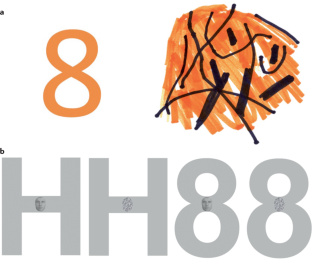
Similar content being viewed by others
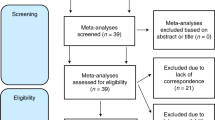
Comparing meta-analyses and preregistered multiple-laboratory replication projects

The fundamental importance of method to theory
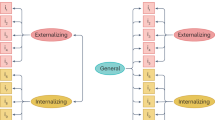
A critical evaluation of the p-factor literature
Corkin, S. Permanent Present Tense: The Unforgettable Life Of The Amnesic Patient, H. M . Vol. XIX, 364 (Basic Books, 2013).
Lilienfeld, S. O. Psychology: From Inquiry To Understanding (Pearson, 2019).
Schacter, D. L., Gilbert, D. T., Nock, M. K. & Wegner, D. M. Psychology (Worth Publishers, 2019).
Eysenck, M. W. & Brysbaert, M. Fundamentals Of Cognition (Routledge, 2018).
Squire, L. R. Memory and brain systems: 1969–2009. J. Neurosci. 29 , 12711–12716 (2009).
Article PubMed PubMed Central Google Scholar
Corkin, S. What’s new with the amnesic patient H.M.? Nat. Rev. Neurosci. 3 , 153–160 (2002).
Article PubMed Google Scholar
Schubert, T. M. et al. Lack of awareness despite complex visual processing: evidence from event-related potentials in a case of selective metamorphopsia. Proc. Natl Acad. Sci. USA 117 , 16055–16064 (2020).
Behrmann, M. & Plaut, D. C. Bilateral hemispheric processing of words and faces: evidence from word impairments in prosopagnosia and face impairments in pure alexia. Cereb. Cortex 24 , 1102–1118 (2014).
Plaut, D. C. & Behrmann, M. Complementary neural representations for faces and words: a computational exploration. Cogn. Neuropsychol. 28 , 251–275 (2011).
Haxby, J. V. et al. Distributed and overlapping representations of faces and objects in ventral temporal cortex. Science 293 , 2425–2430 (2001).
Hirshorn, E. A. et al. Decoding and disrupting left midfusiform gyrus activity during word reading. Proc. Natl Acad. Sci. USA 113 , 8162–8167 (2016).
Kosakowski, H. L. et al. Selective responses to faces, scenes, and bodies in the ventral visual pathway of infants. Curr. Biol. 32 , 265–274.e5 (2022).
Harlow, J. Passage of an iron rod through the head. Boston Med. Surgical J . https://doi.org/10.1176/jnp.11.2.281 (1848).
Broca, P. Remarks on the seat of the faculty of articulated language, following an observation of aphemia (loss of speech). Bull. Soc. Anat. 6 , 330–357 (1861).
Google Scholar
Dejerine, J. Contribution A L’étude Anatomo-pathologique Et Clinique Des Différentes Variétés De Cécité Verbale: I. Cécité Verbale Avec Agraphie Ou Troubles Très Marqués De L’écriture; II. Cécité Verbale Pure Avec Intégrité De L’écriture Spontanée Et Sous Dictée (Société de Biologie, 1892).
Liepmann, H. Das Krankheitsbild der Apraxie (“motorischen Asymbolie”) auf Grund eines Falles von einseitiger Apraxie (Fortsetzung). Eur. Neurol. 8 , 102–116 (1900).
Article Google Scholar
Basso, A., Spinnler, H., Vallar, G. & Zanobio, M. E. Left hemisphere damage and selective impairment of auditory verbal short-term memory. A case study. Neuropsychologia 20 , 263–274 (1982).
Humphreys, G. W. & Riddoch, M. J. The fractionation of visual agnosia. In Visual Object Processing: A Cognitive Neuropsychological Approach 281–306 (Lawrence Erlbaum, 1987).
Whitworth, A., Webster, J. & Howard, D. A Cognitive Neuropsychological Approach To Assessment And Intervention In Aphasia (Psychology Press, 2014).
Caramazza, A. On drawing inferences about the structure of normal cognitive systems from the analysis of patterns of impaired performance: the case for single-patient studies. Brain Cogn. 5 , 41–66 (1986).
Caramazza, A. & McCloskey, M. The case for single-patient studies. Cogn. Neuropsychol. 5 , 517–527 (1988).
Shallice, T. Cognitive neuropsychology and its vicissitudes: the fate of Caramazza’s axioms. Cogn. Neuropsychol. 32 , 385–411 (2015).
Shallice, T. From Neuropsychology To Mental Structure (Cambridge Univ. Press, 1988).
Coltheart, M. Assumptions and methods in cognitive neuropscyhology. In The Handbook Of Cognitive Neuropsychology: What Deficits Reveal About The Human Mind (ed. Rapp, B.) 3–22 (Psychology Press, 2001).
McCloskey, M. & Chaisilprungraung, T. The value of cognitive neuropsychology: the case of vision research. Cogn. Neuropsychol. 34 , 412–419 (2017).
McCloskey, M. The future of cognitive neuropsychology. In The Handbook Of Cognitive Neuropsychology: What Deficits Reveal About The Human Mind (ed. Rapp, B.) 593–610 (Psychology Press, 2001).
Lashley, K. S. In search of the engram. In Physiological Mechanisms in Animal Behavior 454–482 (Academic Press, 1950).
Squire, L. R. & Wixted, J. T. The cognitive neuroscience of human memory since H.M. Annu. Rev. Neurosci. 34 , 259–288 (2011).
Stone, G. O., Vanhoy, M. & Orden, G. C. V. Perception is a two-way street: feedforward and feedback phonology in visual word recognition. J. Mem. Lang. 36 , 337–359 (1997).
Perfetti, C. A. The psycholinguistics of spelling and reading. In Learning To Spell: Research, Theory, And Practice Across Languages 21–38 (Lawrence Erlbaum, 1997).
Nickels, L. The autocue? self-generated phonemic cues in the treatment of a disorder of reading and naming. Cogn. Neuropsychol. 9 , 155–182 (1992).
Rapp, B., Benzing, L. & Caramazza, A. The autonomy of lexical orthography. Cogn. Neuropsychol. 14 , 71–104 (1997).
Bonin, P., Roux, S. & Barry, C. Translating nonverbal pictures into verbal word names. Understanding lexical access and retrieval. In Past, Present, And Future Contributions Of Cognitive Writing Research To Cognitive Psychology 315–522 (Psychology Press, 2011).
Bonin, P., Fayol, M. & Gombert, J.-E. Role of phonological and orthographic codes in picture naming and writing: an interference paradigm study. Cah. Psychol. Cogn./Current Psychol. Cogn. 16 , 299–324 (1997).
Bonin, P., Fayol, M. & Peereman, R. Masked form priming in writing words from pictures: evidence for direct retrieval of orthographic codes. Acta Psychol. 99 , 311–328 (1998).
Bentin, S., Allison, T., Puce, A., Perez, E. & McCarthy, G. Electrophysiological studies of face perception in humans. J. Cogn. Neurosci. 8 , 551–565 (1996).
Jeffreys, D. A. Evoked potential studies of face and object processing. Vis. Cogn. 3 , 1–38 (1996).
Laganaro, M., Morand, S., Michel, C. M., Spinelli, L. & Schnider, A. ERP correlates of word production before and after stroke in an aphasic patient. J. Cogn. Neurosci. 23 , 374–381 (2011).
Indefrey, P. & Levelt, W. J. M. The spatial and temporal signatures of word production components. Cognition 92 , 101–144 (2004).
Valente, A., Burki, A. & Laganaro, M. ERP correlates of word production predictors in picture naming: a trial by trial multiple regression analysis from stimulus onset to response. Front. Neurosci. 8 , 390 (2014).
Kittredge, A. K., Dell, G. S., Verkuilen, J. & Schwartz, M. F. Where is the effect of frequency in word production? Insights from aphasic picture-naming errors. Cogn. Neuropsychol. 25 , 463–492 (2008).
Domdei, N. et al. Ultra-high contrast retinal display system for single photoreceptor psychophysics. Biomed. Opt. Express 9 , 157 (2018).
Poldrack, R. A. et al. Long-term neural and physiological phenotyping of a single human. Nat. Commun. 6 , 8885 (2015).
Coltheart, M. The assumptions of cognitive neuropsychology: reflections on Caramazza (1984, 1986). Cogn. Neuropsychol. 34 , 397–402 (2017).
Badecker, W. & Caramazza, A. A final brief in the case against agrammatism: the role of theory in the selection of data. Cognition 24 , 277–282 (1986).
Fischer-Baum, S. Making sense of deviance: Identifying dissociating cases within the case series approach. Cogn. Neuropsychol. 30 , 597–617 (2013).
Nickels, L., Howard, D. & Best, W. On the use of different methodologies in cognitive neuropsychology: drink deep and from several sources. Cogn. Neuropsychol. 28 , 475–485 (2011).
Dell, G. S. & Schwartz, M. F. Who’s in and who’s out? Inclusion criteria, model evaluation, and the treatment of exceptions in case series. Cogn. Neuropsychol. 28 , 515–520 (2011).
Schwartz, M. F. & Dell, G. S. Case series investigations in cognitive neuropsychology. Cogn. Neuropsychol. 27 , 477–494 (2010).
Cohen, J. A power primer. Psychol. Bull. 112 , 155–159 (1992).
Martin, R. C. & Allen, C. Case studies in neuropsychology. In APA Handbook Of Research Methods In Psychology Vol. 2 Research Designs: Quantitative, Qualitative, Neuropsychological, And Biological (eds Cooper, H. et al.) 633–646 (American Psychological Association, 2012).
Leivada, E., Westergaard, M., Duñabeitia, J. A. & Rothman, J. On the phantom-like appearance of bilingualism effects on neurocognition: (how) should we proceed? Bilingualism 24 , 197–210 (2021).
Arnett, J. J. The neglected 95%: why American psychology needs to become less American. Am. Psychol. 63 , 602–614 (2008).
Stolz, J. A., Besner, D. & Carr, T. H. Implications of measures of reliability for theories of priming: activity in semantic memory is inherently noisy and uncoordinated. Vis. Cogn. 12 , 284–336 (2005).
Cipora, K. et al. A minority pulls the sample mean: on the individual prevalence of robust group-level cognitive phenomena — the instance of the SNARC effect. Preprint at psyArXiv https://doi.org/10.31234/osf.io/bwyr3 (2019).
Andrews, S., Lo, S. & Xia, V. Individual differences in automatic semantic priming. J. Exp. Psychol. Hum. Percept. Perform. 43 , 1025–1039 (2017).
Tan, L. C. & Yap, M. J. Are individual differences in masked repetition and semantic priming reliable? Vis. Cogn. 24 , 182–200 (2016).
Olsson-Collentine, A., Wicherts, J. M. & van Assen, M. A. L. M. Heterogeneity in direct replications in psychology and its association with effect size. Psychol. Bull. 146 , 922–940 (2020).
Gratton, C. & Braga, R. M. Editorial overview: deep imaging of the individual brain: past, practice, and promise. Curr. Opin. Behav. Sci. 40 , iii–vi (2021).
Fedorenko, E. The early origins and the growing popularity of the individual-subject analytic approach in human neuroscience. Curr. Opin. Behav. Sci. 40 , 105–112 (2021).
Xue, A. et al. The detailed organization of the human cerebellum estimated by intrinsic functional connectivity within the individual. J. Neurophysiol. 125 , 358–384 (2021).
Petit, S. et al. Toward an individualized neural assessment of receptive language in children. J. Speech Lang. Hear. Res. 63 , 2361–2385 (2020).
Jung, K.-H. et al. Heterogeneity of cerebral white matter lesions and clinical correlates in older adults. Stroke 52 , 620–630 (2021).
Falcon, M. I., Jirsa, V. & Solodkin, A. A new neuroinformatics approach to personalized medicine in neurology: the virtual brain. Curr. Opin. Neurol. 29 , 429–436 (2016).
Duncan, G. J., Engel, M., Claessens, A. & Dowsett, C. J. Replication and robustness in developmental research. Dev. Psychol. 50 , 2417–2425 (2014).
Open Science Collaboration. Estimating the reproducibility of psychological science. Science 349 , aac4716 (2015).
Tackett, J. L., Brandes, C. M., King, K. M. & Markon, K. E. Psychology’s replication crisis and clinical psychological science. Annu. Rev. Clin. Psychol. 15 , 579–604 (2019).
Munafò, M. R. et al. A manifesto for reproducible science. Nat. Hum. Behav. 1 , 0021 (2017).
Oldfield, R. C. & Wingfield, A. The time it takes to name an object. Nature 202 , 1031–1032 (1964).
Oldfield, R. C. & Wingfield, A. Response latencies in naming objects. Q. J. Exp. Psychol. 17 , 273–281 (1965).
Brysbaert, M. How many participants do we have to include in properly powered experiments? A tutorial of power analysis with reference tables. J. Cogn. 2 , 16 (2019).
Brysbaert, M. Power considerations in bilingualism research: time to step up our game. Bilingualism https://doi.org/10.1017/S1366728920000437 (2020).
Machery, E. What is a replication? Phil. Sci. 87 , 545–567 (2020).
Nosek, B. A. & Errington, T. M. What is replication? PLoS Biol. 18 , e3000691 (2020).
Li, X., Huang, L., Yao, P. & Hyönä, J. Universal and specific reading mechanisms across different writing systems. Nat. Rev. Psychol. 1 , 133–144 (2022).
Rapp, B. (Ed.) The Handbook Of Cognitive Neuropsychology: What Deficits Reveal About The Human Mind (Psychology Press, 2001).
Code, C. et al. Classic Cases In Neuropsychology (Psychology Press, 1996).
Patterson, K., Marshall, J. C. & Coltheart, M. Surface Dyslexia: Neuropsychological And Cognitive Studies Of Phonological Reading (Routledge, 2017).
Marshall, J. C. & Newcombe, F. Patterns of paralexia: a psycholinguistic approach. J. Psycholinguist. Res. 2 , 175–199 (1973).
Castles, A. & Coltheart, M. Varieties of developmental dyslexia. Cognition 47 , 149–180 (1993).
Khentov-Kraus, L. & Friedmann, N. Vowel letter dyslexia. Cogn. Neuropsychol. 35 , 223–270 (2018).
Winskel, H. Orthographic and phonological parafoveal processing of consonants, vowels, and tones when reading Thai. Appl. Psycholinguist. 32 , 739–759 (2011).
Hepner, C., McCloskey, M. & Rapp, B. Do reading and spelling share orthographic representations? Evidence from developmental dysgraphia. Cogn. Neuropsychol. 34 , 119–143 (2017).
Hanley, J. R. & Sotiropoulos, A. Developmental surface dysgraphia without surface dyslexia. Cogn. Neuropsychol. 35 , 333–341 (2018).
Zihl, J. & Heywood, C. A. The contribution of single case studies to the neuroscience of vision: single case studies in vision neuroscience. Psych. J. 5 , 5–17 (2016).
Bouvier, S. E. & Engel, S. A. Behavioral deficits and cortical damage loci in cerebral achromatopsia. Cereb. Cortex 16 , 183–191 (2006).
Zihl, J. & Heywood, C. A. The contribution of LM to the neuroscience of movement vision. Front. Integr. Neurosci. 9 , 6 (2015).
Dotan, D. & Friedmann, N. Separate mechanisms for number reading and word reading: evidence from selective impairments. Cortex 114 , 176–192 (2019).
McCloskey, M. & Schubert, T. Shared versus separate processes for letter and digit identification. Cogn. Neuropsychol. 31 , 437–460 (2014).
Fayol, M. & Seron, X. On numerical representations. Insights from experimental, neuropsychological, and developmental research. In Handbook of Mathematical Cognition (ed. Campbell, J.) 3–23 (Psychological Press, 2005).
Bornstein, B. & Kidron, D. P. Prosopagnosia. J. Neurol. Neurosurg. Psychiat. 22 , 124–131 (1959).
Kühn, C. D., Gerlach, C., Andersen, K. B., Poulsen, M. & Starrfelt, R. Face recognition in developmental dyslexia: evidence for dissociation between faces and words. Cogn. Neuropsychol. 38 , 107–115 (2021).
Barton, J. J. S., Albonico, A., Susilo, T., Duchaine, B. & Corrow, S. L. Object recognition in acquired and developmental prosopagnosia. Cogn. Neuropsychol. 36 , 54–84 (2019).
Renault, B., Signoret, J.-L., Debruille, B., Breton, F. & Bolgert, F. Brain potentials reveal covert facial recognition in prosopagnosia. Neuropsychologia 27 , 905–912 (1989).
Bauer, R. M. Autonomic recognition of names and faces in prosopagnosia: a neuropsychological application of the guilty knowledge test. Neuropsychologia 22 , 457–469 (1984).
Haan, E. H. F., de, Young, A. & Newcombe, F. Face recognition without awareness. Cogn. Neuropsychol. 4 , 385–415 (1987).
Ellis, H. D. & Lewis, M. B. Capgras delusion: a window on face recognition. Trends Cogn. Sci. 5 , 149–156 (2001).
Ellis, H. D., Young, A. W., Quayle, A. H. & De Pauw, K. W. Reduced autonomic responses to faces in Capgras delusion. Proc. R. Soc. Lond. B 264 , 1085–1092 (1997).
Collins, M. N., Hawthorne, M. E., Gribbin, N. & Jacobson, R. Capgras’ syndrome with organic disorders. Postgrad. Med. J. 66 , 1064–1067 (1990).
Enoch, D., Puri, B. K. & Ball, H. Uncommon Psychiatric Syndromes 5th edn (Routledge, 2020).
Tranel, D., Damasio, H. & Damasio, A. R. Double dissociation between overt and covert face recognition. J. Cogn. Neurosci. 7 , 425–432 (1995).
Brighetti, G., Bonifacci, P., Borlimi, R. & Ottaviani, C. “Far from the heart far from the eye”: evidence from the Capgras delusion. Cogn. Neuropsychiat. 12 , 189–197 (2007).
Coltheart, M., Langdon, R. & McKay, R. Delusional belief. Annu. Rev. Psychol. 62 , 271–298 (2011).
Coltheart, M. Cognitive neuropsychiatry and delusional belief. Q. J. Exp. Psychol. 60 , 1041–1062 (2007).
Coltheart, M. & Davies, M. How unexpected observations lead to new beliefs: a Peircean pathway. Conscious. Cogn. 87 , 103037 (2021).
Coltheart, M. & Davies, M. Failure of hypothesis evaluation as a factor in delusional belief. Cogn. Neuropsychiat. 26 , 213–230 (2021).
McCloskey, M. et al. A developmental deficit in localizing objects from vision. Psychol. Sci. 6 , 112–117 (1995).
McCloskey, M., Valtonen, J. & Cohen Sherman, J. Representing orientation: a coordinate-system hypothesis and evidence from developmental deficits. Cogn. Neuropsychol. 23 , 680–713 (2006).
McCloskey, M. Spatial representations and multiple-visual-systems hypotheses: evidence from a developmental deficit in visual location and orientation processing. Cortex 40 , 677–694 (2004).
Gregory, E. & McCloskey, M. Mirror-image confusions: implications for representation and processing of object orientation. Cognition 116 , 110–129 (2010).
Gregory, E., Landau, B. & McCloskey, M. Representation of object orientation in children: evidence from mirror-image confusions. Vis. Cogn. 19 , 1035–1062 (2011).
Laine, M. & Martin, N. Cognitive neuropsychology has been, is, and will be significant to aphasiology. Aphasiology 26 , 1362–1376 (2012).
Howard, D. & Patterson, K. The Pyramids And Palm Trees Test: A Test Of Semantic Access From Words And Pictures (Thames Valley Test Co., 1992).
Kay, J., Lesser, R. & Coltheart, M. PALPA: Psycholinguistic Assessments Of Language Processing In Aphasia. 2: Picture & Word Semantics, Sentence Comprehension (Erlbaum, 2001).
Franklin, S. Dissociations in auditory word comprehension; evidence from nine fluent aphasic patients. Aphasiology 3 , 189–207 (1989).
Howard, D., Swinburn, K. & Porter, G. Putting the CAT out: what the comprehensive aphasia test has to offer. Aphasiology 24 , 56–74 (2010).
Conti-Ramsden, G., Crutchley, A. & Botting, N. The extent to which psychometric tests differentiate subgroups of children with SLI. J. Speech Lang. Hear. Res. 40 , 765–777 (1997).
Bishop, D. V. M. & McArthur, G. M. Individual differences in auditory processing in specific language impairment: a follow-up study using event-related potentials and behavioural thresholds. Cortex 41 , 327–341 (2005).
Bishop, D. V. M., Snowling, M. J., Thompson, P. A. & Greenhalgh, T., and the CATALISE-2 consortium. Phase 2 of CATALISE: a multinational and multidisciplinary Delphi consensus study of problems with language development: terminology. J. Child. Psychol. Psychiat. 58 , 1068–1080 (2017).
Wilson, A. J. et al. Principles underlying the design of ‘the number race’, an adaptive computer game for remediation of dyscalculia. Behav. Brain Funct. 2 , 19 (2006).
Basso, A. & Marangolo, P. Cognitive neuropsychological rehabilitation: the emperor’s new clothes? Neuropsychol. Rehabil. 10 , 219–229 (2000).
Murad, M. H., Asi, N., Alsawas, M. & Alahdab, F. New evidence pyramid. Evidence-based Med. 21 , 125–127 (2016).
Greenhalgh, T., Howick, J. & Maskrey, N., for the Evidence Based Medicine Renaissance Group. Evidence based medicine: a movement in crisis? Br. Med. J. 348 , g3725–g3725 (2014).
Best, W., Ping Sze, W., Edmundson, A. & Nickels, L. What counts as evidence? Swimming against the tide: valuing both clinically informed experimentally controlled case series and randomized controlled trials in intervention research. Evidence-based Commun. Assess. Interv. 13 , 107–135 (2019).
Best, W. et al. Understanding differing outcomes from semantic and phonological interventions with children with word-finding difficulties: a group and case series study. Cortex 134 , 145–161 (2021).
OCEBM Levels of Evidence Working Group. The Oxford Levels of Evidence 2. CEBM https://www.cebm.ox.ac.uk/resources/levels-of-evidence/ocebm-levels-of-evidence (2011).
Holler, D. E., Behrmann, M. & Snow, J. C. Real-world size coding of solid objects, but not 2-D or 3-D images, in visual agnosia patients with bilateral ventral lesions. Cortex 119 , 555–568 (2019).
Duchaine, B. C., Yovel, G., Butterworth, E. J. & Nakayama, K. Prosopagnosia as an impairment to face-specific mechanisms: elimination of the alternative hypotheses in a developmental case. Cogn. Neuropsychol. 23 , 714–747 (2006).
Hartley, T. et al. The hippocampus is required for short-term topographical memory in humans. Hippocampus 17 , 34–48 (2007).
Pishnamazi, M. et al. Attentional bias towards and away from fearful faces is modulated by developmental amygdala damage. Cortex 81 , 24–34 (2016).
Rapp, B., Fischer-Baum, S. & Miozzo, M. Modality and morphology: what we write may not be what we say. Psychol. Sci. 26 , 892–902 (2015).
Yong, K. X. X., Warren, J. D., Warrington, E. K. & Crutch, S. J. Intact reading in patients with profound early visual dysfunction. Cortex 49 , 2294–2306 (2013).
Rockland, K. S. & Van Hoesen, G. W. Direct temporal–occipital feedback connections to striate cortex (V1) in the macaque monkey. Cereb. Cortex 4 , 300–313 (1994).
Haynes, J.-D., Driver, J. & Rees, G. Visibility reflects dynamic changes of effective connectivity between V1 and fusiform cortex. Neuron 46 , 811–821 (2005).
Tanaka, K. Mechanisms of visual object recognition: monkey and human studies. Curr. Opin. Neurobiol. 7 , 523–529 (1997).
Fischer-Baum, S., McCloskey, M. & Rapp, B. Representation of letter position in spelling: evidence from acquired dysgraphia. Cognition 115 , 466–490 (2010).
Houghton, G. The problem of serial order: a neural network model of sequence learning and recall. In Current Research In Natural Language Generation (eds Dale, R., Mellish, C. & Zock, M.) 287–319 (Academic Press, 1990).
Fieder, N., Nickels, L., Biedermann, B. & Best, W. From “some butter” to “a butter”: an investigation of mass and count representation and processing. Cogn. Neuropsychol. 31 , 313–349 (2014).
Fieder, N., Nickels, L., Biedermann, B. & Best, W. How ‘some garlic’ becomes ‘a garlic’ or ‘some onion’: mass and count processing in aphasia. Neuropsychologia 75 , 626–645 (2015).
Schröder, A., Burchert, F. & Stadie, N. Training-induced improvement of noncanonical sentence production does not generalize to comprehension: evidence for modality-specific processes. Cogn. Neuropsychol. 32 , 195–220 (2015).
Stadie, N. et al. Unambiguous generalization effects after treatment of non-canonical sentence production in German agrammatism. Brain Lang. 104 , 211–229 (2008).
Schapiro, A. C., Gregory, E., Landau, B., McCloskey, M. & Turk-Browne, N. B. The necessity of the medial temporal lobe for statistical learning. J. Cogn. Neurosci. 26 , 1736–1747 (2014).
Schapiro, A. C., Kustner, L. V. & Turk-Browne, N. B. Shaping of object representations in the human medial temporal lobe based on temporal regularities. Curr. Biol. 22 , 1622–1627 (2012).
Baddeley, A., Vargha-Khadem, F. & Mishkin, M. Preserved recognition in a case of developmental amnesia: implications for the acaquisition of semantic memory? J. Cogn. Neurosci. 13 , 357–369 (2001).
Snyder, J. J. & Chatterjee, A. Spatial-temporal anisometries following right parietal damage. Neuropsychologia 42 , 1703–1708 (2004).
Ashkenazi, S., Henik, A., Ifergane, G. & Shelef, I. Basic numerical processing in left intraparietal sulcus (IPS) acalculia. Cortex 44 , 439–448 (2008).
Lebrun, M.-A., Moreau, P., McNally-Gagnon, A., Mignault Goulet, G. & Peretz, I. Congenital amusia in childhood: a case study. Cortex 48 , 683–688 (2012).
Vannuscorps, G., Andres, M. & Pillon, A. When does action comprehension need motor involvement? Evidence from upper limb aplasia. Cogn. Neuropsychol. 30 , 253–283 (2013).
Jeannerod, M. Neural simulation of action: a unifying mechanism for motor cognition. NeuroImage 14 , S103–S109 (2001).
Blakemore, S.-J. & Decety, J. From the perception of action to the understanding of intention. Nat. Rev. Neurosci. 2 , 561–567 (2001).
Rizzolatti, G. & Craighero, L. The mirror-neuron system. Annu. Rev. Neurosci. 27 , 169–192 (2004).
Forde, E. M. E., Humphreys, G. W. & Remoundou, M. Disordered knowledge of action order in action disorganisation syndrome. Neurocase 10 , 19–28 (2004).
Mazzi, C. & Savazzi, S. The glamor of old-style single-case studies in the neuroimaging era: insights from a patient with hemianopia. Front. Psychol. 10 , 965 (2019).
Coltheart, M. What has functional neuroimaging told us about the mind (so far)? (Position Paper Presented to the European Cognitive Neuropsychology Workshop, Bressanone, 2005). Cortex 42 , 323–331 (2006).
Page, M. P. A. What can’t functional neuroimaging tell the cognitive psychologist? Cortex 42 , 428–443 (2006).
Blank, I. A., Kiran, S. & Fedorenko, E. Can neuroimaging help aphasia researchers? Addressing generalizability, variability, and interpretability. Cogn. Neuropsychol. 34 , 377–393 (2017).
Niv, Y. The primacy of behavioral research for understanding the brain. Behav. Neurosci. 135 , 601–609 (2021).
Crawford, J. R. & Howell, D. C. Comparing an individual’s test score against norms derived from small samples. Clin. Neuropsychol. 12 , 482–486 (1998).
Crawford, J. R., Garthwaite, P. H. & Ryan, K. Comparing a single case to a control sample: testing for neuropsychological deficits and dissociations in the presence of covariates. Cortex 47 , 1166–1178 (2011).
McIntosh, R. D. & Rittmo, J. Ö. Power calculations in single-case neuropsychology: a practical primer. Cortex 135 , 146–158 (2021).
Patterson, K. & Plaut, D. C. “Shallow draughts intoxicate the brain”: lessons from cognitive science for cognitive neuropsychology. Top. Cogn. Sci. 1 , 39–58 (2009).
Lambon Ralph, M. A., Patterson, K. & Plaut, D. C. Finite case series or infinite single-case studies? Comments on “Case series investigations in cognitive neuropsychology” by Schwartz and Dell (2010). Cogn. Neuropsychol. 28 , 466–474 (2011).
Horien, C., Shen, X., Scheinost, D. & Constable, R. T. The individual functional connectome is unique and stable over months to years. NeuroImage 189 , 676–687 (2019).
Epelbaum, S. et al. Pure alexia as a disconnection syndrome: new diffusion imaging evidence for an old concept. Cortex 44 , 962–974 (2008).
Fischer-Baum, S. & Campana, G. Neuroplasticity and the logic of cognitive neuropsychology. Cogn. Neuropsychol. 34 , 403–411 (2017).
Paul, S., Baca, E. & Fischer-Baum, S. Cerebellar contributions to orthographic working memory: a single case cognitive neuropsychological investigation. Neuropsychologia 171 , 108242 (2022).
Feinstein, J. S., Adolphs, R., Damasio, A. & Tranel, D. The human amygdala and the induction and experience of fear. Curr. Biol. 21 , 34–38 (2011).
Crawford, J., Garthwaite, P. & Gray, C. Wanted: fully operational definitions of dissociations in single-case studies. Cortex 39 , 357–370 (2003).
McIntosh, R. D. Simple dissociations for a higher-powered neuropsychology. Cortex 103 , 256–265 (2018).
McIntosh, R. D. & Brooks, J. L. Current tests and trends in single-case neuropsychology. Cortex 47 , 1151–1159 (2011).
Best, W., Schröder, A. & Herbert, R. An investigation of a relative impairment in naming non-living items: theoretical and methodological implications. J. Neurolinguistics 19 , 96–123 (2006).
Franklin, S., Howard, D. & Patterson, K. Abstract word anomia. Cogn. Neuropsychol. 12 , 549–566 (1995).
Coltheart, M., Patterson, K. E. & Marshall, J. C. Deep Dyslexia (Routledge, 1980).
Nickels, L., Kohnen, S. & Biedermann, B. An untapped resource: treatment as a tool for revealing the nature of cognitive processes. Cogn. Neuropsychol. 27 , 539–562 (2010).
Download references
Acknowledgements
The authors thank all of those pioneers of and advocates for single case study research who have mentored, inspired and encouraged us over the years, and the many other colleagues with whom we have discussed these issues.
Author information
Authors and affiliations.
School of Psychological Sciences & Macquarie University Centre for Reading, Macquarie University, Sydney, New South Wales, Australia
Lyndsey Nickels
NHMRC Centre of Research Excellence in Aphasia Recovery and Rehabilitation, Australia
Psychological Sciences, Rice University, Houston, TX, USA
Simon Fischer-Baum
Psychology and Language Sciences, University College London, London, UK
You can also search for this author in PubMed Google Scholar
Contributions
L.N. led and was primarily responsible for the structuring and writing of the manuscript. All authors contributed to all aspects of the article.
Corresponding author
Correspondence to Lyndsey Nickels .
Ethics declarations
Competing interests.
The authors declare no competing interests.
Peer review
Peer review information.
Nature Reviews Psychology thanks Yanchao Bi, Rob McIntosh, and the other, anonymous, reviewer for their contribution to the peer review of this work.
Additional information
Publisher’s note Springer Nature remains neutral with regard to jurisdictional claims in published maps and institutional affiliations.
Rights and permissions
Springer Nature or its licensor (e.g. a society or other partner) holds exclusive rights to this article under a publishing agreement with the author(s) or other rightsholder(s); author self-archiving of the accepted manuscript version of this article is solely governed by the terms of such publishing agreement and applicable law.
Reprints and permissions
About this article
Cite this article.
Nickels, L., Fischer-Baum, S. & Best, W. Single case studies are a powerful tool for developing, testing and extending theories. Nat Rev Psychol 1 , 733–747 (2022). https://doi.org/10.1038/s44159-022-00127-y
Download citation
Accepted : 13 October 2022
Published : 22 November 2022
Issue Date : December 2022
DOI : https://doi.org/10.1038/s44159-022-00127-y
Share this article
Anyone you share the following link with will be able to read this content:
Sorry, a shareable link is not currently available for this article.
Provided by the Springer Nature SharedIt content-sharing initiative
Quick links
- Explore articles by subject
- Guide to authors
- Editorial policies
Sign up for the Nature Briefing newsletter — what matters in science, free to your inbox daily.

How to Write a Good Case Study in Psychology (A Step-by-Step Guide)
- March 4, 2022
- Teaching Kids
A case study psychology is a type of research that uses real-life examples to help understand psychological concepts. This type of research can be used in a variety of settings, such as business, health care, education, and social services.
Case studies are typically composed of three parts: the problem or issue, the intervention or treatment, and the outcome. The problem or issue is what caused the person to seek help, and the intervention or treatment is what was done to try to solve it. The outcome is how things changed after the intervention or treatment was implemented.
Step by step instructions on how to write an effective case study in Psychology
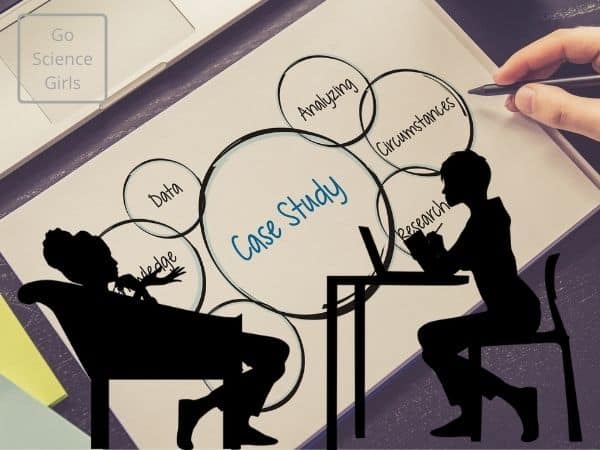
1. Gain Knowledge About The Topic
To write a case study in psychology, you will need to do some research on the topic you are writing about. Make sure that you read journal articles, books, a case study example, and any other reliable sources in order to get a comprehensive understanding of the topic. You will also need to find a suitable example or examples of how psychological concepts have been applied in real-life situations. For example, a psychology student might interview a friend about how she balances her time between work and studies.
2. Research the Individual or Event
In this case, you can choose either a person or an event for your case study research. If you are writing about a specific event, look for past issues that relate to it and any ongoing ones that may have a connection to it.
You may choose to write about a specific problem or situation that affected the individual in some way, such as how it relates to their psychology. For example, you may want to study a man who has been in relationships with several women within the same time period and what effects this has on them.
If you are writing about a person, obtain biographical information and look for any psychological assessments that have been done on the individual.
3. Analyze The Information
Once you have gathered all the necessary information, it is time to go through it and identify important facts that will influence your paper.
This is where you use your skills of inductive and deductive reasoning, to analyze the information that you have gathered. You will usually look for patterns within this information and draw conclusions about how it has affected or contributed to their psychology.
Summarize each point in order to make note-taking easier later on when writing your case study.
4. Draft A Plan
Once you have gathered all the relevant information, it is time to start drafting a plan for your case study. This case study format should include an introduction, body, and conclusion.
The body of the case study should be divided into different sections that will discuss different aspects of the topic. Make sure that your argument is clear and concise, and that you use data to support your ideas, rather than simply stating them as facts or personal opinions.
5. Structure Your Work
As mentioned in the previous step, the body of the case study should be divided into different sections for effective writing. The introduction should include a short paragraph about what you plan to write in the study and what the case study method will be, while the conclusion should summarize your argument and leave the reader with a sense of closure. Each section in the body should have its own heading to help the reader follow your line of argument.
6. Write The Case Study
Now that you have a plan and structure for your case study, it is time to start writing!
Even if you are writing a case study on your own, break it down into small sections and make sure you include every aspect of the topic within each section. Think about how you will present your case study and what points are essential to make in the body.
Include details, quotes, infographics or numeric data that help support your arguments and overall conclusion. This is what makes a great case study: An overview of every aspect of the topic researched within it!
7. Write a Theoretical Introduction
In this section, you will introduce your topic and explain why it is significant in relation to the area of psychology that you are studying.
In the theoretical introduction, you will write about the basic principles of human psychology and growth, then explain how you think this situation relates to your study topic.
After explaining the theoretical part in detail, state why studying this particular aspect will help psychologists understand aspects of humanity within different areas such as sociology or anthropology.
8. Describe How The Individual or Event Was Studied
Researchers in psychology write case studies to gain an in-depth understanding of specific topics pertaining to their field. For this reason, you should explain how you came across your sources of information and why this was beneficial to your research.
In describing how the individual or event was studied, you may also include information about what you discovered through your research and why it is important.
9. Write a Conclusion
In this part of your essay, bring together all key points discussed in the course of writing the case study. You should summarize what you have written and state your own conclusions based on the research that you have conducted.
10. Edit And Proofread The Case Study
Once you have finished writing the case study, it is important to edit and proofread it carefully. This will help to correct any grammatical errors that may have slipped into the writing process, and will also ensure that you are producing an accurate document. You might find it helpful to seek advice from someone who has experience in this field before sending it off for submission.
11. Submit It To The Appropriate Sources
When submitting your case study, make sure that you are sending it to the correct journal or publication. Check the submission guidelines carefully to make sure that your case study meets all the requirements.
By following these steps, you can create a well-written case study that will provide readers with a clear understanding of the topic at hand. Remember to take your time while researching and writing, and to be as thorough as possible in order to produce a high-quality document. Good luck!
Leave a Reply Cancel Reply
Your email address will not be published. Required fields are marked *
Name *
Email *
Add Comment *
Save my name, email, and website in this browser for the next time I comment.
Post Comment
Click Here for Free Mind/Body Tools

Revealing the Hidden Consequences: Real-life Case Studies in Stress and Anxiety
In today's fast-paced world, stress and anxiety are part and parcel of everyday life. While they are natural reactions to challenging circumstances, persistent, poorly managed stress can result in serious health outcomes. The stress behind the development of these illnesses is often not seen or well-treated since it is invisible and doesn't show up on x-rays or lab tests.
Case Study 1: The Physical Toll of Chronic Stress and Anxiety
John, a middle-aged executive, experienced chronic stress due to work and family pressure, leading to a range of health issues. Having never learned good stress management skills, John overate, drank too much coffee in the daytime and alcohol in the evening, and made no time for exercise or relaxation in his overbusy days.
He didn’t complain or even recognize how stressed he was since all his colleagues and friends seemed to be dealing with the same issues. He didn't recognize the signs of stress but over a few years accumulated a number of medical diagnoses and medications to go with them.
- Eating on the run and too much coffee and alcohol gave him chronic heartburn, diagnosed as “GERD” (GastroEsophageal Reflux Disease) and treated with omeprazole and antacids
- John developed high blood pressure and high cholesterol, putting him at high risk for heart disease and stroke, so was given blood pressure medications and statin medication
- His increasingly poor sleep was treated with Trazodone, a medication that knocked him out but left him feeling groggy and starting his day with 2 or 3 large cups of coffee
- As he became increasingly exhausted and using more alcohol, he got crankier and more irritable, early signs of depression in men. His doctor started him on an antidepressant which helped his mood, but didn't help him change his lifestyle which was at the root of all these “diagnoses.”
Case Study 2: Mental and Emotional Consequences
Susan, a school teacher, faced constant anxiety due to high workload and financial problems. This prolonged exposure to unmanaged stress and anxiety led to:
- Emotional Burnout: Over time, Susan experienced emotional exhaustion leading to feelings of detachment, a condition often referred to as burnout.
- Cognitive Difficulties: Chronic stress and burnout affected her ability to concentrate, plan, and make good decisions.
- Depression: Eventually, persistent stress and anxiety triggered the onset of depression in Susan
Case Study 3: The Social Impact
Emma, a college student suffering from chronic stress, worry, and anxiety, exhibited changes in her social behavior:
- Isolation: She started withdrawing from her friends and social activities, leading to feelings of loneliness and even more stress.
- Conflict: Her stress made her irritable, leading to increased conflict in her personal relationships, worsening her isolation and loneliness.
Identifying these signs of too much stress is the first step towards recovery. None of these people had an illness or disease – they were overstressed and didn't have the tools or support to help them manage it. There are many techniques and tools that can help to keep stress and anxiety at manageable levels:
- Mindfulness and Meditation: Techniques like these helped John stay focused on the present moment, reducing his stress levels.
- Physical Activity: Regular exercise assisted Susan in reducing her stress. It served as a natural mood enhancer and distracted her from constant worry.
- Balanced Diet: Emma found that a healthy diet helped combat her stress. Certain foods even assisted in reducing stress, such as those rich in omega-3 fatty acids and vitamin C.
- Guided Imagery: Upon recognizing the detrimental effects of stress and anxiety on their daily lives, John, Susan, and Emma decided to learn how to reduce stress and manage it better when it couldn’t be avoided. Either on their own or with the urging of a therapist, they discovered relaxation and guided imagery. The skills and practices they learned became a keystone of their healthy lifestyle, playing a significant role in alleviating their stress and anxiety and guiding them towards recovery.
Recognizing the signs of excessive stress and anxiety is the first step towards effectively managing them. Learning good elf-care stress and anxiety reduction skills is the second step. If you’re too overwhelmed or mired down in the stress, professional help you dig out of it. Remember, seeking help and making strides towards a healthier life is absolutely okay. Living a life free from the burden of constant worry is your right. The journey to that life begins now.
Videos To Help You
Products To Help You
The Worry Solution
The 3 Keys to Calmness

12 Inspiring Real-Life Positive Psychology Examples

While this approach has helped many people, there may be a better way to achieve individual wellbeing and tackle society’s challenges.
Positive psychology proposes that a flourishing life involves more than just the absence of problems. By cultivating positive emotions, building solid relationships, recognizing achievements, and creating meaning in our lives, we can experience profound and lasting satisfaction (Kellerman & Seligman, 2023).
In this article, we’ll explore positive psychology’s impact on various fields and showcase real-life examples of its transformative power to help us thrive in all aspects of life.
Before you continue, we thought you might like to download our three Positive Psychology Exercises for free . These science-based exercises explore fundamental aspects of positive psychology, including strengths, values, and self-compassion, and will give you the tools to enhance the wellbeing of your clients, students, or employees.
This Article Contains:
Looking at real-life examples of positive psychology, 3 practical classroom examples of positive psychology, 2 examples of positive psychology interventions, an example of positive reinforcement, an example of positive punishment, just for fun: positive correlation examples in psychology, a take-home message.
The following inspiring stories are taken from several very different populations to show how positive psychology interventions can help us flourish throughout our lives and across society.
On the battlefield
Martin Seligman (2011), one of the founding fathers of positive psychology, was surprised to receive a call from the US Army. The Army needed soldiers who were not just physically fit but psychologically ready. They wanted to ensure their forces could handle the battlefield and protect their veterans from a future of depression, divorce, addiction, and suicide.
The Army had witnessed decades of battle-worn stressed-out soldiers with degraded performance and damaged relationships at home.
Seligman (2011) recognized that the Army must change its approach, focusing on overcoming adversity by embracing resilience and growth rather than treating chronic disease.
In response, Seligman (2019) agreed to set up the Comprehensive Soldier Fitness Program, comprising psychological tests, self-improvement courses, and a pilot resilience study, soon upgraded to 1 million soldiers.
The result was a program that helped soldiers recognize and use their strengths and become more resilient. And it was popular; the soldiers themselves rated it an unprecedented 4.9 out of 5.
It was staggeringly successful.
Before and after deployment in war zones, the Army found that the soldiers who received the training “improved in emotional fitness, active coping, and optimism and catastrophized less” (Seligman, 2019, p. 319).
While everyone recognized its value in training and on the battlefield, it was at home where the difference was most notable.
Seligman (2019, p. 319) remembers one soldier telling him he’d recently been on the phone with his son, who was excited to tell him about hitting a home run in Little League. When the call ended, the little boy said, “Dad, is this really you?”
Mending broken hearts
“I conclude that optimism is robustly associated with cardiovascular health, and pessimism with cardiovascular risk” (Seligman, 2011, p. 204).
It’s a bold statement, suggesting a direct link between positive emotions and physical wellbeing, but it’s backed up by science.
We know that optimists typically take action and live more healthily. They believe their actions matter and act more readily on doctors’ advice. But other factors related to positive psychology also come into play. Social support — the quality of the relationships we maintain — is also linked to happiness and physical wellbeing (Seligman, 2011).
So, what direct evidence do we have that life satisfaction and flourishing interventions can improve our cardiovascular system?
Plenty, it seems.
When cardiac patients were given positive psychology interventions (targeting positive feelings, using personal strengths, and meaningful living), they felt better. Still more importantly, their physiology responded directly with measurable improvements to their cardiovascular markers (Nikrahan et al., 2016).
Attributes associated with positive psychology are also linked to more healthy behaviors, such as improved diets and increased physical activity, both of which significantly impact cardiac health (DuBois et al., 2012).
In a 2018 pilot study where patients with heart failure completed positive psychology exercises (such as writing gratitude letters and using personal strengths), they were more likely to adhere to the guidance they received regarding healthy living (Celano et al., 2018).
Play to your strengths
Stressful situations are not only found in battle. Busy, high-pressure working environments often leave employees strained. When the stress is prolonged and outside the employees’ control, it can lead to mental, emotional, and physical exhaustion — and even burnout (Kolomitro et al., 2019).
Positive psychology has proven to be a powerful tool in the workplace, helping staff manage stress, become more resilient, and experience growth and flourishing (Boniwell & Tunariu, 2019).
Southwest Airlines offers a great example of how psychology can help turn a company around and improve the lives of its employees. In the early 2000s, the airline struggled because of high operating costs and fierce competition from other airlines.
In response, CEO Gary Kelly turned to positive psychology, using a strengths-based approach to transform the organization and its staff (Southwest Airlines, n.d.).
They began by using the CliftonStrengths™ assessment tool to identify each employee’s unique strengths. Next, they helped staff members understand their strengths and how to use them to contribute to their personal success and that of Southwest Airlines. As a result, employees felt more engaged and motivated, and the company used their talents better.
Second, they aligned employee strengths with the company’s mission and values, particularly customer service and making flying a positive experience for its customers. In doing so, the company created a culture of service excellence that set it apart from its competitors (Southwest Airlines, n.d.).
Third, they used employee strengths to drive innovation and efficiency. For example, Southwest Airlines empowered their creative and innovative employees to share their ideas and implement process improvements, saving the company time and money and improving the customer experience.
It was a success. They turned a struggling airline into one of the most successful and beloved brands in the airline industry. And crucially, it showed the potential of a positive psychology-based set of interventions to help a company (and its staff) achieve better results (Southwest Airlines, n.d.).

Penn Resiliency Program
The Penn Resiliency Program (PRP) is evidence based and underpinned by the theory and practice of positive psychology. It aims “to increase students’ ability to handle day-to-day problems that are common during adolescence” (Seligman, 2011, p. 81).
The program takes place in schools, teaching children how to (Boniwell & Tunariu, 2019):
- Identify their feelings
- Develop a tolerance for ambiguity
- Adopt an optimistic explanatory style
- Analyze the cause of problems
- Develop empathy
- Build self-efficacy
- Take on new challenges
PRP teaches students resilience and an optimistic outlook by encouraging them to think realistically and flexibly about their problems (Boniwell & Tunariu, 2019).
The positive results speak for themselves. Students from diverse ethnic backgrounds across various countries and community settings that have been through the program are (Seligman, 2011):
- More optimistic
- Less hopeless
- Experiencing greater wellbeing
- At a lowered risk of depression
- Less likely to experience anxiety
- Less aggressive
- Less delinquent
Geelong Grammar School Project
The Geelong Grammar School was founded over 150 years ago and is the oldest boarding school in Australia. Its year-nine students spend an entire year at the Timbertop campus. The setting is beautiful, and the experience rugged. For example, if they want a hot shower, they must be ready to chop firewood (Seligman, 2011).
When asked to introduce the principles of positive psychology to the school, Seligman (2011) brought in 15 trainers and began with a nine-day course to train the teachers. After that, several trainers remained in residence for the entire year.
In time, the teachers embedded positive psychology principles into everything: sports, music, the chapel, and, perhaps most importantly, academic subjects. For example, a preexisting, mandated activity requiring each student to speak about a time when they made a fool out of themselves was rewritten as “give a speech about when you were of value to others” (Seligman, 2011, p. 90).
Life even changed for the very young. Elementary teachers started each day with “What went well?”
Students and teachers began living positive psychology, and it was clear outside the class. Parents reported that their children were more helpful at home, cleaning up without being asked, sharing, and showing more gratitude.
And it improved life for the staff. “Not one of the two hundred faculty members left Geelong Grammar at the end of the school year. Admissions, applications, and donations are way up” (Seligman, 2011, p. 93).
SPARK Resilience Program
On the other side of the world, the SPARK Resilience Program had a similarly dramatic effect on the United Kingdom. This school-based positive education program combines Cognitive-Behavioral Therapy with positive psychology and a clear goal: “fostering emotional resilience and associated skills, as well as preventing depression” (Boniwell & Tunariu, 2019, p. 248).
SPARK is an acronym that defines each of the program’s five components (Boniwell & Tunariu, 2019):
Children use hypothetical situations to understand better how their perceptions can trigger their autopilot (i.e., emotional responses, such as anger, fear, or joy). They then learn to identify their behavioral reactions while reflecting on what knowledge they have gained (Boniwell & Tunariu, 2019).
At the same time, students learn to identify and use their strengths, build problem-solving skills, and ultimately develop their resilience.
Once extensively implemented across Japan, Singapore, the Netherlands, and beyond, the SPARK resilience program had an equally dramatic impact in these areas. Pluess et al. (2017) found that students engaged in the program had dramatically lowered risks of depression and significantly higher levels of resilience.
And beyond that, the “intervention was perceived as fostering empathy and better relationships between students and teachers, extending beyond the classroom to the whole school climate” (Pluess et al., 2017, p. 14).

Download 3 Free Positive Psychology Exercises (PDF)
Enhance wellbeing with these free, science-based exercises that draw on the latest insights from positive psychology.
Download 3 Free Positive Psychology Tools Pack (PDF)
By filling out your name and email address below.
Positive psychology shifted psychology’s focus from pathology to wellbeing and flourishing. And based on research, theory, and models, it offers validated interventions to help individuals and groups create meaningful and satisfying lives (Snyder, 2021).
While there are hundreds of positive psychology interventions, the following two are popular inside and outside therapy.
Three good things
Individuals write down three good things that happened to them each day for a week. They can be significant or minor. Next to each one, they describe why they believe the good thing happened or what it means to them (Seligman, 2011).
It’s a powerful exercise, shown to boost gratitude, improve relationships, and help manage stress and burnout (Rippstein-Leuenberger et al., 2017).
Three good things – Happierdotcom
The best possible resilient self
Visualization is powerful because it can feel as real as the experience itself (Clough et al., 2021).
One popular visualization exercise in positive psychology involves the individual imagining their most resilient self (Snyder, 2021).
The individual identifies a personal challenge then reflects on and records the obstacles standing in their way. Next, they imagine how they could overcome each aspect of the situation and how it would feel to do so.
Check out this article on positive psychology interventions for more details on these and other excellent interventions.

For example, a child receives an ice cream cone after studying hard for an exam. The reward or reinforcement increases the likelihood of the behavior being repeated in the future (American Psychological Association, n.d.).
We can combine positive reinforcement with other psychological tools, such as nudges, to improve the likelihood of positive behavior. For example, we leave our gym bag out the night before for an early-morning gym session (the nudge), and we reward ourselves with a favorite coffee on the way into the office (positive reinforcement; Thaler & Sunstein, 2021).
For a deeper dive, why not read our full article on positive reinforcement .
Positive punishment is one of four parenting methods (the others are positive reinforcement, negative punishment, and negative reinforcement) initially introduced by behaviorist B. F. Skinner (1971). It involves adding something to the mix that discourages a behavior — a consequence for unwanted behavior.
Such attempts at behavioral modification are commonplace in society. For example, a teacher may give a student extra homework or detention following rowdy behavior in the classroom. Or the parent may expect their child to complete additional chores after misbehaving.
Many have questioned the effectiveness of positive punishment, especially when it takes a physical form, such as spanking (Tee-Melegrito, 2023).
For more information on its origins, applications, and risks, check out our article on positive punishment .

So, here are five that you may be interested in, though bear in mind that some of the findings may not have been replicated.
- Strike a pose Adopting a confident Wonder Woman or Superman pose is linked to increased feelings of power and affects hormone levels related to confidence and stress (Carney et al., 2010).
- Musical personalities People who prefer certain types of music tend to have specific personality traits. For example, enjoying blues, jazz, and classical music suggests you may be more likely to be open to new experiences, and if you like country music, you may be more extroverted (Rentfrow et al., 2011).
- Intelligent owls Individuals who score highly on measures of intelligence are more likely to be night owls, preferring to stay up late to get their work done (Kanazawa & Perina, 2009).
- Damned authenticity A study found that people who swear a lot are more honest and authentic (Feldman et al., 2017).
- Turn the other cheek Research suggests a positive correlation between the shape of someone’s face and their personality traits. People with wider faces tend to be more generous to others within their group and more aggressive toward outsiders (Stirrat & Perrett, 2012).
Perhaps less of a headline but important for highlighting the value of evidence-based positive psychology are the following five correlations, all of which have been widely replicated.
- Staying grateful Practicing gratitude can lead to greater happiness, satisfaction with life, and overall wellbeing in children and adults (Nguyen & Gordon, 2019).
- Keep fit to stay happy People who engage in regular physical activity are happier (Zhang & Chen, 2018). It may result from the release of endorphins and the sense of accomplishment from meeting fitness goals.
- A walk in the park Spending time outside positively affects mental health and wellbeing. Bratman et al. (2015) found that even a 90-minute walk in nature reduced rumination and lowered brain activity in brain areas linked to depression.
- Random acts of kindness Performing acts of kindness can make both the giver and the receiver happier, even if they are strangers (Curry et al., 2018).
- Crafting a life of purpose People with a clear sense of purpose tend to be more resilient when they face challenges, more optimistic about the future, and more satisfied with their lives (Schippers & Ziegler, 2019).

17 Top-Rated Positive Psychology Exercises for Practitioners
Expand your arsenal and impact with these 17 Positive Psychology Exercises [PDF] , scientifically designed to promote human flourishing, meaning, and wellbeing.
Created by Experts. 100% Science-based.
Positive psychology focuses on creating meaningful, satisfying, and fulfilling lives.
Cultivating positive emotions, building solid relationships, recognizing achievements, and finding meaning in life can help us as therapists, clients, and individuals overcome our challenges and learn to thrive.
In this article, we explored the impact of positive psychology across various fields and life areas and gained insights into real-life examples of its transformative power. We looked at the potential of positive psychology interventions to support therapists, teachers, students, and employees to create a life worth living.
As mental health professionals, we can prioritize positive psychology in our work with clients, adopting a positive, proactive, and supportive approach and moving beyond merely reducing mental illness toward achieving a flourishing life.
Incorporating positive psychology interventions into therapy sessions can help our clients reframe their thoughts and beliefs, develop resilience, and build emotional intelligence. We can guide them as they identify and develop their strengths, cultivate healthy relationships, and achieve greater wellbeing and more meaningful and fulfilling lives.
We hope you enjoyed reading this article. Don’t forget to download our three Positive Psychology Exercises for free .
Ed: Article updated March 2023
- American Psychological Association. (n.d.). Positive reinforcement. In APA dictionary of psychology . Retrieved February 24, 2023, from https://dictionary.apa.org/positive-reinforcement.
- Boniwell, I., & Tunariu, A. D. (2019). Positive psychology: Theory, research and applications . Open University Press.
- Bratman, G. N., Hamilton, J. P., Hahn, K. S., Daily, G. C., & Gross, J. J. (2015). Nature experience reduces rumination and subgenual prefrontal cortex activation. Proceedings of the National Academy of Sciences , 112 (28), 8567–8572.
- Carney, D. R., Cuddy, A. J. C., & Yap, A. J. (2010). Power posing. Psychological Science , 21 (10), 1363–1368.
- Celano, C. M., Freedman, M. E., Beale, E. E., Gomez-Bernal, F., & Huffman, J. C. (2018). A positive psychology intervention to promote health behaviors in heart failure. Journal of Nervous & Mental Disease , 206 (10), 800–808.
- Clough, P., Strycharczyk, D., & Perry, J. L. (2021). Developing mental toughness: Strategies to improve performance, resilience and wellbeing in individuals and organizations . Kogan Page.
- Curry, O. S., Rowland, L. A., Van Lissa, C. J., Zlotowitz, S., McAlaney, J., & Whitehouse, H. (2018). Happy to help? A systematic review and meta-analysis of the effects of performing acts of kindness on the wellbeing of the actor. Journal of Experimental Social Psychology , 76 , 320–329.
- Donaldson, S. I., Lee, J. Y., & Donaldson, S. I. (2019). Evaluating positive psychology interventions at work: A systematic review and meta-analysis. International Journal of Applied Positive Psychology , 4 (3), 113–134.
- DuBois, C. M., Beach, S. R., Kashdan, T. B., Nyer, M. B., Park, E. R., Celano, C. M., & Huffman, J. C. (2012). Positive psychological attributes and cardiac outcomes: Associations, mechanisms, and interventions. Psychosomatics , 53 (4), 303–318.
- Feldman, G., Lian, H., Kosinski, M., & Stillwell, D. (2017). Frankly, we do give a damn. Social Psychological and Personality Science , 8 (7), 816–826.
- Southwest Airlines culture takes flight and soars . (n.d.). Gallup.com. Retrieved February 24, 2023, from https://www.gallup.com/cliftonstrengths/en/266513/southwest-airlines-success-story.aspx.
- Kanazawa, S., & Perina, K. (2009). Why night owls are more intelligent. Personality and Individual Differences , 47 (7), 685–690.
- Kellerman, G. R., & Seligman, M. (2023). Tomorrowmind: Thriving at work with resilience, creativity, and connection, now and in an uncertain future . Nicholas Brealey.
- Kolomitro, K., Kenny, N., & Sheffield, S. L.-M. (2019). A call to action: exploring and responding to educational developers’ workplace burnout and wellbeing in higher education. International Journal for Academic Development , 1–14.
- Nikrahan, G. R., Laferton, J. A. C., Asgari, K., Kalantari, M., Abedi, M. R., Etesampour, A., Rezaei, A., Suarez, L., & Huffman, J. C. (2016). Effects of positive psychology interventions on risk biomarkers in coronary patients: A randomized, wait-list controlled pilot trial. Psychosomatics , 57 (4), 359–368.
- Nguyen, S. P., & Gordon, C. L. (2019). The relationship between gratitude and happiness in young children. Journal of Happiness Studies , 21 (8), 2773–2787.
- Pluess, M., Boniwell, I., Hefferon, K., & Tunariu, A. (2017). Preliminary evaluation of a school-based resilience-promoting intervention in a high-risk population: Application of an exploratory two-cohort treatment/control design. Plos ONE , 12 (5).
- Rentfrow, P. J., Goldberg, L. R., & Levitin, D. J. (2011). The structure of musical preferences: A five-factor model. Journal of Personality and Social Psychology , 100 (6), 1139–1157.
- Rippstein-Leuenberger, K., Mauthner, O., Bryan Sexton, J., & Schwendimann, R. (2017). A qualitative analysis of the three good things intervention in healthcare workers. BMJ Open , 7 (5).
- Schippers, M. C., & Ziegler, N. (2019). Life crafting as a way to find purpose and meaning in life. Frontiers in Psychology , 10 .
- Seligman, M. (2011). Flourish: A new understanding of happiness and wellbeing and how to achieve them . Nicholas Brealey.
- Seligman, M. E. (2019). The hope circuit: A psychologist’s journey from helplessness to optimism . Nicholas Brealey.
- Skinner, B. F. (1971). Operant conditioning. The Encyclopedia of Education , 7 , 29–33.
- Snyder, C. R. (2021). The Oxford handbook of positive psychology . Oxford University Press.
- Stirrat, M., & Perrett, D. I. (2012). Face structure predicts cooperation: Men with wider faces are more generous to their in-group when out-group competition is salient. Psychological Science , 23 (7), 718–722.
- Tee-Melegrito R. A. (2022, October 25). What to know about positive punishment . Medical News Today. Retrieved February 24, 2023, from https://www.medicalnewstoday.com/articles/positive-punishment#overview.
- Thaler, R. H., & Sunstein, C. R. (2021). Nudge: The final edition . Penguin Books.
- Zhang, Z., & Chen, W. (2018). A systematic review of the relationship between physical activity and happiness. Journal of Happiness Studies , 20 (4), 1305–1322.
Share this article:
Article feedback
What our readers think.
Very good article it’s great:)
Very good article.
Thank you. I feel better already.
Great information and very encouraging. I’m graduating with an M.S. in I/O psychology in a few weeks and plan on positive psychology to be a specialization including EI. Definitely signing up for the newsletter as well. Thank you.
Interesting reading. Thanks
Very good article and well structured. As a practitioner who focused on the ” clinical ” aspect of illness you are all a breath of fresh air
Really good article.
Thanks – – great article
Let us know your thoughts Cancel reply
Your email address will not be published.
Save my name, email, and website in this browser for the next time I comment.
Related articles

12 Myths & Misconceptions About Positive Psychology
Positive psychology is a fast-growing, emergent discipline within psychology. Technically, positive psychology is still in its salad days, passing the 25 year mark since its [...]

What Is Positive Psychology? A Starting Point
Positive psychology uses science to uncover, understand, and share what allows individuals and communities to thrive – or flourish (Boniwell & Tunariu, 2019; Seligman, 2011). [...]

Applying Positive Psychology at Work: Your Ultimate Guide
In 1998, positive organizational psychology at work gained legitimacy when the father of the movement, Martin Seligman, chose it as the theme for his term [...]
Read other articles by their category
- Body & Brain (49)
- Coaching & Application (58)
- Compassion (25)
- Counseling (51)
- Emotional Intelligence (23)
- Gratitude (18)
- Grief & Bereavement (21)
- Happiness & SWB (40)
- Meaning & Values (26)
- Meditation (20)
- Mindfulness (44)
- Motivation & Goals (45)
- Optimism & Mindset (34)
- Positive CBT (30)
- Positive Communication (21)
- Positive Education (47)
- Positive Emotions (32)
- Positive Leadership (19)
- Positive Parenting (15)
- Positive Psychology (34)
- Positive Workplace (37)
- Productivity (17)
- Relationships (43)
- Resilience & Coping (38)
- Self Awareness (21)
- Self Esteem (38)
- Strengths & Virtues (32)
- Stress & Burnout Prevention (34)
- Theory & Books (46)
- Therapy Exercises (37)
- Types of Therapy (64)
3 Positive Psychology Tools (PDF)
McCombs School of Business
- Español ( Spanish )
Videos Concepts Unwrapped View All 36 short illustrated videos explain behavioral ethics concepts and basic ethics principles. Concepts Unwrapped: Sports Edition View All 10 short videos introduce athletes to behavioral ethics concepts. Ethics Defined (Glossary) View All 58 animated videos - 1 to 2 minutes each - define key ethics terms and concepts. Ethics in Focus View All One-of-a-kind videos highlight the ethical aspects of current and historical subjects. Giving Voice To Values View All Eight short videos present the 7 principles of values-driven leadership from Gentile's Giving Voice to Values. In It To Win View All A documentary and six short videos reveal the behavioral ethics biases in super-lobbyist Jack Abramoff's story. Scandals Illustrated View All 30 videos - one minute each - introduce newsworthy scandals with ethical insights and case studies. Video Series
Case Studies UT Star Icon
Case Studies
More than 70 cases pair ethics concepts with real world situations. From journalism, performing arts, and scientific research to sports, law, and business, these case studies explore current and historic ethical dilemmas, their motivating biases, and their consequences. Each case includes discussion questions, related videos, and a bibliography.
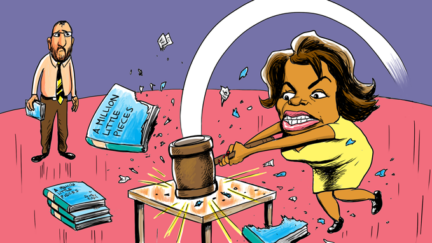
A Million Little Pieces
James Frey’s popular memoir stirred controversy and media attention after it was revealed to contain numerous exaggerations and fabrications.
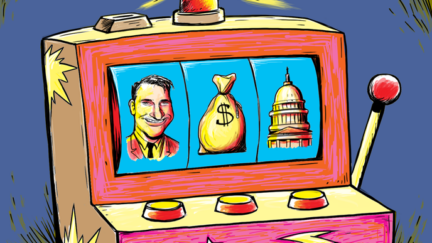
Abramoff: Lobbying Congress
Super-lobbyist Abramoff was caught in a scheme to lobby against his own clients. Was a corrupt individual or a corrupt system – or both – to blame?
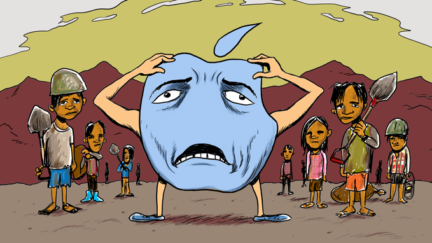
Apple Suppliers & Labor Practices
Is tech company Apple, Inc. ethically obligated to oversee the questionable working conditions of other companies further down their supply chain?
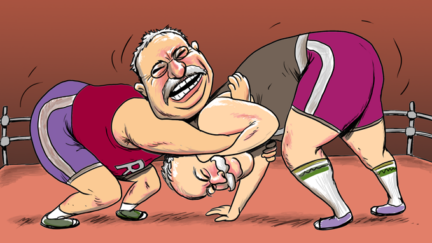
Approaching the Presidency: Roosevelt & Taft
Some presidents view their responsibilities in strictly legal terms, others according to duty. Roosevelt and Taft took two extreme approaches.
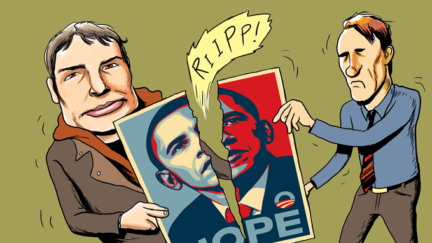
Appropriating “Hope”
Fairey’s portrait of Barack Obama raised debate over the extent to which an artist can use and modify another’s artistic work, yet still call it one’s own.

Arctic Offshore Drilling
Competing groups frame the debate over oil drilling off Alaska’s coast in varying ways depending on their environmental and economic interests.

Banning Burkas: Freedom or Discrimination?
The French law banning women from wearing burkas in public sparked debate about discrimination and freedom of religion.
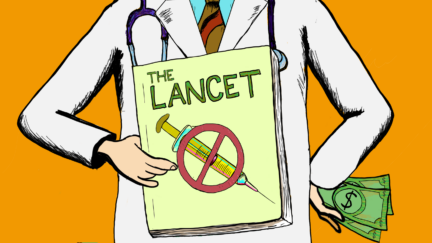
Birthing Vaccine Skepticism
Wakefield published an article riddled with inaccuracies and conflicts of interest that created significant vaccine hesitancy regarding the MMR vaccine.
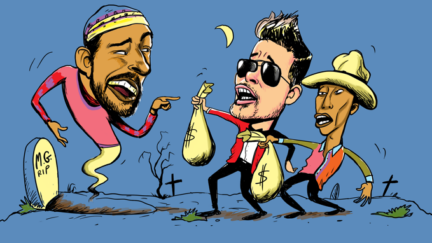
Blurred Lines of Copyright
Marvin Gaye’s Estate won a lawsuit against Robin Thicke and Pharrell Williams for the hit song “Blurred Lines,” which had a similar feel to one of his songs.
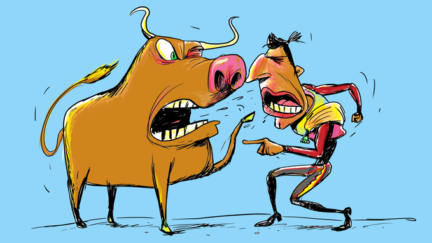
Bullfighting: Art or Not?
Bullfighting has been a prominent cultural and artistic event for centuries, but in recent decades it has faced increasing criticism for animal rights’ abuse.

Buying Green: Consumer Behavior
Do purchasing green products, such as organic foods and electric cars, give consumers the moral license to indulge in unethical behavior?

Cadavers in Car Safety Research
Engineers at Heidelberg University insist that the use of human cadavers in car safety research is ethical because their research can save lives.
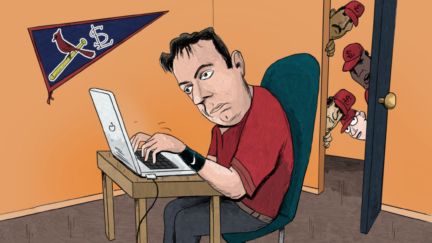
Cardinals’ Computer Hacking
St. Louis Cardinals scouting director Chris Correa hacked into the Houston Astros’ webmail system, leading to legal repercussions and a lifetime ban from MLB.
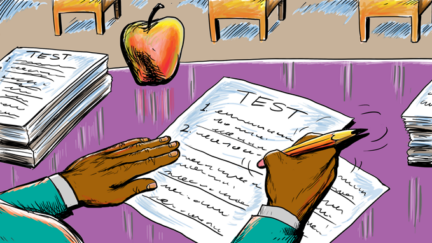
Cheating: Atlanta’s School Scandal
Teachers and administrators at Parks Middle School adjust struggling students’ test scores in an effort to save their school from closure.
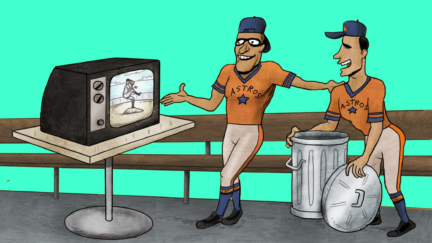
Cheating: Sign-Stealing in MLB
The Houston Astros’ sign-stealing scheme rocked the baseball world, leading to a game-changing MLB investigation and fallout.
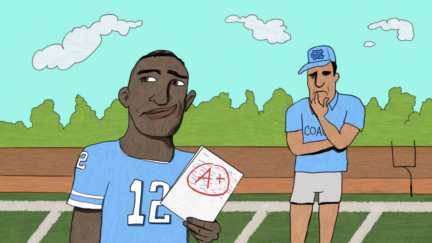
Cheating: UNC’s Academic Fraud
UNC’s academic fraud scandal uncovered an 18-year scheme of unchecked coursework and fraudulent classes that enabled student-athletes to play sports.
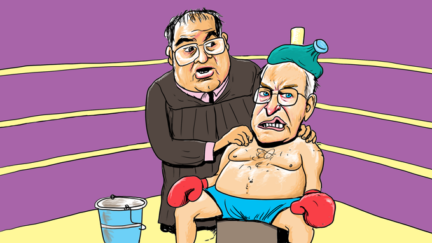
Cheney v. U.S. District Court
A controversial case focuses on Justice Scalia’s personal friendship with Vice President Cheney and the possible conflict of interest it poses to the case.
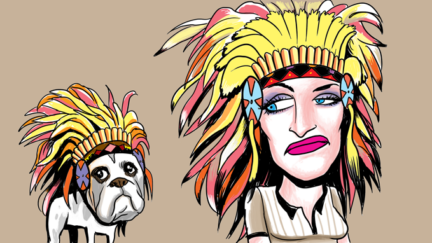
Christina Fallin: “Appropriate Culturation?”
After Fallin posted a picture of herself wearing a Plain’s headdress on social media, uproar emerged over cultural appropriation and Fallin’s intentions.

Climate Change & the Paris Deal
While climate change poses many abstract problems, the actions (or inactions) of today’s populations will have tangible effects on future generations.
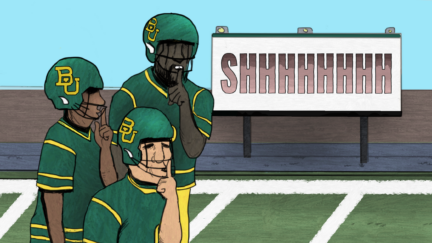
Cover-Up on Campus
While the Baylor University football team was winning on the field, university officials failed to take action when allegations of sexual assault by student athletes emerged.

Covering Female Athletes
Sports Illustrated stirs controversy when their cover photo of an Olympic skier seems to focus more on her physical appearance than her athletic abilities.
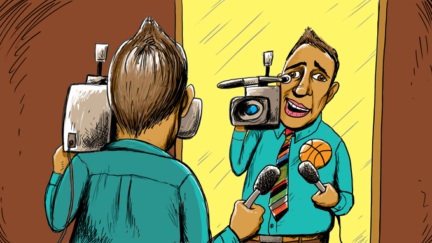
Covering Yourself? Journalists and the Bowl Championship
Can news outlets covering the Bowl Championship Series fairly report sports news if their own polls were used to create the news?
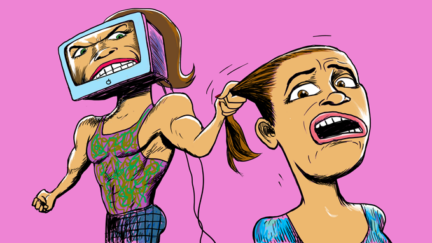
Cyber Harassment
After a student defames a middle school teacher on social media, the teacher confronts the student in class and posts a video of the confrontation online.

Defending Freedom of Tweets?
Running back Rashard Mendenhall receives backlash from fans after criticizing the celebration of the assassination of Osama Bin Laden in a tweet.

Dennis Kozlowski: Living Large
Dennis Kozlowski was an effective leader for Tyco in his first few years as CEO, but eventually faced criminal charges over his use of company assets.
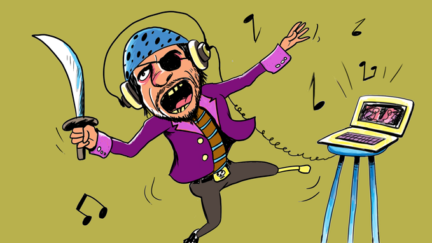
Digital Downloads
File-sharing program Napster sparked debate over the legal and ethical dimensions of downloading unauthorized copies of copyrighted music.
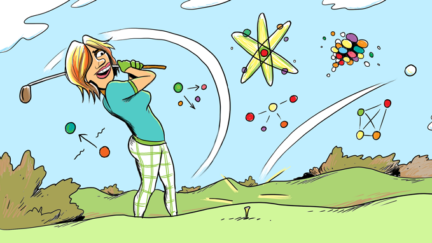
Dr. V’s Magical Putter
Journalist Caleb Hannan outed Dr. V as a trans woman, sparking debate over the ethics of Hannan’s reporting, as well its role in Dr. V’s suicide.
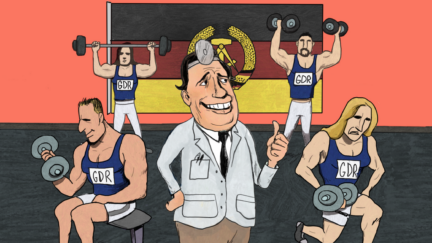
East Germany’s Doping Machine
From 1968 to the late 1980s, East Germany (GDR) doped some 9,000 athletes to gain success in international athletic competitions despite being aware of the unfortunate side effects.
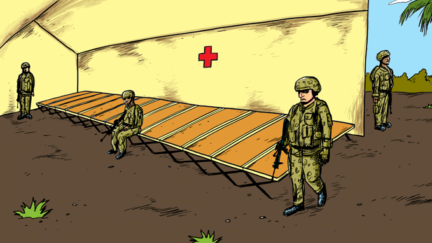
Ebola & American Intervention
Did the dispatch of U.S. military units to Liberia to aid in humanitarian relief during the Ebola epidemic help or hinder the process?
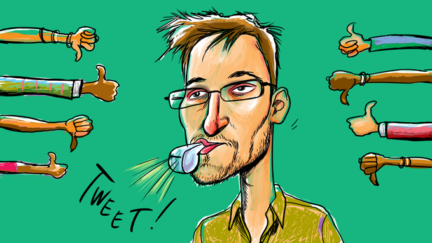
Edward Snowden: Traitor or Hero?
Was Edward Snowden’s release of confidential government documents ethically justifiable?
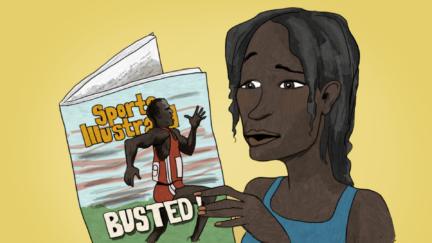
Ethical Pitfalls in Action
Why do good people do bad things? Behavioral ethics is the science of moral decision-making, which explores why and how people make the ethical (and unethical) decisions that they do.

Ethical Use of Home DNA Testing
The rising popularity of at-home DNA testing kits raises questions about privacy and consumer rights.
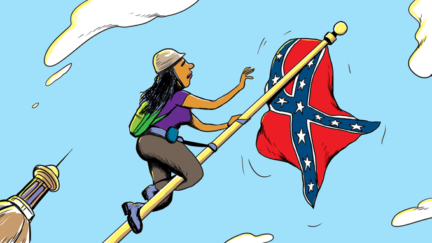
Flying the Confederate Flag
A heated debate ensues over whether or not the Confederate flag should be removed from the South Carolina State House grounds.
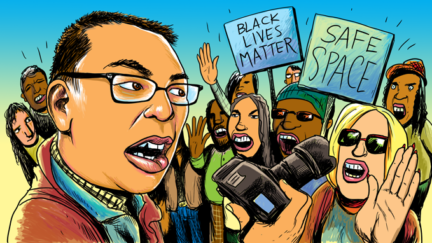
Freedom of Speech on Campus
In the wake of racially motivated offenses, student protests sparked debate over the roles of free speech, deliberation, and tolerance on campus.

Freedom vs. Duty in Clinical Social Work
What should social workers do when their personal values come in conflict with the clients they are meant to serve?
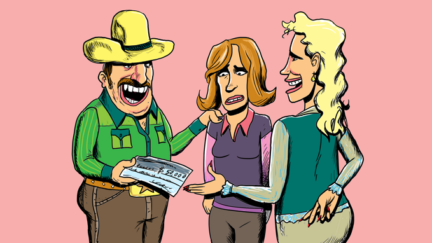
Full Disclosure: Manipulating Donors
When an intern witnesses a donor making a large gift to a non-profit organization under misleading circumstances, she struggles with what to do.
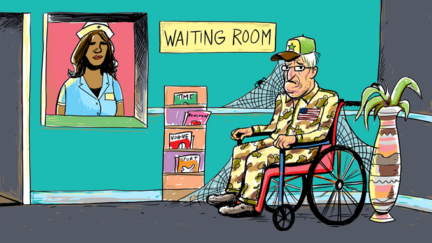
Gaming the System: The VA Scandal
The Veterans Administration’s incentives were meant to spur more efficient and productive healthcare, but not all administrators complied as intended.

German Police Battalion 101
During the Holocaust, ordinary Germans became willing killers even though they could have opted out from murdering their Jewish neighbors.
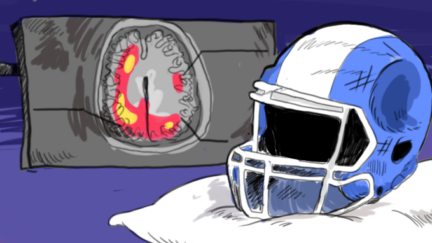
Head Injuries & American Football
Many studies have linked traumatic brain injuries and related conditions to American football, creating controversy around the safety of the sport.

Head Injuries & the NFL
American football is a rough and dangerous game and its impact on the players’ brain health has sparked a hotly contested debate.

Healthcare Obligations: Personal vs. Institutional
A medical doctor must make a difficult decision when informing patients of the effectiveness of flu shots while upholding institutional recommendations.

High Stakes Testing
In the wake of the No Child Left Behind Act, parents, teachers, and school administrators take different positions on how to assess student achievement.
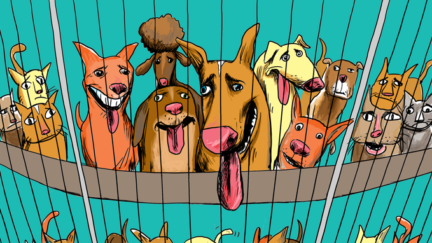
In-FUR-mercials: Advertising & Adoption
When the Lied Animal Shelter faces a spike in animal intake, an advertising agency uses its moral imagination to increase pet adoptions.

Krogh & the Watergate Scandal
Egil Krogh was a young lawyer working for the Nixon Administration whose ethics faded from view when asked to play a part in the Watergate break-in.
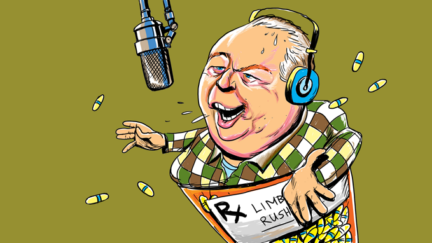
Limbaugh on Drug Addiction
Radio talk show host Rush Limbaugh argued that drug abuse was a choice, not a disease. He later became addicted to painkillers.
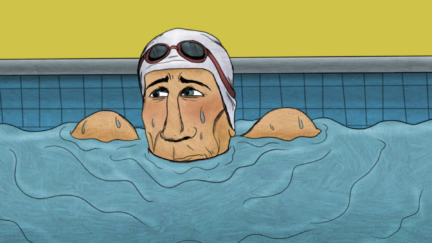
U.S. Olympic swimmer Ryan Lochte’s “over-exaggeration” of an incident at the 2016 Rio Olympics led to very real consequences.

Meet Me at Starbucks
Two black men were arrested after an employee called the police on them, prompting Starbucks to implement “racial-bias” training across all its stores.
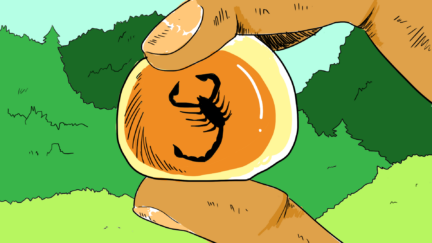
Myanmar Amber
Buying amber could potentially fund an ethnic civil war, but refraining allows collectors to acquire important specimens that could be used for research.

Negotiating Bankruptcy
Bankruptcy lawyer Gellene successfully represented a mining company during a major reorganization, but failed to disclose potential conflicts of interest.
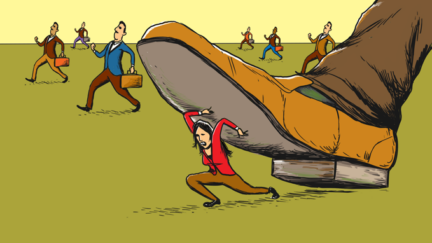
Pao & Gender Bias
Ellen Pao stirred debate in the venture capital and tech industries when she filed a lawsuit against her employer on grounds of gender discrimination.

Pardoning Nixon
One month after Richard Nixon resigned from the presidency, Gerald Ford made the controversial decision to issue Nixon a full pardon.

Patient Autonomy & Informed Consent
Nursing staff and family members struggle with informed consent when taking care of a patient who has been deemed legally incompetent.

Prenatal Diagnosis & Parental Choice
Debate has emerged over the ethics of prenatal diagnosis and reproductive freedom in instances where testing has revealed genetic abnormalities.
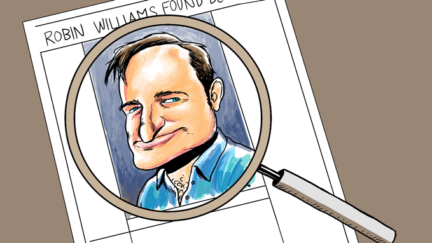
Reporting on Robin Williams
After Robin Williams took his own life, news media covered the story in great detail, leading many to argue that such reporting violated the family’s privacy.

Responding to Child Migration
An influx of children migrants posed logistical and ethical dilemmas for U.S. authorities while intensifying ongoing debate about immigration.
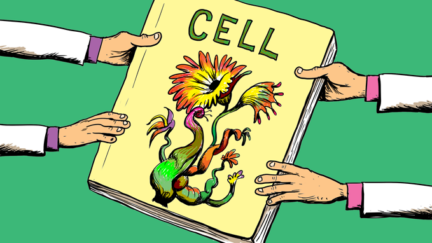
Retracting Research: The Case of Chandok v. Klessig
A researcher makes the difficult decision to retract a published, peer-reviewed article after the original research results cannot be reproduced.

Sacking Social Media in College Sports
In the wake of questionable social media use by college athletes, the head coach at University of South Carolina bans his players from using Twitter.
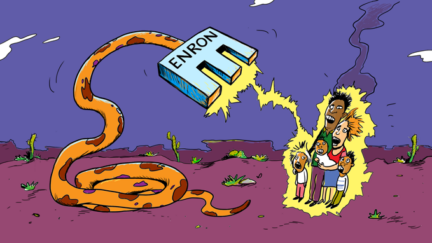
Selling Enron
Following the deregulation of electricity markets in California, private energy company Enron profited greatly, but at a dire cost.

Snyder v. Phelps
Freedom of speech was put on trial in a case involving the Westboro Baptist Church and their protesting at the funeral of U.S. Marine Matthew Snyder.
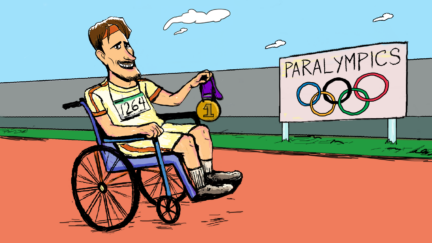
Something Fishy at the Paralympics
Rampant cheating has plagued the Paralympics over the years, compromising the credibility and sportsmanship of Paralympian athletes.

Sports Blogs: The Wild West of Sports Journalism?
Deadspin pays an anonymous source for information related to NFL star Brett Favre, sparking debate over the ethics of “checkbook journalism.”

Stangl & the Holocaust
Franz Stangl was the most effective Nazi administrator in Poland, killing nearly one million Jews at Treblinka, but he claimed he was simply following orders.
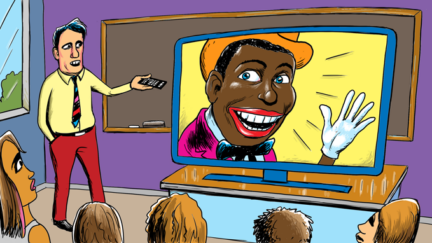
Teaching Blackface: A Lesson on Stereotypes
A teacher was put on leave for showing a blackface video during a lesson on racial segregation, sparking discussion over how to teach about stereotypes.
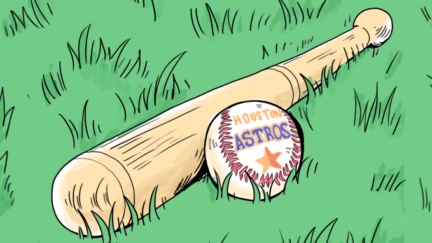
The Astros’ Sign-Stealing Scandal
The Houston Astros rode a wave of success, culminating in a World Series win, but it all came crashing down when their sign-stealing scheme was revealed.

The Central Park Five
Despite the indisputable and overwhelming evidence of the innocence of the Central Park Five, some involved in the case refuse to believe it.

The CIA Leak
Legal and political fallout follows from the leak of classified information that led to the identification of CIA agent Valerie Plame.

The Collapse of Barings Bank
When faced with growing losses, investment banker Nick Leeson took big risks in an attempt to get out from under the losses. He lost.

The Costco Model
How can companies promote positive treatment of employees and benefit from leading with the best practices? Costco offers a model.
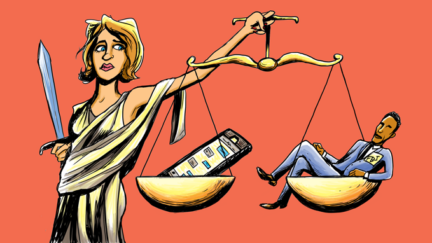
The FBI & Apple Security vs. Privacy
How can tech companies and government organizations strike a balance between maintaining national security and protecting user privacy?
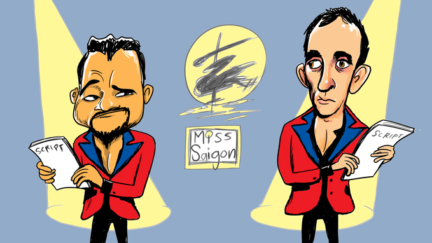
The Miss Saigon Controversy
When a white actor was cast for the half-French, half-Vietnamese character in the Broadway production of Miss Saigon , debate ensued.

The Sandusky Scandal
Following the conviction of assistant coach Jerry Sandusky for sexual abuse, debate continues on how much university officials and head coach Joe Paterno knew of the crimes.

The Varsity Blues Scandal
A college admissions prep advisor told wealthy parents that while there were front doors into universities and back doors, he had created a side door that was worth exploring.
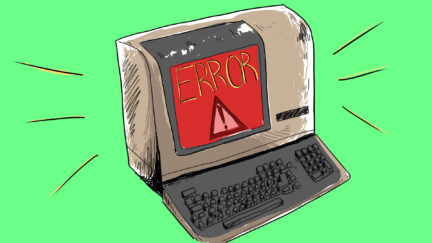
Providing radiation therapy to cancer patients, Therac-25 had malfunctions that resulted in 6 deaths. Who is accountable when technology causes harm?

Welfare Reform
The Welfare Reform Act changed how welfare operated, intensifying debate over the government’s role in supporting the poor through direct aid.

Wells Fargo and Moral Emotions
In a settlement with regulators, Wells Fargo Bank admitted that it had created as many as two million accounts for customers without their permission.
Stay Informed
Support our work.

Five Famous Cases Cracked by Forensic Psychologists
- Published December 1, 2016
- Last Updated May 19, 2021
- Read Time 3 mins
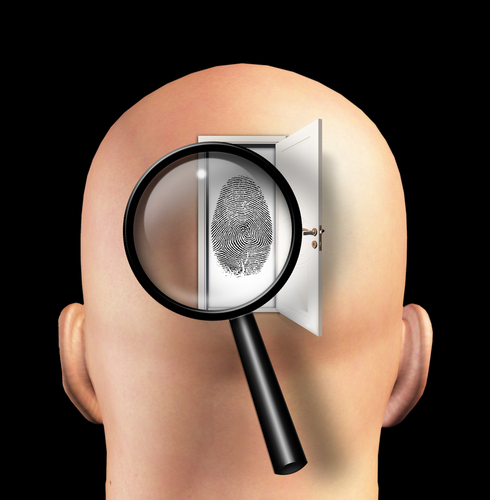
An understanding of the criminal mind is one of the most useful tools in solving crimes, which becomes apparent in these five famous cases cracked by forensic psychologists. Although techniques are becoming more sophisticated every year, forensic psychology has a long and storied history.
1. Ted Bundy
A psychologist could spend a lifetime examining the twisted mind of Ted Bundy, one of America’s most notorious and charismatic killers. Luckily, several forensic psychologists used their expertise to crack this famous case. Over time, Ted Bundy’s brutal attacks and killings became less careful and more frequent. Their psychological profile, which benefited greatly from a former girlfriend’s information, eventually ended the nationwide manhunt for Bundy and even linked him to other unsolved murders.
2. John Wayne Gacy
Although complaints and suspicions from neighbors were ultimately what ended “killer clown” John Wayne Gacy’s shocking killing spree, forensic psychologists ensured that the culprit in this famous case didn’t go free on a bogus insanity plea. Through a series of interviews, psychologists on the case were able to determine that Gacy’s murders involved premeditation and a detailed plan to hide his victims bodies. Without forensic psychologists assistance in this case, traumatized families may have never experienced the satisfaction of seeing Gacy punished for his crimes.
3. Explosions at Radio City Music Hall
An ongoing series of bombings at New York City’s famed Radio City Music Hall is an intriguing case that’s often forgotten these days. This case, which involved more than a dozen explosions between 1940 and 1950, proved so problematic for police that it was one of the inspirations for the development of the Federal Bureau of Investigation. Psychologist James Brussel was able to determine that due to the intricacy and knowledge of the explosive devices, the bomber was almost definitely an engineer, most likely at Con Edison. This profile directed the police towards George Metesky. The remarkable accuracy and efficacy of the forensic psychologist’s profile increased the demand for these experts across the nation.
4. Aileen Wuornos
The case of serial killer Aileen Wuornos, who you might know as the inspiration for Charlize Theron’s mesmerizing performance in “Monster,” may have never been solved without a famous use of forensic psychology. Psychologists were able to determine a consistent motivation for Wuorno’s killings–her intense fear of losing her relationship with her long-time partner Tyria Moore. This profile proved to be incredibly accurate when each of Wuornos’s killings was later linked to rocky periods and short-term separations between the lovers.
5. Andrei Chikatilo
Andrei Chikatilo’s reign of terror had Russian police mystified for more than two decades, until it became one of these famous cases cracked by forensic psychologists. To date, Chikatilo has been linked with the murders of 53 Russian women and children. Growing frustrated with the lack of promising leads, Viktor Burakov, the case’s chief investigator decided to employ a new method. He enlisted Dr. Alexander Bukhanovsky’s help in compiling a psychological profile for the killer. This information proved invaluable in narrowing down their list of suspects down to Chikatilo himself, who confessed to his horrific crimes in 1990.
The Ongoing Importance of Forensic Psychology
Although many people probably think of Clarice Starling in the movie “Silence of the Lambs,” when they think of forensic psychology, it’s not just a plot device in a movie. The real-life psychological profiles from these five famous cases that were cracked by forensic psychologists were the difference between letting a case go cold and capturing a criminal.
Top 20 Graduate Degree Programs in Forensic Psychology
Trending now
Writing A Case Study
Case Study Examples
Brilliant Case Study Examples and Templates For Your Help
15 min read

People also read
A Complete Case Study Writing Guide With Examples
Simple Case Study Format for Students to Follow
Understand the Types of Case Study Here
It’s no surprise that writing a case study is one of the most challenging academic tasks for students. You’re definitely not alone here!
Most people don't realize that there are specific guidelines to follow when writing a case study. If you don't know where to start, it's easy to get overwhelmed and give up before you even begin.
Don't worry! Let us help you out!
We've collected over 25 free case study examples with solutions just for you. These samples with solutions will help you win over your panel and score high marks on your case studies.
So, what are you waiting for? Let's dive in and learn the secrets to writing a successful case study.
- 1. An Overview of Case Studies
- 2. Case Study Examples for Students
- 3. Business Case Study Examples
- 4. Medical Case Study Examples
- 5. Psychology Case Study Examples
- 6. Sales Case Study Examples
- 7. Interview Case Study Examples
- 8. Marketing Case Study Examples
- 9. Tips to Write a Good Case Study
An Overview of Case Studies
A case study is a research method used to study a particular individual, group, or situation in depth. It involves analyzing and interpreting data from a variety of sources to gain insight into the subject being studied.
Case studies are often used in psychology, business, and education to explore complicated problems and find solutions. They usually have detailed descriptions of the subject, background info, and an analysis of the main issues.
The goal of a case study is to provide a comprehensive understanding of the subject. Typically, case studies can be divided into three parts, challenges, solutions, and results.
Here is a case study sample PDF so you can have a clearer understanding of what a case study actually is:
Case Study Sample PDF
How to Write a Case Study Examples
Learn how to write a case study with the help of our comprehensive case study guide.
Case Study Examples for Students
Quite often, students are asked to present case studies in their academic journeys. The reason instructors assign case studies is for students to sharpen their critical analysis skills, understand how companies make profits, etc.
Below are some case study examples in research, suitable for students:
Case Study Example in Software Engineering
Qualitative Research Case Study Sample
Software Quality Assurance Case Study
Social Work Case Study Example
Ethical Case Study
Case Study Example PDF
These examples can guide you on how to structure and format your own case studies.
Struggling with formatting your case study? Check this case study format guide and perfect your document’s structure today.
Business Case Study Examples
A business case study examines a business’s specific challenge or goal and how it should be solved. Business case studies usually focus on several details related to the initial challenge and proposed solution.
To help you out, here are some samples so you can create case studies that are related to businesses:
Here are some more business case study examples:
Business Case Studies PDF
Business Case Studies Example
Typically, a business case study discovers one of your customer's stories and how you solved a problem for them. It allows your prospects to see how your solutions address their needs.
Medical Case Study Examples
Medical case studies are an essential part of medical education. They help students to understand how to diagnose and treat patients.
Here are some medical case study examples to help you.
Medical Case Study Example
Nursing Case Study Example
Want to understand the various types of case studies? Check out our types of case study blog to select the perfect type.
Psychology Case Study Examples
Case studies are a great way of investigating individuals with psychological abnormalities. This is why it is a very common assignment in psychology courses.
By examining all the aspects of your subject’s life, you discover the possible causes of exhibiting such behavior.
For your help, here are some interesting psychology case study examples:
Psychology Case Study Example
Mental Health Case Study Example
Sales Case Study Examples
Case studies are important tools for sales teams’ performance improvement. By examining sales successes, teams can gain insights into effective strategies and create action plans to employ similar tactics.
By researching case studies of successful sales campaigns, sales teams can more accurately identify challenges and develop solutions.
Sales Case Study Example
Interview Case Study Examples
Interview case studies provide businesses with invaluable information. This data allows them to make informed decisions related to certain markets or subjects.
Interview Case Study Example
Marketing Case Study Examples
Marketing case studies are real-life stories that showcase how a business solves a problem. They typically discuss how a business achieves a goal using a specific marketing strategy or tactic.
They typically describe a challenge faced by a business, the solution implemented, and the results achieved.
This is a short sample marketing case study for you to get an idea of what an actual marketing case study looks like.
Here are some more popular marketing studies that show how companies use case studies as a means of marketing and promotion:
“Chevrolet Discover the Unexpected” by Carol H. Williams
This case study explores Chevrolet's “ DTU Journalism Fellows ” program. The case study uses the initials “DTU” to generate interest and encourage readers to learn more.
Multiple types of media, such as images and videos, are used to explain the challenges faced. The case study concludes with an overview of the achievements that were met.
Key points from the case study include:
- Using a well-known brand name in the title can create interest.
- Combining different media types, such as headings, images, and videos, can help engage readers and make the content more memorable.
- Providing a summary of the key achievements at the end of the case study can help readers better understand the project's impact.
“The Met” by Fantasy
“ The Met ” by Fantasy is a fictional redesign of the Metropolitan Museum of Art in New York City, created by the design studio Fantasy. The case study clearly and simply showcases the museum's website redesign.
The Met emphasizes the website’s features and interface by showcasing each section of the interface individually, allowing the readers to concentrate on the significant elements.
For those who prefer text, each feature includes an objective description. The case study also includes a “Contact Us” call-to-action at the bottom of the page, inviting visitors to contact the company.
Key points from this “The Met” include:
- Keeping the case study simple and clean can help readers focus on the most important aspects.
- Presenting the features and solutions with a visual showcase can be more effective than writing a lot of text.
- Including a clear call-to-action at the end of the case study can encourage visitors to contact the company for more information.
“Better Experiences for All” by Herman Miller
Herman Miller's minimalist approach to furniture design translates to their case study, “ Better Experiences for All ”, for a Dubai hospital. The page features a captivating video with closed-captioning and expandable text for accessibility.
The case study presents a wealth of information in a concise format, enabling users to grasp the complexities of the strategy with ease. It concludes with a client testimonial and a list of furniture items purchased from the brand.
Key points from the “Better Experiences” include:
- Make sure your case study is user-friendly by including accessibility features like closed captioning and expandable text.
- Include a list of products that were used in the project to guide potential customers.
“NetApp” by Evisort
Evisort's case study on “ NetApp ” stands out for its informative and compelling approach. The study begins with a client-centric overview of NetApp, strategically directing attention to the client rather than the company or team involved.
The case study incorporates client quotes and explores NetApp’s challenges during COVID-19. Evisort showcases its value as a client partner by showing how its services supported NetApp through difficult times.
- Provide an overview of the company in the client’s words, and put focus on the customer.
- Highlight how your services can help clients during challenging times.
- Make your case study accessible by providing it in various formats.
“Red Sox Season Campaign,” by CTP Boston
The “ Red Sox Season Campaign ” showcases a perfect blend of different media, such as video, text, and images. Upon visiting the page, the video plays automatically, there are videos of Red Sox players, their images, and print ads that can be enlarged with a click.
The page features an intuitive design and invites viewers to appreciate CTP's well-rounded campaign for Boston's beloved baseball team. There’s also a CTA that prompts viewers to learn how CTP can create a similar campaign for their brand.
Some key points to take away from the “Red Sox Season Campaign”:
- Including a variety of media such as video, images, and text can make your case study more engaging and compelling.
- Include a call-to-action at the end of your study that encourages viewers to take the next step towards becoming a customer or prospect.
“Airbnb + Zendesk” by Zendesk
The case study by Zendesk, titled “ Airbnb + Zendesk : Building a powerful solution together,” showcases a true partnership between Airbnb and Zendesk.
The article begins with an intriguing opening statement, “Halfway around the globe is a place to stay with your name on it. At least for a weekend,” and uses stunning images of beautiful Airbnb locations to captivate readers.
Instead of solely highlighting Zendesk's product, the case study is crafted to tell a good story and highlight Airbnb's service in detail. This strategy makes the case study more authentic and relatable.
Some key points to take away from this case study are:
- Use client's offerings' images rather than just screenshots of your own product or service.
- To begin the case study, it is recommended to include a distinct CTA. For instance, Zendesk presents two alternatives, namely to initiate a trial or seek a solution.
“Influencer Marketing” by Trend and WarbyParker
The case study "Influencer Marketing" by Trend and Warby Parker highlights the potential of influencer content marketing, even when working with a limited budget.
The “Wearing Warby” campaign involved influencers wearing Warby Parker glasses during their daily activities, providing a glimpse of the brand's products in use.
This strategy enhanced the brand's relatability with influencers' followers. While not detailing specific tactics, the case study effectively illustrates the impact of third-person case studies in showcasing campaign results.
Key points to take away from this case study are:
- Influencer marketing can be effective even with a limited budget.
- Showcasing products being used in everyday life can make a brand more approachable and relatable.
- Third-person case studies can be useful in highlighting the success of a campaign.
Marketing Case Study Example
Marketing Case Study Template
Now that you have read multiple case study examples, hop on to our tips.
Tips to Write a Good Case Study
Here are some note-worthy tips to craft a winning case study
- Define the purpose of the case study This will help you to focus on the most important aspects of the case. The case study objective helps to ensure that your finished product is concise and to the point.
- Choose a real-life example. One of the best ways to write a successful case study is to choose a real-life example. This will give your readers a chance to see how the concepts apply in a real-world setting.
- Keep it brief. This means that you should only include information that is directly relevant to your topic and avoid adding unnecessary details.
- Use strong evidence. To make your case study convincing, you will need to use strong evidence. This can include statistics, data from research studies, or quotes from experts in the field.
- Edit and proofread your work. Before you submit your case study, be sure to edit and proofread your work carefully. This will help to ensure that there are no errors and that your paper is clear and concise.
There you go!
We’re sure that now you have secrets to writing a great case study at your fingertips! This blog teaches the key guidelines of various case studies with samples. So grab your pen and start crafting a winning case study right away!
Having said that, we do understand that some of you might be having a hard time writing compelling case studies.
But worry not! Our expert case study writing service is here to take all your case-writing blues away!
With 100% thorough research guaranteed, our online essay service can craft an amazing case study within 24 hours!
So why delay? Let us help you shine in the eyes of your instructor!

Write Essay Within 60 Seconds!

Dr. Barbara is a highly experienced writer and author who holds a Ph.D. degree in public health from an Ivy League school. She has worked in the medical field for many years, conducting extensive research on various health topics. Her writing has been featured in several top-tier publications.

Paper Due? Why Suffer? That’s our Job!
Keep reading


The Search for Meaning
Why Our Brains Are Built to Search
- Find a Therapist
Verified by Psychology Today
- Psychiatrists
- Treatment Centers
- Support Groups
Professionals
Therapists Sign Up | Login
Psychology Today: Health, Help, Happiness + Find a Therapist
Today’s essentials today’s essential reads.

Perfectionism
The bad advice of "always be useful".
Leon Garber LMHC on May 25, 2024 in Perfectionism
Being useful isn't always good and can, sometimes, backfire. Perfectionists often struggle to deeply connect with others due to their preoccupations with their standards.

- Relationships
How to Make Sense of a Relationship Betrayal
Susan Krauss Whitbourne PhD, ABPP on May 25, 2024 in Fulfillment at Any Age
Being lied to or exploited by someone close to you can be an unnerving experience. New research unpacks the emotions of the betrayer, showing who you can and cannot trust.

AI Finds Astonishing Male/Female Differences in Human Brain
Leonard Sax M.D., Ph.D. on May 24, 2024 in Sax on Sex
Stanford neuroscientists document large male/female differences in brain connectivity.

- Personality
Have You Been a Target or Victim of Mate Poaching?
Martin Graff Ph.D. on May 24, 2024 in Love, Digitally
Is mate poaching just opportunistic behavior, or does personality play a role? Here's what the research says.

What Can We Do to Improve Concert Goers’s Experience?
Lu Wang Ph.D. on May 25, 2024 in Music Is Number in Space
Can new technology help classical music appeal to a broad contemporary audience?

Artificial Intelligence
The shift from analog to digital to cognitive.
John Nosta on May 25, 2024 in The Digital Self
As AI and LLMs usher in The Cognitive Age, humanity faces an existential question: will our own cognition become obsolete, or will we evolve alongside our digital partners?

Why We Like Cryptic Word Puzzles
Marcel Danesi Ph.D. on May 25, 2024 in Brain Workout
The clues used for creating cryptic crosswords constitute in themselves a genre of word puzzles. Solving these invariably produces a sense of pleasure that is exceptional.

The Wisdom of Resentment: From Toxic to Tonic
Jessica Del Pozo, Ph.D. on May 25, 2024 in Being Awake Better
Resentment is often labeled as a toxic feeling. However, trusting the inherent wisdom of our emotions can guide us toward healing and growth.

7 Ways to Manage Crisis Calls From a Struggling Adult Child
Jeffrey Bernstein Ph.D. on May 25, 2024 in Liking the Child You Love
When your phone buzzes with the familiar number of your adult child in distress, navigating the conversation can feel like walking a tightrope. Here's how to keep your balance.

What I Learned From Missing the Solar Eclipse
Nadja Halilbegovich on May 25, 2024 in From Surviving to Thriving
My disappointment taught me the value of radical acceptance and that our inner narratives define our experience.

Autistic Youth Deserve Freedom from Abuse
Jennifer Gerlach LCSW on May 25, 2024 in Beyond Mental Health
Autistic youth are more than twice as likely to experience abuse than their neurotypical counterparts. How can systems better serve these families?

Mindfulness
5 ways to find focus in the age of distractions.
Anita Owusu MSW, RSW on May 25, 2024 in Your Inner World
Master the art of presence and single-tasking to combat overwhelm, reclaim focus, and rediscover the joy of being fully present in every moment.

5 Factors in Finding Passion in Your Career
Ran D. Anbar M.D. on May 25, 2024 in Understanding Hypnosis
Keys to finding one’s passion include patience, willingness to explore many new experiences, and engaging in activities that allow you to joyfully express your life values.
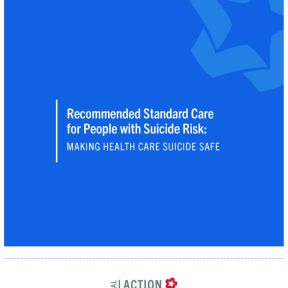
Recommended Standard Care for People With Suicide Risk
David A. Jobes Ph.D., ABPP on May 25, 2024 in The Psychology of Life
Survey research of hospitals shows a failure to use common sense evidence-based approaches for suicidal risk while proven psychological approaches for suicidality are rarely used.

Can You Use Your Phone While Feeding Your Baby?
Corinne Masur Psy.D. on May 25, 2024 in Parenting Matters
Looking at your phone while you are with your baby, your young child, or even your teenager deprives them of the time you'd spend together in the present.

Visualize Your Perfect Day to Make It Come True
Susanna Newsonen on May 25, 2024 in The Path to Passionate Happiness
What could you do tomorrow or this weekend to bring your perfect day into your reality?

Ethics and Morality
Discover your evil side.
Rafa Euba on May 25, 2024 in You Are Not Meant To Be Happy
Ordinary people may behave cruelly in exceptional circumstances

A Field Guide to Life's Big Lessons, Indian Style
Rahul Bhandari on May 25, 2024 in Turning Adversity into Advantage
Dive into Indian wisdom with quirky phrases that offer life lessons in action, communication, and self-acceptance!

Addressing Common Errors New EFT Relational Therapists Make
Jason N. Linder, PsyD on May 24, 2024 in Relationship and Trauma Insights
Feeling stuck with a case as an emotionally focused therapist? Here are five lessons from a supervisor's perspective to help you work smarter, not harder.

How Sunlight Heals Us
It’s Not Just Vitamin D

Weight Loss Drugs Make People Feel Good—and Bad
Alexandra Brewis and Emily Mendenhall Ph.D. on May 24, 2024 in Diagnosis: Human
Weight loss drugs are transforming many people physically. But how we feel about them is an important side effect.
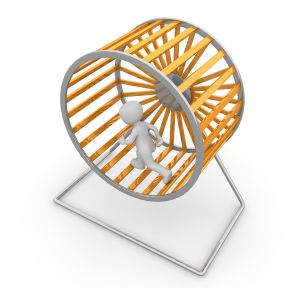
Toxic Motivation: Recognize and Recover From the Cycle
Jake Breeden on May 24, 2024 in Detoxing Management
Toxic workplace tactics like threats and sacrifice may boost short-term productivity, but at a severe human cost.

How to Work Together as a Team
Robert Taibbi L.C.S.W. on May 24, 2024 in Fixing Families
We hear a lot of talk about the need to work together as a team as partners and parents, but what does that mean? Here are some key principles and ways to get there.

Early-Life Trauma, Adult Relationships, and Sexual Behavior
Robert Weiss Ph.D., LCSW, CSAT on May 24, 2024 in Love and Sex in the Digital Age
Many people fail to see the connection between childhood trauma and adult-life thoughts and actions. Thus, they may think of themselves as crazy.

Is It Ever Okay to Treat a Couple and an Individual in It?
David J. Ley Ph.D. on May 24, 2024 in Women Who Stray
The question of whether a therapist can or should provide conjoint individual and couples therapy is a hotly debated issue with no clear guidelines or answers.

Selfies and the Self
Andrea Mathews LPC, NCC on May 24, 2024 in Traversing the Inner Terrain
Is the selfie a way to authenticate the self?

When You Sense Someone’s Upset With You, Try This
Jeff Wetzler Ed.D. on May 24, 2024 in Unexpected Breakthroughs
Personal Perspective: What can you do when you’re pretty sure someone is upset with you, but they won’t tell you what's really going on?

Misogyny Disguised as Attraction Should Be Labeled HAZMAT
Gina Barreca Ph.D. on May 24, 2024 in Snow White Doesn't Live Here Anymore
You turn to self-hatred because it's easier than hating everybody else. Maybe if you hate yourself, you have the power to change what can happen. Emotional chaos is overwhelming.

The Art of Deep Empathic Listening
Assael Romanelli Ph.D. on May 24, 2024 in The Other Side of Relationships
Mature intimacy is the ability to “feel, together.” Here are six practices for deeper listening.

Finding Serenity During Angry Times
Rita Watson MPH on May 24, 2024 in With Love and Gratitude
Personal Perspective: In a world of political rantings and accusations, embracing serenity provides a reserve of hope that helps to keep anger at bay.

The Heart Break Tool Box
Natalie Cawley PsychD on May 24, 2024 in Just About Coping
You can develop a toolbox to get through your breakup, and it will help.

An Outline of the Kama Sutra
Neel Burton M.D. on May 24, 2024 in Ataraxia
Explore the lesser-known parts of India’s key text on eroticism: the 'Kama Sutra.'

3 Ways to Spot the Difference in Chemistry and Compatibility
Mark Travers Ph.D. on May 24, 2024 in Social Instincts
Chemistry pulls us in, but compatibility makes us stay.

How Can I Feel More Connected to My Partner?
Kelli Miller LCSW on May 24, 2024 in Love Hacks
Learning how to feel more connected to your partner is essential to a quality relationship.
- Find a Treatment Center
- Find a Psychiatrist
- Find a Support Group
- Find Online Therapy
- United States
- Brooklyn, NY
- Chicago, IL
- Houston, TX
- Los Angeles, CA
- New York, NY
- Portland, OR
- San Diego, CA
- San Francisco, CA
- Seattle, WA
- Washington, DC
- Asperger's
- Bipolar Disorder
- Chronic Pain
- Eating Disorders
- Passive Aggression
- Goal Setting
- Positive Psychology
- Stopping Smoking
- Low Sexual Desire
- Child Development
- Self Tests NEW
- Therapy Center
- Diagnosis Dictionary
- Types of Therapy

At any moment, someone’s aggravating behavior or our own bad luck can set us off on an emotional spiral that threatens to derail our entire day. Here’s how we can face our triggers with less reactivity so that we can get on with our lives.
- Emotional Intelligence
- Gaslighting
- Affective Forecasting
- Neuroscience

IMAGES
VIDEO
COMMENTS
One notable example is Freud's study on Little Hans. This case study explored a 5-year-old boy's fear of horses and related it back to Freud's theories about psychosexual stages. Another classic example is Genie Wiley (a pseudonym), a feral child who was subjected to severe social isolation during her early years.
Case Study. It is an in-depth study and analysis of an individual, group, community, or phenomenon. The results of a case study cannot be applied to the whole population, but they can provide insights for further studies. It often uses qualitative research methods such as observations, surveys, and interviews. It is often conducted in real-life ...
A case study is an in-depth study of one person, group, or event. In a case study, nearly every aspect of the subject's life and history is analyzed to seek patterns and causes of behavior. Case studies can be used in many different fields, including psychology, medicine, education, anthropology, political science, and social work.
Phineas Gage. One day in 1848 in Central Vermont, Phineas Gage was tamping explosives into the ground to prepare the way for a new railway line when he had a terrible accident. The detonation went ...
Kitty Genovese. Sadly, it is not really Kitty Genovese the person who has become one of psychology's classic case studies, but rather the terrible fate that befell her. In 1964 in New York, Genovese was returning home from her job as a bar maid when she was attacked and eventually murdered by Winston Mosely.
Case studies are in-depth investigations of a person, group, event, or community. Typically, data is gathered from various sources using several methods (e.g., observations & interviews). The case study research method originated in clinical medicine (the case history, i.e., the patient's personal history). In psychology, case studies are ...
Case studies are descriptions of real people. The individuals in the studies are studied intensively and often written about in medical journals and textbooks. ... Therapeutic implications of a case study. Case examples are sometimes used in therapy to determine the best course of treatment. If a typical case study from psychology aligns with ...
A case study is an in-depth psychological investigation of a single person or a group of people. Case studies are commonly used in medicine and psychology. For example, these studies often focus on people with an illness (for example, one that is rare) or people with experiences that cannot be replicated in a lab.
A psychology case study is not about generalizations or sweeping theories; it's about the intricacies of real-life situations. It's the detective work of the field, aiming to unveil the 'story behind the data' and offering profound insights into human behavior, emotions, and experiences. ... In this psychology case study example, we delve into ...
Examples of Case Studies in Psychology. Case studies in psychology provide real-life examples that illustrate psychological concepts and theories. They offer a detailed analysis of specific individuals, groups, or situations, allowing researchers to understand psychological phenomena better. Here are a few examples of case studies in psychology:
151 Case Studies: Real Stories Of People Overcoming Struggles of Mental Health. At Tracking Happiness, we're dedicated to helping others around the world overcome struggles of mental health. In 2022, we published a survey of 5,521 respondents and found: 88% of our respondents experienced mental health issues in the past year. 25% of people ...
The majority of methods in psychology rely on averaging group data to draw conclusions. In this Perspective, Nickels et al. argue that single case methodology is a valuable tool for developing and ...
A case study psychology is a type of research that uses real-life examples to help understand psychological concepts. This type of research can be used in a variety of settings, such as business, health care, education, and social services.
Revised on November 20, 2023. A case study is a detailed study of a specific subject, such as a person, group, place, event, organization, or phenomenon. Case studies are commonly used in social, educational, clinical, and business research. A case study research design usually involves qualitative methods, but quantitative methods are ...
Sara, a 35-year-old married female. Sara was referred to treatment after having a stillbirth. Sara showed symptoms of grief, or complicated bereavement, and was diagnosed with major depression, recurrent. The clinician recommended interpersonal psychotherapy (IPT) for a duration of 12 weeks. Bleiberg, K.L., & Markowitz, J.C. (2008).
A case study meaning in psychology is a qualitative research method that seeks to understand a phenomenon in a real-life setting. A researcher will use a case study if they want to answer the how ...
A case study is one of the most commonly used methodologies of social research. This article attempts to look into the various dimensions of a case study research strategy, the different epistemological strands which determine the particular case study type and approach adopted in the field, discusses the factors which can enhance the effectiveness of a case study research, and the debate ...
Case Study 3: The Social Impact. Emma, a college student suffering from chronic stress, worry, and anxiety, exhibited changes in her social behavior: Isolation: She started withdrawing from her friends and social activities, leading to feelings of loneliness and even more stress. Conflict: Her stress made her irritable, leading to increased ...
People who prefer certain types of music tend to have specific personality traits. For example, enjoying blues, jazz, and classical music suggests you may be more likely to be open to new experiences, and if you like country music, you may be more extroverted (Rentfrow et al., 2011). Intelligent owls.
Case Studies. More than 70 cases pair ethics concepts with real world situations. From journalism, performing arts, and scientific research to sports, law, and business, these case studies explore current and historic ethical dilemmas, their motivating biases, and their consequences. Each case includes discussion questions, related videos, and ...
In the present research, we introduce new dilemmas that are based on real-life events. In two studies (a European student sample and a North American MTurk sample, total N = 789), we show that the new factual dilemmas were perceived to be more realistic and less absurd than commonly used dilemmas. In addition, factual dilemmas induced higher ...
Case studies are particularly valuable for deeply understanding a subject in its real-life context. They can reveal insights into the dynamics of situations, offer a ground for testing theories, and provide a platform for learning about rare or unusual phenomena. ... For example, consider a case study in a business setting where a startup ...
1. Ted Bundy. A psychologist could spend a lifetime examining the twisted mind of Ted Bundy, one of America's most notorious and charismatic killers. Luckily, several forensic psychologists used their expertise to crack this famous case. Over time, Ted Bundy's brutal attacks and killings became less careful and more frequent.
Marketing Case Study Examples. Marketing case studies are real-life stories that showcase how a business solves a problem. They typically discuss how a business achieves a goal using a specific marketing strategy or tactic. They typically describe a challenge faced by a business, the solution implemented, and the results achieved.
View the latest from the world of psychology: from behavioral research to practical guidance on relationships, mental health and addiction. Find help from our directory of therapists ...
Dose ID uses ChatGPT Enterprise's advanced data analysis feature to automate the analysis and verify the optimal vaccine dose selected by the clinical study team, by applying standard dose selection criteria and principles. Dose ID provides a rationale, references its sources, and generates informative charts illustrating the key findings.